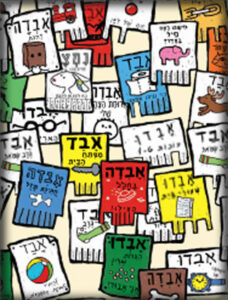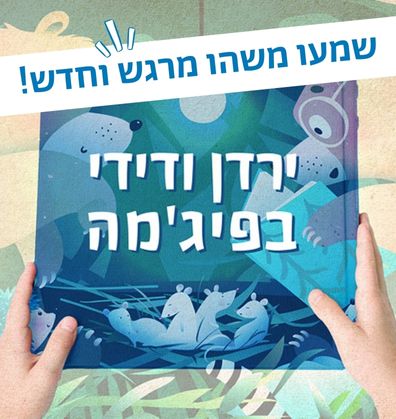אֲנִי וְעַצְמִי
סְּפָרִים
Book-Related Family Activities

One “Language” at Home – Another in Kindergarten
This book exposes children to an exciting period in history, and invites a discussion of their feelings in day-to-day situations. You can discuss with your children and ask: Why was Milka concerned and indecisive on the night before Baron de Rothschild’s visit? What do you think of the choice she made? Are there rules in kindergarten that differ from the ones you have at home too? Which ones?

How Do We Say it in Hebrew?
to the page containing the words that Mr. Yudilovitz, the teacher, sent to his friend, and try to pronounce them, or even use them in a sentence: “Can you pass me the Handtuch, please?” How about thinking together about all the non-Hebrew words we use in our daily lives and what their Hebrew alternatives are? You can try to invent new Hebrew words together too.
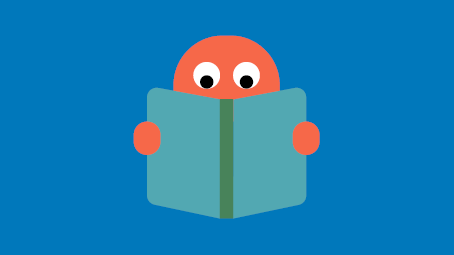
Looking for the Donkey
Have you noticed the grey donkey that appears in almost every illustration? The illustrations in this book are full of details, color, and text. You can pause on each page, look at the illustrations, and discover the things that interest you, while searching for the little donkey that accompanies this entire story.
Listen to the Story
Would you like to hear Milka speak Hebrew? Scan the code and listen to this book on the Sifriyat Pijama podcast.

Fighting and Reconciling
Talk with your children and ask: How do you feel when you fight with a friend or family member? How do you both behave during a quarrel? Can anything help you reconcile? How can we help friends who are fighting reconcile?
QR code
Scan the code to listen to a special episode on quarreling from the podcast Yarden and Didi in Pajamas.

Making Peace
This book can inspire you to take two puppets, toy cars, or any pair of items; you can even put a pair of socks on your hands. Invite your children to imagine and make up a “real fight” – what are they fighting about? How do they reconcile? Do they reconcile on their own or do they need help doing so? Now you are ready to put on a show.

Exploring and Discovering
Hyraxes and ibexes are desert animals that live in Israel. This book provides a wonderful opportunity to explore and discover! What do they look like in real life? What characterizes them? What do they enjoy eating? What other interesting facts would you like to know about them?

Arts & crafts, songs, and other activities can be found on the Sifriyat Pijama Pinterest page.

Family reading advice
Simple rhyming stories can convey a value-based, meaningful message too. We recommend using the story as a basis for discussion, allowing for opinions to be expressed and questions asked, such as “How would you have felt if you had been in a similar situation?”

“… And happiness shall be yours!”
Grandpa is happy to return home with his stars, calling them his treasure, and valuing them more than money. Following this story, you can discuss with your child and ask: “What makes you happy that money cannot buy?” Drawing? Bedtime stories? Perhaps a good-morning hug? Parents can also share – what is their treasures?
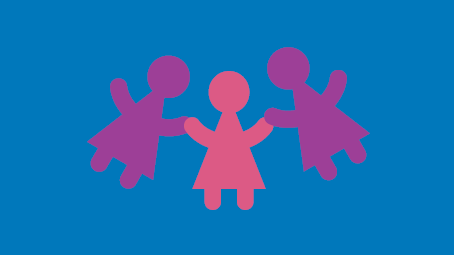
Our tree
If you were to have your very own imaginary tree – what would it grow? Hearts? Balloons? Perhaps stars too? You can draw and cut out the shape you have imagined, decorate it, and even write wishes or shared memories on it. The finished product can then be hung on a plant, branch, or tree near you.

Starwatching
We may not find a real star tree, but we can always take an evening stroll and enjoy the sight of the stars twinkling in the sky. You can take this book along with you and read it together by starlight.

QR code
Poet Leyb Morgentoy, 1905–1979, was born in Pinsk, Poland. He wrote this poem in Yiddish in 1938. Yoram Taharlev translated it, Nurit Hirsh composed music to it, and, in 1969, Chava Alberstein performed and recorded it.
Scan the QR code to listen to the song:

Family reading advice
When children first learn to read, they put tremendous effort into following the sequence of letters and flow of words. When they listen to adults — who are close to them — read to them, they can free themselves of the effort, and indulge in imagining the story or discovering new things about the book. It is, of course, recommended that children be encouraged to read on their own, but, at the same time, you should also keep reading together.

Discussion – Learning from experience
Have you ever tried building or planning something that didn’t quite come out the way you intended? How do we feel when things don’t come out quite the way we planned? What can help us in such cases? You can share with your children your own experiences when things didn’t quite go as planned, and what heled you cope.

QR code
Listen to this episode called A Great Idea, which is part of a podcast called Yarden and Didi in Pajamas in partnership with Kan Podcasts, Keren Grinspoon Israel and the Israeli Ministry of Education.

Building together
What happens when we plan first and then build? Or when we build without planning? You can try it both ways using items you have collected, Lego pieces, or anything else you have at home, and see how you feel and what the result is each time.

Drawing from our imagination
You can play an imagination drawing game. Take turns describing to the rest of your family as follows: In my imagination I see something that does… It has a… and it’s the color of… – while the rest of your family follows your description and draws it on paper. What does each drawing look like? How fascinating!

Tip for Family Reading
Children enjoy feeling all grown up. While reading a book, let your children play a part, and enhance their sense of capability: You can ask them to select a book off the shelf, hold it, turn the pages, or even tell you or one of the stories in their own words.

I Can’t
Avivi tells her mother that she cannot tidy up her room because she is too small. After reading this book, you can discuss and think together – is it easy or hard to tidy up your room? What can help you tidy it up? What are you able to do now that you were not able to do in the past because you were “too small” to do it?

Tidying up before the time is up!
You can have fun and try to break a “family record” in tidying up a room: Place various toys and items in the main room of the house, set a timer, or decide when the time will be up. Ready? Set? Go and work as a team to put all the items back where they belong as fast as you can! How long did it take? Did you finish before the time was up?
Puppet Theater
Avivi asks her toys to tidy up the room, but they say they can’t – the teddy bear is too tired, and the frog is too lost… How about your toys? What are they unable to do and why? What would you like to ask them to do? You can put on a show with puppets and toys, making up various day-to-day situations or tasks for them to do together.

Family reading advice
A song that has been turned into an illustrated book gives readers the opportunity to experience it differently, understand it anew, or refamiliarize themselves with it. Therefore, when reading such books for the first time, try not to be tempted to “sing the book”, but instead to read it as you would any other story.
The wonderful children’s author and poet Ayin Hillel (1926–1990) was born and raised in Kibbutz Mishmar HaEmek. Although he was a landscape architect by profession, more than anything else he enjoyed writing poems for all ages. David Polonsky is among the most prolific Israeli illustrators. Internationally renowned, he has illustrated well-known children’s books, created film animation, held numerous exhibitions, and is the recipient of many awards.

Time goes by
Questions stimulate discussion and thinking. You can look at the illustrations in this book and ask: What is the boy doing on each page? What does he look like in the beginning of the book? And what does he look like at the end? You can be inspired by the illustrations to look at old pictures of yourself, seeing how you have grown, and ask questions – What was I doing when I was one year old? And what am I doing now? What have I discovered and learned since then?

What do they do?
What does a washing machine do? And what does the ceiling do? Following this book, you can walk around your home or outdoors, and ask questions about the things you see around you: “What do they do?”

Discovering the world
This book asks many questions and gives a range of amusing answers to them. It invites you and your child too to explore and discover together; you can ask your child – What else do trees do? What else do clouds do? You can even make your own book of questions & answers. Write them down and add some illustrations. Any time a new question comes up, you can add it to your book, and look for the answer.

QR Code
The music for Ayin Hillel’s well-known and well-loved song was composed by Naomi Shemer, and has since become an Israeli classic. Scan the QR code to listen to it.
Family Reading Advice
The encounter with different illustration styles develops toddlers’ sensitivity to color and aesthetics, as well as their attention to detail. The illustrations in this book have been placed into boxes, much like a comic book. While reading, you can help your toddlers follow the plot by pointing at the right box, and asking questions about the details that appear in it.
Sharing House Chores
You can discuss with your toddlers and ask: Do they help around the house? How? What other chores would they like to take part in? How do they feel when they do things around the house themselves? Are some things too hard? You can talk about your own experiences – the kinds of things you learned to do when you were their age.
Listen to the Story
Listen to Didi and Yarden read this book on the Sifriyat Pijama podcast.

Fun Tasks
You should think of a house chore that your toddlers can take part in and turn it into an experiential game. For example: Taking all the socks that have just been washed and dried, pulling one over your hand, and having it help you look for its mate; or turning vegetable-rinsing into a vegetable “shower” under the faucet, or a “bath” in a bowl.

Egg-Ball
Suggest that your toddlers experiment the various ways that Yehoshua attempted to bring the egg by using a ball – throwing and catching it, placing it on your head, holding it and running… You can also try different-sized balls, or soft or hard ones, while noticing what each one feels like.
Family reading advice
Reading independently:
While reading, toddlers can participate and feel all grown-up and independent. They can choose the book, hold it and turn the pages, point and say words they know. Encouraging toddlers to participate in reading will bolster their sense of capability, and enhance their connection to the world of reading.

Doing things on my own:
You can discuss the things that toddlers learn to do by themselves, and ask: What do you do at home all by yourself? What do you need help doing? Are there things you would like to learn to do on your own? How can we practice something new that you would like to learn how to do?
Characters for Print
Print out the characters from this book, cut them out, stick them onto popsicle sticks, and act the story out yourselves, or make up what happened on the eighth day in the book using these characters.
Download Here! 🐞⚫🔴

Illustrations
The illustrations contained in this book are full of details. You can look for a new detail every time you read it, just like Tim Tam finds a new dot each day. Where is Tim Tam? Where are the black dots? What other shapes can you notice? Which animals appear on each page? Which items can be found at Tim Tam’s house?

Looking for dots
Tim Tam learns to notice the dots around he and find them. You can look for dots and round objects together in your surroundings. Where are the dots hiding? Perhaps on your shirt? Your body? Which round items do we have at home? You may even encounter one of Tim Tam’s ladybug friends.

A ladybug finger:
Use two fingers to lightly tap your child’s arm, leg, or face, and travel along it like a ladybug. Where does it feel nice? Where does it tickle? Where can you feel it more, and where can you feel it less?

Here we go!
It feels good to successfully do something for the first time – reading, writing, and what else? You could discuss memories of “firsts” – theirs or yours – together with your child: scoring a goal, riding a bike, swimming, or solving a riddle. And what else?

Words in illustrations
This book can be read using the illustrations too. You could look for words in them, and try to read them with your child while identifying letters and discovering interesting details added by the illustrator.

Words words
The world is full of words – perhaps you can choose a definition from the book and make a list of words for it: funny words, dancing words, mischievous words, or blossoming words. Words as long as a giraffe, or short ones. Or you may want to make a list of your favorite words.
Discussion – How can we cheer ourselves up?
“Even in rough times – Shmulek can count on his harmonica” –What helps you during hard times? You can discuss and share ideas on how to cheer yourself up when you are sad or times are hard: It can be a tune, a dream, or a hug from someone you love.

Heartbeats of memories
Which songs are your favorite? You can listen to songs you like when you are sad or happy, in the morning , or those that help you fall asleep. You may want to create a family soundtrack of favorite songs to listen to when the mood is right.

A dream box
Shmulek places his teeth that had fallen out in a box. You can also find a box, decorate it, and place special objects in it, such as treasures that you have found, or paintings of dreams that you would like to make come true.
Family reading advice
While you read, you can use different voices and invite the children to do the same: What does a person sound like when s/he bursts out crying? What does a hole being drilled into the wall sound like? Even if you’re not professional actors or actresses, your active participation in the story will enhance your shared experience and delight.

Children’s wisdom
The judge learns from the girl how to resolve the case brought before him. Following this book, you can discuss your children’s knowledge and strengths with them: It can be a hobby, insight or shared memory from an incident in which they contributed their experience and wisdom. You, parents, should also share: What have you learned from your child?

What floats in water?
Do oil droplets indeed float in water? You can see for yourselves by adding a few drops of oil into a bowl filled with water. You can later check what else floats: What happens to a piece of paper in water? Or a paper boat? A fork? Or a leaf? And how about a small plastic toy?

Resolving disputes
Just as they do in this book, you too can try to resolve a disagreement on some issue: Each party presents their case, everyone listens, and suggests how to resolve the dispute.
You can also swap roles and explore together – is only one of you right? Or can you, perhaps, reach some other kind of understanding?

More arts & crafts and activities can be found on the Sifriyat Pijama Pinterest page

Who am I?
“You mimic animals so much that you don’t know how to mimic yourself”, says Shumdi to Arik the lion. You can discuss the things that make each of you special: your voice, body movements, hobbies, favorite food – and what else?

Mimic & guess
Much like Shumdi and Arik, you can also take turns making animal sounds, and having your family guess which animal you were trying to mimic. You can also add the sounds made by objects, and try to mimic the sounds of rain, wind, or any mode of transportation. You can record the sounds you make too, listen to them one at a time, and try to guess which of your family members made it.
Favorite stories
Anat especially likes the stories told by Shumdi the rabbit. Which stories are your personal favorites? You can look for and recall stories that the kids liked when they were infants, as well as well-loved stories that you have not read in a while, put them all together, and read one of your favorite stories whenever you feel like it.

Family reading advice
Books containing very few words allow us to tell an emotional and experiential story as we follow the main character in the book: What is he feeling? What is he thinking about? When is he sad and when does he get a new idea? You can look at the illustrations, get to know the main character and his experiences, link them to your own lives and, most of all, add something of yours to this experience that is being described in so few words and in heartwarming illustrations.

A gift of something
Did Mooch only give Earl an empty box for a gift? You can discuss gifts that cannot be put into boxes: Which free gifts can you give one another? A hug? A drawing? How about warm loving words?

A box of nothing
You can also have your own box of nothing. Take a box or paper bag, decorate it with paper, drawings, stickers and decorations. Whenever you are bored, open the box and use your imagination to decide what is in it: Maybe it contains an imaginary ball that you can pretend to toss between you, or an imaginary story that you have made up together, or any other invention with which you can come up.

Our books
Have you tried reading a book using a bird’s voice? Perhaps you happen to own a red book? Scan the code and you can play a game that encourages reading using the books you have at home. You can even get a certificate at the end of it!

Doing nothing
What happens when we do nothing? You should take a few minutes to sit quietly and listen. What can you hear? What can you see? What can you feel with your body? You can share your experience with your family and think together: Does nothing really happen when we do nothing?
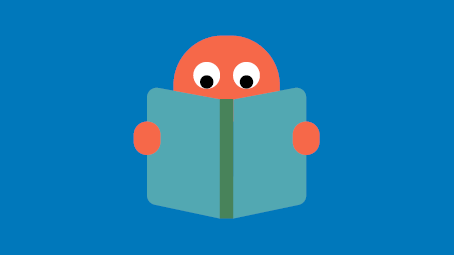
Family reading advice
Books can help to prepare for a special occasion or collect memories from a recent event. For example, before a holiday, you can choose a book that speaks about it and discuss: Which events did you plan for the holiday? How can both parents and children prepare for it? In preparation for Purim, you can make a costume or mishloach manot together, and after the holiday, you can read the book again to help you remember the beautiful moments you have just experienced together.

The costume game
Walk around the house and pick an item: a spoon, a plant, a ball or… a rug. Take turns describing a costume that includes the chosen item: Is the rug part of a rug seller’s costume? Or is it a flying carpet? Is the ball part of an athlete costume? Or a clown’s nose?

תחפושות ופורים
This book provides an opportunity to share Purim memories: Do you like dressing up, and if so, do you only do so on Purim? Did you, parents, enjoy dressing up while you were growing up? Which costume brings back good memories? You can find out who likes to dress up and who prefers not to, look at photos from the past and be reminded of special Purim moments.

What it means to be different
We are all different in some way. Scan the QR code to meet Uffnik and friends for a discussion on the word “different”.

Illustrated costumes
Where in the book can you find an astronaut’s costume? And what about a Queen Esther, firefighters, police officers or Albert Einstein? You can look for the costumes in the illustrations. Which one is your favorite?
Who was Albert Einstein?
Albert Einstein [1879-1955] was a Jewish German scientist. The relativity theory he developed and other studies he conducted made a big impact on the world of science and on how the laws of nature, time and the universe are perceived. Einstein had a sense of humor and imagination, promoted peace and fraternity, and loved corresponding with children from all over the world. Einstein supported the establishment of the Hebrew University in Jerusalem, and the State of Israel in general.

Family reading advice
A book can convey an idea in just a few words. In such a book, the illustrations are a window enabling observations and discussions about the world of children. Through them, we can discover how imagination and creative thinking can turn seemingly worthless things into valuable ones. You should take a close look at the illustrations and what they tell us and ask: Is a bottle cap that does not fit any bottle qualify as garbage? What else can pipes be used for?

What does stam (“just” or “nothing much”) mean?
You can discuss and ask: What do we do at home that qualifies as stam (nothing much)? What does stam (“just” or “nothing much”) even mean? Do we enjoy things that we do stam? How about we do something stam together right now?
How does a hoop turn into a hot air balloon?
And how can we encourage creative thinking? Scan the code and watch some creative ideas.

Stam (“just”) objects
Just like in the video, you too can look for an item and invent a new use for it: What can you do with “just” a bottle? And how can you play with “just” a paper roll?

Shapes in the sand
Following the arts & crafts in this book, you too can go outside and check: What do you see when you make a shoe imprint in the sand? Or an imprint of your hand? Or a leaf? And what can you draw in the sand using a stick?

More arts & crafts and other activities can be found on the Sifriyat Pijama Pinterest page

Family reading advice – Books everywhere
Like many toddlers, Berale also asks Grandma – “What are we going to do now?”. Among the surprises Grandma keeps in her basket is a book that they can read whenever they want. A book is a world unto itself that can be taken anywhere quite easily. You can also keep a book in your bag, and enjoy it while waiting for a doctor’s appointment, relaxing in the park, or taking a long car ride.

Discussion – Special times with loved ones
You can discuss your toddler’s relationship with Grandpa, Grandma, or other significant family members and ask – What do you enjoy doing together? Are there any special activities that you only do with your grandparents or uncles and aunts? Are there any special items that only they have at home?

A made-up story
Grandma’s stories make Berale laugh because they are made-up, and unusual things can happen in our imaginations. Try making up your own story, like “The Hippo that Fell into a Soup Bowl”, “The Lion Who Was Afraid of Being Left Alone at Night”, or any other idea that comes to mind. You can start with an object you see around you, and take it from there.

Grandma baked a cake…
Do you know the fingerplay that accompanies the nursery rhyme “Round and Round the Garden”? Or the Israeli version “Savta Bishla Dasya” (“Grandma made some porridge”)? You can play a similar game by bending your fingers inwards and leaving your thumb out to create a ‘snail’. Your toddler’s upturned palm can be the bowl. Now say: “Grandma and Berale baked a cake. They added flour, they added sugar, they added eggs…” while touching your toddler’s upturned palm with your thumb as you name each ingredient. You can take turns being Berale and the mixing bowl.

Reading-assisting touch
Toddlers need physical contact. That is why you should sit close to one another while reading, hug, touch, and look into each other’s eyes every once in a while. That way your toddlers will experience story time as a warm and relaxing activity that makes them feel loved and safe.

Tickles and games
You can ask your toddlers – do you like tickling games? Which of the games that we play together do you enjoy? What would you have liked us to play? In relation to the mother’s telephone call in this book, you can also ask – how did Gan-Yah feel when her mother went to answer her phone? How do you feel when you have to wait?
There’s a hill in this house
You can play the same game they play in the book: Your toddler or another family member can hide under a blanket and become a hill. You can tickle the hill, feel it and search – where’s the hill’s foot? Where is its head?
*Some children are hypersensitive to touch or tickles, and therefore, it is important to remind players before the game that one can say “stop” at any point, just like they do in the book.

Moving together
There are many body movements in this book. You too can jump, dance, roll or lift your legs up in the air just like the hill does. You can look at the illustrations and copy Gan-Yah’s movements too.

For more ideas for activities, check out our Instagram page and discover more surprises.

Family reading advice
Toddlers enjoy reading books together, and when they focus on the story, they use their learning, concentration and imagination abilities. To “get into” the story and allow them to concentrate, you should disconnect from the world for a few minutes, sit somewhere calm, with no background noises, screens or mobile phones, and fly together on the story’s wings.

פעם אני החתול ופעם אני החתולה
This short book is full of experiences from toddlers’ day-to-day lives: They want to take part, sometimes they experience rejection, they strive to be independent and are busy finding solutions. You can discuss such moments in the story with your toddlers and link them to their world: What did the girl cat want? How did she feel when the boy cat didn’t want her to join him? What did she decide to do? Do you also enjoy going out for a walk? And what do you like doing all by yourself?
Let’s go for a walk!
You can suggest packing a small bag and going for a walk with your toddler, just like the girl cat, in your home or neighborhood. Together, you can think of all the things you need to take with you on your walk – a bottle of water? A hat? How about a toy?

What do the illustrations tell us?
When you look at the illustrations together, you could focus your attention on different things each time – Where is the boy cat? And where is the girl cat? What are they doing? Which items can you identify in the picture?
Family reading advice – Finding your own way
Who says that stories must be read at bedtime? Maybe you prefer reading them in the afternoon? Or lying together on the rug, or having a stuffed toy join you while reading? Every toddler has his or her own personality and needs, and grownups, of course, have their own preferences too. You can look for the best reading time and method for you and your toddler, and create your own special story hour.
Reading with movement
While you read, you can shoo the fly away together with your toddler, just like the child in this story: You can clap, jump with your entire body, or move only your hand, or sneeze ever so loudly, and then look right and left for the fly that flew away.
QR code
Would you like to sing with the fly that got lost? Scan the code and listen to the song the “Fly That Got Lost”. You can dance, fly, and make buzzing sounds together.

The buzzing finger
Your finger can become a fly too: Make buzzing sounds and wiggle your finger in the air as if it were a fly. You can see your toddler following the “flying” finger. You can place your finger on another area of your toddler’s body each time: his or her nose, cheek, arm or ear. You can say: “Buzz on the forehead” out loud, while going over the names of their body parts and laughing together. Once your toddler has become familiar with this game, you could invite him or her to make a finger a fly too.
Family reading advice – The recurring phrase
Many books for toddlers have a recurring phrase that helps them follow the storyline and play a part in the reading. To emphasize the recurring phrase while reading this book, you can use a special voice, add a hand gesture, or change your reading pace. When the familiar phrase comes up, your toddlers will be delighted to join you.
Ora Ayal [1946-2011] was a children’s writer and illustrator. She illustrated over 70 books, among them Miriam Roth’s well-known books, as well as writing some herself, such as A Girl Alone and One Dark Night.

Discussion – Who do we love visiting?
Visits are a significant part of a toddler’s world. We visit family and friends, and sometimes, they visit us. You can discuss and ask: Who did we visit? What did we do during our visit? Who shall we invite over to our house?

Who will we meet next?
At the corner of each page there is an illustration that hints at the encounter we will see on the following page. Before you turn the page, you may want to look at the illustrated clue and guess who will be waiting for you on the following page. You can even play with real-life objects: Cover an item almost entirely, and ask your toddler what is hiding under the cover – a teddy-bear? Hat? Or purse?

What is in the illustration?
The final page of the book is a story in itself, containing many illustrated details. You may enjoy looking for the many details in the illustrations that you have come across throughout the book: a dog, girl, hat or flower. You can even try to identify and name the items at Grandma’s house: Where is the kettle? What is hanging on the wall?
Real or imaginary?
Telling and listening to stories is great fun. The shared experience makes everyone feel good. Discuss and think together – when is the right time for story-telling and letting your imagination run wild. When is it best to tell the story like it is — without adding or leaving out any details? Who would you feel comfortable confiding in when you face dilemmas?
What happened to me yesterday
Who can remember what happened yesterday? Can you tell it like a story? You can use this opportunity to share experiences. You can also play: One of the participants will tell a story, while the others try to figure out what is true and which parts are made up.

Here is where we listen
Whenever Shahar wants to share or consult, she sits on the bench with Herzl, the security guard, and he always listens. Choose a spot at home where you can always speak and be heard. Whenever you need to share, sit there, tell your story, and seek advice.
Let me tell you a story
Do you want to listen to Shahar’s stories too? Scan the QR code and listen away.
Close to home, dear to our heart
What is your favorite place? Is it at home? Is it nearby? Or is it far away from home? You can share with one another: What is your special place, what do you like about it, and what is special about it.

The grace of a place
You can find good things everywhere; every place has some beauty. Take turns choosing a place, whether near or far, in Israel or elsewhere, real or imaginary, and have the other participants ask questions about it to discover what makes it so wonderful.
A good station
How can a bus station make people happy? Scan the QR code and watch the schoolchildren’s heartwarming initiative in Jerusalem.

In our environment
What is happening near your home? Go on a short walk outside, and try to discover how you can do good in your own surroundings: How about picking up litter and placing it in the recycling bin? Or offering people waiting at the bus station a drink of water? Or setting up a library on your street with your neighbors?

Family reading advice
Illustrations allow young readers to be exposed to art, and get to know new worlds that enhance the written story. At times illustrations tell another or different story than the one told in words. While reading this book, we recommend looking at the illustrations together, take a break in the reading, take another look at the illustrations, and allow the children to find special details that speak to them.

Caring and trying
Bear is trying to help his plant. He wants to take care of it. You can discuss and share – who is it that you care about? And who do you take care of? A pet? A toy? A beloved plant or perhaps a younger sibling? – How do you care for them? Have you ever tried to care for someone or something that didn’t work as planned, but things worked out in a way that you did not expect?

What illustrations tell us
What is happening to the bunnies? The amusing illustrations in this book describe an entire underground world. Together, you can look at the illustrations and tell one another what the bunnies are doing. When are they happy, sad, full or busy?

What can we see from here? And from there?
What can we see when we are sitting on the couch? And when we are standing in the center of the room? Or crawling under the table? Take turns as each family member picks a location from which to look at the room: What has caught their attention? Do they see details that others don’t see?

QR code – What can we do with a carrot?
Would you like to prepare a carrot for planting and eating? Scan the QR code to discover what can become of a small piece of carrot.
Family reading advice
Reading books is a wonderful way to get to know a child’s world. When reading, you may want to pause every once in a while, and allow your child to respond to the events depicted in the book: How do the characters feel? How do we, as readers, feel? Has something similar ever happened to you?

Discussion – large and small
Have you ever helped to make a salad? Have you ever fallen and hurt yourself? You may enjoy recollecting together, parents and children, moments when you felt big, and managed to do something all on your own, and other incidents when all you wanted was to be hugged and comforted. This may be a good opportunity to get to know your child’s experiences, while sharing special moments with them from your own childhood.
Is it better to be big or small?
What is better? Scan the QR code to sing along with your child and think what is better – being big or small?
Looking at the illustrations
While reading, you may enjoy looking at the illustrations and searching for interesting details: What is Matan doing? How many animals can you spot? Who is large and who is small? Where can you see a cat? And which of the illustrations is your personal favorite?

Big or small?
Pick up two objects and compare them – which of them is small and which is big? Now, replace one of the objects with another, and check again: Is the teaspoon big or small when compared to a bottle cap? And what happens when it is next to a broom? You can use yourselves as one of the objects and check whether you are big or small. And what happens when you stand next to other family members?
Family reading advice
“Just me!” – Toddlers like to feel all grown-up and independent, as if they too are adults. While reading a book together, you can enjoy sharing with your toddler and strenghtening their sense of capacity: They can hold the book, point, say words they recognize, and even read the book to you or to one of their toys.

Challa recipe
The pictures in this book help you see the challah-making process, and understand the various stages. You too can make a dish together and photograph the process of its preparation. That way, you can be reminded of preparing it, look at the pictures together, and take pride in the delicious result.
Challa recipe
Dough:
1kg of flour
½ a cup of sugar
2 spoons of yeast
2 cups of lukewarm water
½ a cup of oil
2 eggs (optional, you can also make it without eggs)
1 spoon of salt
An egg for brushing or some oil
Method:
- Mix the flour, sugar and yeast in a large bowl.
- Add the rest of the ingredients and knead well for about 10 minutes until the dough becomes elastic and soft.
- Cover the bowl with a towel or plastic bag and leave the dough to rise until it has doubled in volume.
- Use the dough to make challahs. You can make them large or small. You can brush the challahs with egg or oil.
Bake in an oven set to medium heat for half an hour, until the challah turns golden. Enjoy!

Discussion – What is in the picture?
You can look at the pictures together and discuss the details in them. You may want to ask questions such as: Where is the girl? What are the children doing? Where is the broom? Where is the challah? You can return to an image you have already looked at from time to time, and who knows – perhaps you will discover some additional details?
QR code
Scan the QR code and learn about tips on ways to celebrate holidays and special events together with toddlers.

Reading advice: Befriending a book
Reading books from a young age contributes greatly to toddlers’ development. Starting to read slowly and gradually is recommended. At first, toddlers may be allowed to connect to the book in their own way: Touch it, open and close it, look at the illustrations, and become curious. Later, you can read: Read a little each day, patiently and calmly. Some toddlers will prefer to be read a single page, get familiar with it until – hey – books have become their friends!
What happens along the way
We can make interesting discoveries if we only pay a little attention. You may enjoy discussing what you see as you walk or take a drive: “Here is a red car!” “I see clouds. What do you see?” You can also share experiences with your toddler: “On my way to work today, I saw a lady walking her dog. What did you see on your way or back from daycare?”
Why read with toddlers?
Scan the QR code to discover how books’ contribute to toddlers’ development.

Morning ritual
Like the boy in the book, all toddlers enjoy rituals that generate a fixed routine, calm them down, and help them start their day feeling good and happy. You can also have your own morning ritual. For example, you can encourage your toddler to say good-bye a beloved stuffed toy: “Teddy, Teddy, I’m going to Kindergarten, goodbye!”, while you parents reply on behalf of the bear: “Goodbye! See you later! Have a safe journey!”

Encountering animals
Many animals appear in the book. You can look at them together, and state their names, make the relevant sounds, and mimic their movements: Crow like a rooster, hop like a bunny, or gallop and neigh like a horse. You can also look at the illustrations on the final page, cover one of the animals each time, make the relevant sound or mimic its movements, and have your toddler guess which animal it is.
Reading with Toddlers
How do we turn books into friends? Reading from a young age contributes greatly to toddlers’ development. We suggest starting slowly, gradually, and age-appropriately: Some toddlers will want to touch the book, open and close it, or even “taste” it. You can then read a little, patiently and enjoyably. You can start by reading one page, and, as you get used to it, add more pages, until, hey – books have become friends!
Reading together – Good Morning
While reading, you can emphasize the words good morning using a special voice and welcoming gesture. Invite toddlers to join in, follow the story, and take an active part in the reading. You can create your own good morning greetings: “Good morning kitchen chair!” “Good morning tree on our street!”, “Good morning, Bobby the dog!”

Observing the world
For toddlers, everything can be a teachable moment. Time spent together going to or from daycare provides an opportunity to observe what attracts toddlers’ attention: Is it ants walking in a row? A large truck? Or perhaps a flock of birds?
Identifying and indicating
Here’s the sea! Here’s a mountain! And a butterfly too! As toddlers grow, they enjoy pointing at everything they recognize in the illustrations. You could pause on each page, take a look together, and discover what your toddlers already know. You could ask them to indicate where the rabbit is, and, if they struggle, look for it together.

From the book to the outside world
You could continue the journey that began in the book with a game at home, played while kneeling, saying “choo choo” and adding the hand gesture, or on the rug with some toys. You may enjoy looking out of the window together, seeing what is going on outside, and saying: “There’s a traffic light! Here’s a tree! And what else can you see?”

Some reading advice: How do voices and facial expressions help when reading?
Toddlers are fascinated by the tone of voice, facial expressions, sounds and gestures of the person who is reading to them: All of these help them follow the story, enjoy and understand it. Allow yourselves to be actors for a few minutes. You have won the best audience, who is sure to appreciate and enjoy your unique reading style.
A discussion on who is wisest
Perhaps you would enjoy discussing and sharing the following: What do you think makes a person wise? Can you think of an incident in which someone behaved wisely? Was the fox wise, or the rooster? Perhaps they bother were? Or maybe neither one was?
Five facts about Levin Kipnis
What did Levin Kipnis do when he was growing up? What did he have to do with comics? Go ahead and scan the QR code, and watch the video to find out.
A game of “What actually happened?”
Having read this book together, you, parents, may want to tell a story, and ask the others to decide whether the story you’ve told actually happened or was a work of fiction. Next, ask your children to share their own stories. This may be a good opportunity to share unusual incidents with one another, and laugh together.
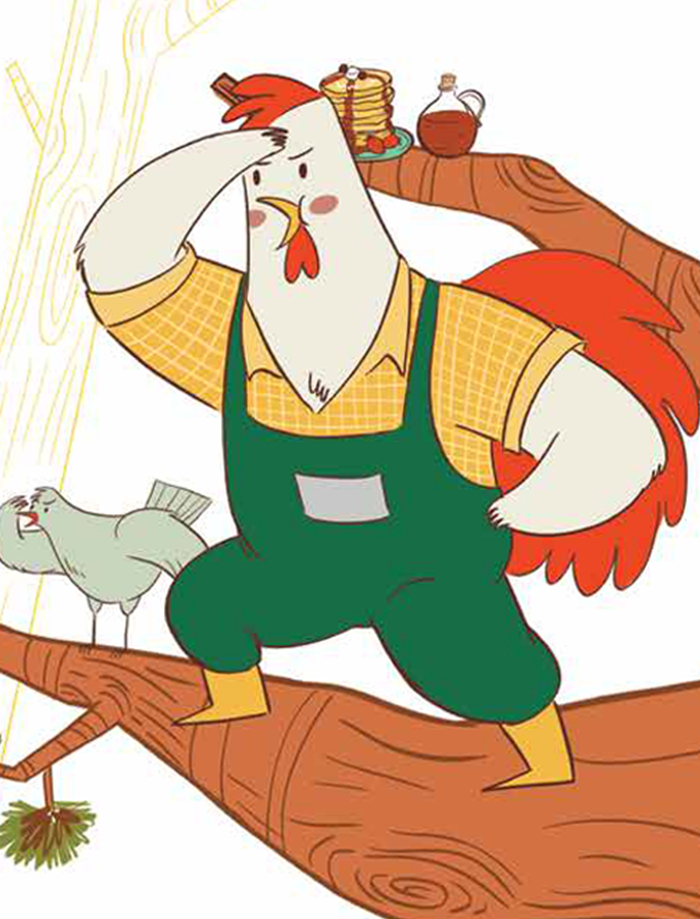
Ram-Kol and other names
What does the name Ram-Kol (Loud-Speaker) tell us about the rooster? Can you come up with names for yourselves that reflect a special, good quality that characterizes you? Perhaps the rest of your family can help!
Listening to the story
Please scan the QR code to listen to the story. You may enjoy turning the pages of your book as you do.
Dramatizing the story with toys
Your children’s favorite stuffed animals and other toy animals can also be part of the story: Add or omit one each time as you act the story out together.

Playing a game of ‘Who is sleeping under the blanket?’
Ask your toddlers to close their eyes, and hide a stuffed or other toy animal under the blanket. When they open their eyes, you, parents, can give them hints as to the identity of the hidden animal, until your toddlers guess what it is. Does it bark? Does it hop around and eat carrots? You could also switch roles, letting your toddlers give you, parents, hints about who is hiding there, underneath the blanket.
A discussion on yearning
How does yearning feel? Have you ever missed someone? Who? – This book is an opportunity for a discussion during which you, parents, can share your own experiences of missing someone and waiting for their return.
What does it mean to miss someone?
Pupik misses his father, and Ohad knows exactly how he feels. They share their feelings, and think of things they could do while missing someone. You may want to scan this QR code to watch them, and get some good advice for times when you miss others.
Arts & crafts – A yearning box
Does it feel like time is standing still while you are missing someone who is away? – You may want to make a box filled with items that could make time go by faster, and make you forget about that person’s absence for a while. How about putting some photos of the two of you in it, materials with which to make a gift or a drawing for them, which you could give to them upon their return?
A game for passing the time
A minute can go by very quickly, or it can almost stand still. Would you like to try? – Set your timer for one minute, choose an activity, and do it for a full minute: Hopping on one leg, sitting still, finding items beginning with the letter G – Which activity helped time pass by faster? And which activity made it go by extra slowly?
Reading poems
The poems in this book present small moments in life. Every time you read together, we recommend selecting one poem, and reading it together. Does the poem remind you of something that once happened? This may be a good opportunity for you, parents, to share a childhood experience with your child, creating closeness and intimacy with them.
Pleased to meet you – Hagit Benziman
When did Hagit Benziman start writing? What does she write about, and why? You may want to scan this QR code to find out more about this author and her work.
Looking through the family album
You may enjoy looking at parents’ family photo albums together, searching for special childhood moments. You could also look at early childhood photographs of the children, and share information about the moments captured. Which memories do they evoke in you?
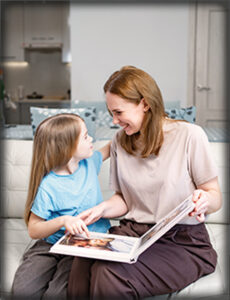
Dramatizing together
Do you have a favorite poem among those included in this book? If so, how about acting it out together, with the grownups playing the parts of the children, and vice versa.
A discussion on choosing and investing
You may want to discuss Cyril and Tevye’s choice: Why do you think they chose not to use all the gold? Did that surprise you? Why, in your opinion, did they decide to invest the gold in schooling?
Illustrations – Where is the goat?
The goat is by Cyril and Tevye’s side throughout the book. You may enjoy looking for the goat in the illustrations: What is it doing? What is its connection to the family? How about trying to tell the story from the goat’s point of view? What happens to it as the book progresses?
A game of treasure hunt
Gather several small gifts that you would like to give your family: A drawing, greeting card, or item. Take turns hiding your gifts and having the rest of your family look for the treasure using clues: “Near and far”, “hot and cold”, or arrows placed around the house.
Listening to a story
האזינו לפס הקול של הספר!
If you scan the QR code, you will be able to hear the soundtrack of the story. You can listen to it together at home, while traveling, or anytime and anywhere you choose.
A little advice for family reading
To make family reading enjoyable, and encourage children to read, we should choose books to which children relate and explore topics in which they are interested. Some prefer a piece of fiction, while others would want to read a story that “once was”. Whatever their favorite book may be, it would encourage them to enjoy books, while helping them to develop their imagination and creativity.
A discussion on belongings and memories
You too could look for items that remind you of past experiences: A family photo, gift you have received, or item associated with an experience you have had. Take turns introducing the object of your choice and sharing a memory relating to it.
Listening to the story
What does Grandpa sound like? Does the machine make sounds? By scanning the QR code you too can listen to the story together or separately.
Building something
Are you interested in making a machine of your own? You can gather some boxes, fabrics, crates and old toys to build your very own machine. You can plan what it would do and look like together, or simply build it and discover its attributes as you go along.
Illustrations – Where are the machines?
Many of the illustrations in this book depict machines. Perhaps you would enjoy leafing through them and finding illustrations of machines and machine parts – Can you tell what each of them does? Perhaps you could be inspired by the part you found to invent a new machine, and imagine what it is capable of doing.
Pinterest
Arts & crafts, songs and other activities are available on the Sifriyat Pijama Pinterest page
A little advice for family reading
Children “read” illustrations, and notice details that do not appear in the text. You could join them while reading by looking at the illustrations too, and discovering how they add interesting, surprising details to the written story, perhaps even telling another one in lines and color.
A discussion on travel through photographs
Where have you traveled to, and where would you like to go? You may enjoy looking at family photos together, and reminding one another of trips you have taken, and your favorite spots to visit. Have you found a place to which you have yet to travel, and would like to go to in future?
Singing to the Sea of Galilee
In Hebrew, the Sea of Galilee is called Kinneret, and it is featured in a well-known song by the name of Shiri Li Kinneret [Sing to Me, Sea of Galilee]. Would you also like to sing the Sea of Galilee a song? Scan the QR code and sing along!
Who or what is in the illustrations?
Is it a buffalo? A fox? A sea turtle? Look closely at the illustrations and get to know animals that live in various parts of Israel. You, parents, can say the name of the creature, and help your children find it in the book. You could also suggest that your child look for more information in additional resources, and increase their knowledge on the various animals.
A game of “Land, Sea (of Galilee)”
Place a piece of rope on the ground and decide which side of it is the Sea of Galilee and which is the land. One player will call out “Sea of Galilee” or “Land”, and the others will jump to the correct side. You can even add names of animals, for instance, “Sea of Galilee Duck”, and then jump to the Sea of Galilee side while quacking.
Reading together
We recommend reading the book on your own, before reading it together as a family. Familiarizing yourself with the book in advance will help you read it afterwards at the pace and sequence suitable for your children. Enjoy reading this book together!
A discussion on waiting
Have you ever had to wait for something? Perhaps you could share that experience, and tell each other about anticipation. You could also come up with ideas together of what you could do while waiting, or tell each other what you chose to do in those instances while you waited. What happened in the end?
An illustrator at work
How do you illustrate a bunny? Or a wolf? Scan the QR code and watch illustrator Ronan Badel illustrating the characters in this book.
Illustrations and clues
Look at the final illustrations in this book. Can you find any indications for the birthday party the wolf had almost missed? And which presents did the bunny get? And what was special about the wolf’s gift?
A game of “Wolf in motion”
Leaf through this book and decide the order of play. Take turns looking at the illustration you have each selected and acting out the depicted wolf’s motion: Is it going up in the elevator? Or walking on all fours? The other players will have to guess what the wolf is doing.
A discussion about my name
Excuse me, what is your name? You may enjoy discussing your names: Why were you, parents, named so? And what has made you choose the names you have chosen for your children? Do you have any nicknames? How did you come by them?
Moving along with Yoyo
Yoyo jumps, sits, climbs… Each illustration depicts Yoyo in a different posture. You may want to act out what Yoyo does, and have the rest of your family members look for the page in the book that shows him in the same position. Were you able to do so? Then it’s time for another member of your family to have a go.
I’m always me – Datia Ben Dor
Are you sometimes happy and at other times sad? So is Datia, who wrote the book, and also wrote the lyrics of the well-known children’s song I’m Always Me, the music of which was composed by Uzzi Hitman. Scan the QR code and sing along!
Arts & crafts – A front door sign
How about getting the following – a cardboard rectangle, crayons, stickers, and some plasticine, if you like – to make a sign for your front door or bedroom door? Write your name at the center of it, color it, decorate it, and hang it on the door! And how about this idea – print out a photograph of yourselves, add it to the sign, and write your names too.
Pinterest
Find more inspiration and creative activity in our Pinterest page
A discussion on our house
All houses consist of walls, a roof, doors and windows: What’s special about your house? What makes it your home? You may want to discuss special objects and items found in your home, or the things you do there together.
A video – House of boxes
What can you do in a house made of boxes? Scan to QR code to get ideas for a house that’s both real and imaginary.
Arts & crafts – Home building
How about making a house out of blankets, cardboard boxes, sticks and clothespins? And what else would you need? Decide on a location and workplan, gather the necessary items and accessories, and off you go!
A game of house catch
Take turns announcing a topic and having all the other players try to work together to find a suitable item. For instance, when “red” is announced, all players must search the house for a red item. In the next round, another player might call out “big”, “small”, “cute”, “old”, “multicolored”, “annoying” or “wheel”, sending the other players to look for an item matching their announced topic.
פינטרסט
Pinterest
Arts & crafts, songs and other activities are available on the Sifriyat Pijama Pinterest
A discussion on fear and encouragement
As our children grow up, they experience various fears, but discussing them helps them to cope with them, while instilling in them a sense of security. Together you can choose to discuss what they find scary, and what helps them overcome their fears.
Listening to a story
Would you like to hear Maayan and listen to everyone cheering her on? Scan the code and listen to the story together.
הַסִּפּוּר לְהַאֲזָנָה – עַכְשָׁו בָּפּוֹדְקַאסְט שֶׁל סִפְרִיַּת פִּיגָ’מָה!
בגן At the playground
After reading this book, you may enjoy going to the playground together, and trying out the equipment together as well as separately. Perhaps you would like to invent a special course from the slide to the swing and so on that would bring joy to all of you.
Family encouragement
“Hooray, Maayan!” Everyone calls out when Maayan is scared. How do you cheer one another on? Perhaps you could come up with family words of encouragement, find a motivating song, or a chant you all agree on that cheers you up and gives you strength.
A discussion on what has been lost
Have you ever lost anything you found important? How did you feel and what did you do? Perhaps you’ve found someone else’s lost item… This book invites children as well as parents to share their childhood experiences of losing and finding lost items.
A video about a lost and found stand
A video about a lost and found stand
Shabi and Uzza from the Israeli children’s television show Parpar Nechmad are also returning lost items to their owners. Scan the code to watch the video.
A Discussion on problem-solving
What can we do when we encounter a problem? You may want to share incidents with your children in which you, parents, have encountered a problem. Try to think back to how you felt, think of possible solutions together, and then tell them how you solved the problem.
What can we do with…?
A hoop can be a steering wheel, a plate or… Scan the QR code and watch a video about creativity? Later, you can continue to think about – What can we do with a paper roll? A kerchief? A dwarf puppet?
Singing together
The dwarves planted mushrooms and sang “all the songs they knew”. You too can sing your favorite songs together. Perhaps you’ll sing about dwarves, or rain, or songs that cheer you up and make you smile.
A Game of “Which Dwarf am I?”
Take turns pretending to be one of the dwarves that appear in this book: The one with the umbrella, the one planting a mushroom, or the one jumping into puddles. The other players will try to guess what the dwarf is doing and find it in the book.
Pleased to meet you, I’m Hyla!
I’m similar to a frog but smaller. I can be found in Israel, mostly on trees, eating insects and laying eggs in water. I am a protected species and therefore cannot be kept in a jar – only in nature.
Pinterest – Crafts, songs and other activities on the “Elik Belik” book page in Sifriyat Pijama on Pinterest
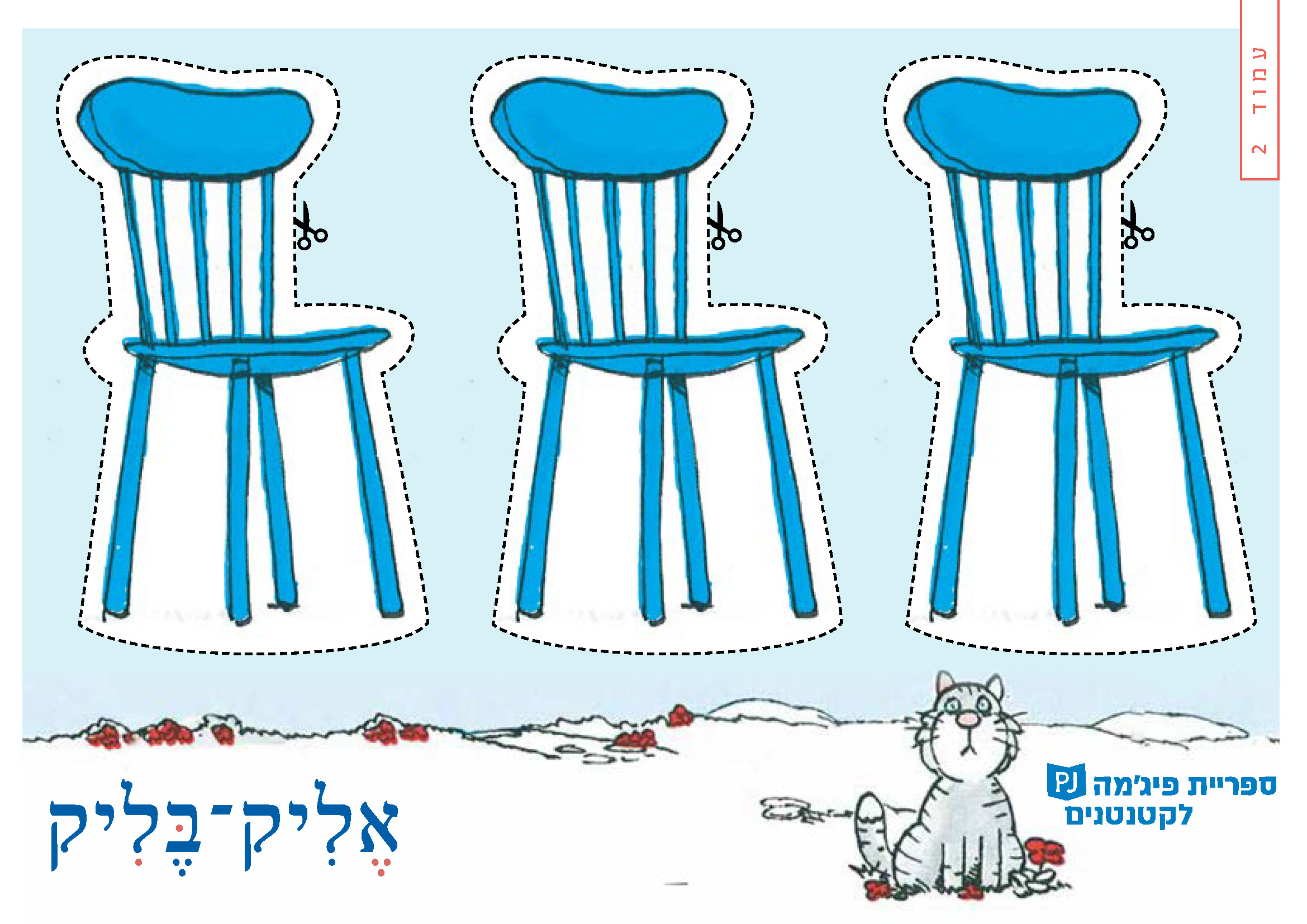
Reading Together
Do you also have little friends visiting your home? Are they imaginary friends, or maybe a beloved doll? It is worthwhile to talk about it with the toddlers and hear what do they like doing with the little friend. You can “bring in” the little friend to join and read the story.

How to Read the Story?
The story is slightly longer than usual, and in order to arouse interest and curiosity it is recommended telling it in a variety of voices: a voice for Dad, a voice for Yaeli and a different voice for Mom and for Elik Belik. You can look together at the illustrations and invite the toddlers to participate in the identification of details and repeat the words “Elik Belik”.

Hide and Seek
Where’s the doll? On the table? maybe underneath it? And where’s the ball? You can hide various objects, look for them and then say: “The ball is on the chair”, “The ball is under the bed”. You can also hide yourselves and look for each other.

From Small to Big
Dad has big shoes, Mom’s shoes – they are less big, Yaeli has little shoes, and Elik Belik’s? Tiny shoes! Go on a journey throughout the house, collect items of the same type and arrange them from the smallest to the biggest.
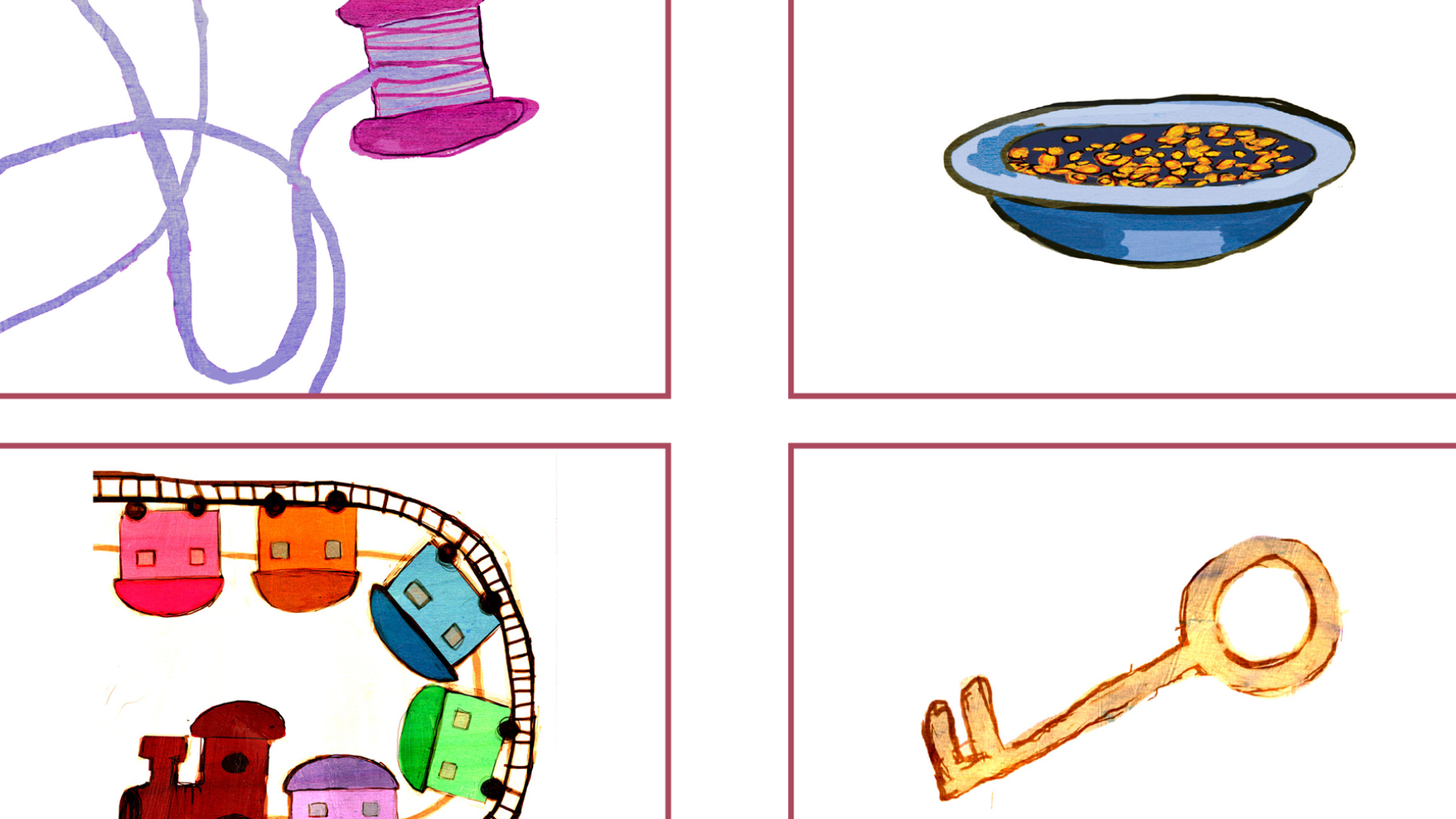
Reading Together
It is worth sharing the reading of the story with the toddlers: Where is the key? What do you do with the string, and what are the crumbs for? What surprise is hiding in the small pocket?

Guessing Game
Hide an object in a garment pocket and let the toddler guess what you hid with the sense of touch. You can provide clues, reveal a fraction of the object, and eventually disclose the item and demonstrate what it is used for.

Doing Things Together in the Family
Grandfather and the child are talking, sowing seeds, and feeding the rabbit. What do toddlers love to do with adults in the family? With grandparents and other family members?

What Goes with What?
“A key in order to open”; “A ticket to ride the train”; and what is a basket for? Or a spoon? You can walk around the house and choose items, then talk and check together what they are called and what they are used for. Matching Game –What Belongs to What – is waiting for you when you scan the code:

Pinterest – Crafts, songs and other activities on the “Grandpa’s Pockets” book page in Sifriyat Pijama on Pinterest
Reading together
While reading, it is useful to include the hands on each page, follow their path and imitating their movements. Parents and toddlers can do this together: “walk” the hand on fingertips, make the hand jump, knock on the door in the picture, and be active readers throughout the entire book.
Hand Games
It’s so much fun to play with hands! Each and every one in turn makes a certain movement, and the rest of the participants imitate it. You can clap your hands, wave hello or goodbye, signal for “quiet” or fly!
A Family of Hands
Who has a small hand? Who has a large hand? Each family member is invited to place their hand on a sheet of paper. You, the parent, will draw the contours of the hands, and the toddlers will decorate and paint. The picture of all the hands can be kept as a memento, and you can also repeat the activity year after year and see what has changed.
Singing Hands
You can sing songs accompanied by hand movements, such as “I have ten fingers” or “My hat has three corners.” It’s a good idea to add hand gestures to your singing, and you can add finger movements to other favorite songs. Have fun!
“עשר אצבעות לי יש” מאת רבקה דוידית
מחרוזת שירי ידיים מאת דתיה בן דור
Pinterest – Crafts, songs, and activities in the Sifriyat Pijama’s Pinterest page.
We can help too!
What can toddlers do at home? Many things! They can put glasses on the dining table, sweep with a small broom, feed the pets, and… offer cookies. It is worthwhile to talk and show what the toddler is helping with at home, and what else they want and can participate in.
Who is in the family?
The child in the story hands out cookies to other family members: grandmother, uncle, sister, cousin. Who are your family members? You can talk about family members, say their names and thier roles, such as: “Grandma Braha,” “Uncle Baruch,” use family photo, and use family photos.
Let’s make some refreshments together!
You too can prepare refreshments together, such as chocolate balls, a plate of fruit, or a sliced cucumber. You can prepare “pretend” refreshments using play dough and offer to the dolls at home.
Game: Grandma had cookies…
Do you know the game “Grandma made porridge”? “The child had cookies” can be played in a similar way, in which the toddler opens her, or his hand, and the parent begins to count: “The little boy/girl had cookies and gave one to Grandma (holding the thumb), and one to Uncle (holding the forefinger) etc. And so you count the fingers by allocating a family member to each one. Who will you give the last cookie to?
Discussion
What do we do when we can’t decide which step to take? Who do you like getting advice from? Whose advice do you find difficult to follow, and why? Sometimes good advice comes unexpectedly: you may want to discuss that with your child, be reminded of times when you chose to listen to a piece of advice you’d been given, and share the things you’ve learned from others, young as well as old.
Enjoying the way
Are you traveling on a long, perhaps boring road? You could pass the time by playing games: counting the road signs along the way, recognizing familiar letters, discovering the changes to your surroundings brought on by the different seasons, singing your favorite songs and also… looking at the road and enjoying the existence of things you have not noticed until now.
Learning from everyone
What could children teach adults? And what could adults teach children? You may want to share your knowledge with one another, and try it out together: You could teach each other a game, song, or dance, share sports knowledge, information on a certain animal or anything else that comes to mind. Did you teach? Have you learned? Now swap roles.
A game – How do you get to…?
How do you get from one place to another by listening? Stand in the doorway with your eyes closed, and ask your family members to lead you safely to another room in the house by giving you instructions. You could follow up by playing a board game inspired by this book which we have created for you.
Discussion
Parents may want to share the stories they liked while growing up: Was there a particular story you enjoyed hearing over and over again? Who was your favorite protagonist? You could ask your child which stories they like. Are they fictional or true stories?
Dual role illustrations
When do the illustrations tell the story of Leo and Mr. Zinger, and when do they complement the story the two of them made up? You may enjoy taking a look at the illustrations together, noticing the various styles, and thinking of ways of discerning what the illustrations refer to, and what they are telling us.
The story in the hat
Which stories are hidden in the hats you own? how about choosing one of your favorite hats and telling the story that is hiding in it: one player looks into the hat and starts inventing a story. After one or two sentences, they pause, and the next player picks up the story, and so on, until all players have added their part to it. Bashevis Singer could serve as a source of inspiration for telling a family story that has been passed down in your family.
A game – Who am I?
Would you like to play a game? Perhaps you would enjoy writing the names of your favorite characters from books on pieces of paper, and taking turns wearing a hat bearing the name of the character. Whoever wears the hat does not see the name written on the piece of paper attached to it, and must guess who it is using questions, such as: Is it a fictional character? Is it an animal?
Discussion
You may want to discuss your experience of acquiring Hebrew: What were the first words you said as toddlers? Did you invent any words? Do you, parents, know what the first words you said were? Did you acquire another language? If you learned to speak Hebrew at a later stage, you could discuss the experience of learning the language, and discover what language you speak when you dream at night.

A family dictionary
Which word does your family like, and why? Are there any words that you have invented, and only your family members understand? Perhaps some of those words have a special story behind them? You may enjoy collecting stories from family members: a word of friendship, a special term of endearment, or secret family codeword.

Name, place, animal, thing (a game)
In Hebrew the game is called Chai, Tzomeach, Domem (animal, vegetable, thing). Select a letter, and participants must name animals, vegetables and things starting with the letter selected.

Haftaa [surprise], boreg [screw], glida [ice cream]
Rakevet [train], mapuhit [harmonica], and kruvit [cauliflower] are just some of the words that Eliezer Ben Yehuda invented. Others appear on the second to last page of this book. You could take turns to choose two words from this page and use them in a sentence: a sentence containing the words haftaa [surprise] and ganenet [kindergarten teacher], or ganenet [kindergarten teacher] and tizmoret [orchestra], or how about tizmoret [orchestra] and nazelet [nasal mucus]? Do you think you could put a small story together featuring all the words on this page?

The revivers of the Hebrew Language
Rabbi Yechiel Michel Pines (1843–1913) was involved in the purchase of lands, setting up the Academy of the Hebrew Language with Eliezer Ben Yehuda. Rabbi Pines invented new Hebrew words, such as agvania [tomato] and shaon [clock/watch].
Nissim Behar (1848–1931) founded the Torah Umelacha School in Jerusalem where Hebrew was taught in Hebrew. Eliezer Ben Yehuda was a teacher at this school.
Hayim Nahman Bialik (1873–1934) – the national poet was a key activist at the Academy of the Hebrew Language, inventing professional terms in fields such as music and the playing of musical instruments. Matos [airplane], matzlema [camera], and etzbeoni [thimble] are some of the words he invented.
Many others actively contributed to the revival of the Hebrew language. You could learn more about them by visiting the Academy of the Hebrew Language website.
Reading poetry books
What do the gazelles do at night? And how does one go about reading a poetry book? Lea Goldberg’s book is filled to the brim with poems, and each of them is a small world unto itself. You could leaf through them, pick one by its illustration, prior acquaintance or personal preference, or even, an eye-catching title. You may enjoy reading it together, and then discussing it: Did you like the poem? What about it did you like? We recommend returning to favorite poems from time to time, and enjoying these works together.
Singing together
Some of the poems in this book have been put to music. You could find them on the various media channels and listen to their song rendition. You could also sing them together, play actual or makeshift musical instruments as you do, and accompany the song and music with a dance or simple suitable hand gestures. How about trying to sing one of your favorite poems to a much-loved tune?
Painting in three colors
The illustrations in this book were made by five different illustrators, whose names are listed on the final page of this book. You may want to leaf through the pages and look for the illustrations while attempting to guess what each illustration adds to or emphasizes in the poem. All the illustrations in this book have been colored green, white and pink. You could also try painting in two colors on a white sheet of paper, and create a shared drawing in two colors. How about mixing them together, creating squares and lines, and being inspired by the illustrations in the book?
A poem and a photo
A puddle? Light and shade? Perhaps a moon and bird? You may enjoy using a camera to take photographs inspired by the poems in this book. You can then print the photos out and add them to the book, or hold a family exhibition by sending photos and poems to your extended family.
Discussion
Which perfect gift would you like to get for your birthday? How would you feel if you did not get it? Have you ever wanted something very badly but did not receive it? This book prompts us to discuss our expectations – why this specific gift? Do we really need it or are we simply jealous because we saw someone else has it? You may also want to discuss disappointments, and the things that help us cope with them.
Perfect gifts
How well do you know members of your own family, and what do you think would be the perfect gift for them – would it be something you buy or an experiential gift, such as time spent together, or perhaps a trip somewhere? How about playing a game and finding out? In each round, all participants try to guess what one participant would really like to get as a gift. Those whose guesses are the closest win… the perfect family hug.
A human car game
Whoever said only cars drive round and round with a cord attached? People could too! Two of you could hold the two ends of a long cord, leading one another left, right, backwards and forwards. If you get tired, make a pit stop, and start again.
Time together
“A car with Dad is the perfect gift”. And what would you consider to be the perfect gift? What would you like to do with your father or other family members? You could fix broken items, build or assemble something, or perhaps draw, bake, plant, or dance together. In fact, you can do whatever you want, as long as you get to spend time together.
Discussion
Perhaps you could discuss and share with one another the experiences you recall of moments in which you had discovered a new ability: Writing your first name, a special drawing you had made, and what else? What other new abilities would you like to discover?
Illustrations tell their own story
The illustrations in The Gift invite readers to immerse themselves in the book, and be part of Leo’s world: Which animal accompanies Leo? Which animals appear in the illustrations? Which details are taken from the world of children, and which from that of animals? Would you like to make your own drawing following Leo’s?
What's penned up in your pen?
Which incredible things await you in your pen? You may enjoy dedicating a notebook to drawings, copying words out, or writing down your favorite ones. You could make it a family notebook, in which each member adds their own illustrations and words.
A joint painting
What sort of world is hiding in your pen? Grab a pen and paper to find out! You and your family can take turns adding detail to a shared drawing – a line, circle, character, or item – to create a joint work of art that has come out of a single pen!
Discussion
Nuri and Grandpa spend time together, and it’s nice. You may want to discuss and discover the following with your children: What do they like doing with their grandfather, grandmother, or other family members? Is there anything that they wish to learn from them? Perhaps they have a question that they wanted to ask and were too embarrassed to do so?
Looking at the illustrations
Which treasures can be found in Grandpa’s cave? You may want to look at the illustrations and think about how they ended up being buried in the ground, and to whom they belonged. You could also imagine what might be hidden in the ground underneath your own home.
Introducing the mole
What is a mole? Moles are rodents living in underground burrows. The shape of their bodies is suitable for living in burrows as it is long and cylindrical. The moles’ touch and hearing are evolved, and they eat plants that grow in the ground. If you want to know more, please look for information on moles online.
You could also be a mole for a day!
Make a tunnel out of sofas, bed sheets or pillows, go into it carefully and crawl out. You could also turn off all the lights at home, and use a flashlight to go left, right, backwards and forwards, overcome various obstacles and… reach your destination!
What's the question?
You may enjoy playing the following game and finding out what happens when we answer before we ask: One player says an answer, and the other players try to guess what the question was. for instance, the answer “My name is Nuri” will be met with the question “What’s your name?”. Which questions match answers such as “I’m five years old” or “a purple monster”?
Discussion
Matan piles the sand up and makes his pile more sophisticated all on his own. having read this book, you may want to discuss actions with your child that they take without needing any help, and compare them with actions they had taken in the past. We recommend that you, parents, share your own similar experiences with them, from your own childhood: What is it that you wanted to accomplish, and indeed did? What does your child want to build and do? Do they need materials or help? You may want to decide on a family initiative to build, make or fix something together. Good luck!
The sands of time
What can we do with sand? We could make an imprint of our feet in it, and observe our family members’ different footprints. How about using twigs to draw in the sand, or piling it up, or going outside to look at different prints left in it there?
Perspective
The illustrations in this book were made from various perspectives: from above or below, from high up or far away. Looking at the world from different perspectives – high or low – allow us to discover surprising things: try looking at your room from an ant’s height; through binoculars made from toilet paper rolls; using a magnifying glass, or when standing on a chair: What can you see from that perspective that you couldn’t see from your regular angle?
Imagining and building
Matan and his sandcastle could inspire you to imagine, plan, and create too: close your eyes and imagine, then share your idea with your family, look for suitable materials, and start to build together. It could be a machine made out of boxes, a car made out of sand, a flying castle made of pillows, or perhaps something else entirely.

Just before bedtime...
How do you get ready for bed? What helps you fall asleep? You can talk about it together and think about creating a set ritual that will engender calm, and let you share the day’s experiences and thoughts that come to mind.

My notebook of thoughts
Isn’t it lucky that there’s a way we can remember our thoughts and stop them from getting away? How do we do that? Keep a notebook and pencil by your bed, and just before falling asleep, before your thoughts scatter away, draw them. You can color in your drawing in the morning, because now… is time for bed.
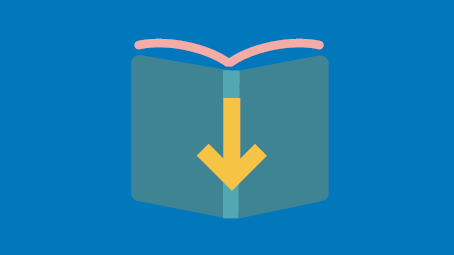
It's lucky that... It's good that...
“It’s lucky that a pot has two handles, and not five… if it did, how would we hold it?”, “It’s good that the windshield is made out of glass, not cardboard”. What do you imagine? Which things make you happy just as they are? Each member of the family can bring a certain object and talk about it: “It’s lucky that…”, “It’s good that…”.

Melodies, sounds and colors
The world is filled with melodies and sounds. Which melody do you like? Try singing a favorite melody together wile clapping your hands, moving parts of your bodies, singing, or playing instruments.
The world is also filled with diverse colors and shapes. You can draw as you listen to the music. Which shapes and colors will you choose for your drawing?
Illustrations tell a story
The illustrations in this book demonstrate how Itamar and the rabbit imagined one another versus what they really look like. You may want to check and compare: Do the monsters resemble the real child and rabbit? Are there any similarities between the monsters both Itamar and the rabbit had imagined?
Discussion
Were you, parents, also afraid when you were younger? Perhaps you could tell your children what you were afraid of, and how you grappled with your fear. You could also listen to your children as they tell you what scares them, and together, think of ways to overcome the fear.
Pleased to meet you: Monster
What does a scary monster look like? How about drawing one together, and then trying to imagine: What is the monster’s name? Who are its friends? What does it enjoy doing, and what is it afraid of? Now that you’ve gotten to know the monster, it may be worth asking yourselves whether it is still as scary as it was before.
A family magic word
“Jimalaya Jim! Zuzu buzu Yam Pam Puzu!” Each of the characters in this book has a magic word it uses when something scary happens. What is your magic word? You’re welcome to chose a family magic word together, and think of times when it would be appropriate to use it.
Discussion
You may want to discuss and share what you enjoy doing with grandma, grandpa, or other family members, and have the parents talk about their own childhood experiences. You could even do stuff remotely and still feel close: some suggestions for activities that bring you closer while being carried out from afar can found in the “granny’s stories” section on the PJLibrary website.
What do we see in the illustration?
You could check out the drawings on the aprons at the end of the book, and even create your own “family doodle”, with each member of your family adding to the artwork. When you’re done, you can look together to find out whether any shapes of objects or characters are hiding in the doodle you made.
Illustrations – look for me
Look at the illustrations together and find out what the cat does on each page or where there are strawberries. You could search for certain items, or choose a color and look for details painted in that particular color in all the illustrations.
What did you do today?
Paint stains on palms, sand in shoes, or food stains on clothes are all indications of what your child did in kindergarten today. Together, you could look at the traces left by their action-packed day. Can you, parents, use the signs to try and guess what your child has done today, and discuss their experiences with them?
Pinterest – Suggestions for arts & crafts, games, doodles and strawberry growing are available on the Ronnie’s Stories: Ronnie’s Apron page on the PJLibrary Pinterest.
Reading together
שחקו במשחק בעקבות הספר “מי זה היה מה זה יהיה”!
🖨️ מדפיסים
✂️ גוזרים
🎲 ומשחקים!

Reading together
Where is the solution to this riddle? – This book was designed in such a way, that one page asks the riddle, and the next, provides the answer to it. You may want to ask your child to guess the answer before turning the page: completing the rhyme could help. No idea what it could be? Let your child turn the page and find out.

One last illustration
Look at the last illustration together. Illustrator Ora Ayal hid the answers to all the riddles in it. Are you able to find them? Can you recall a riddle associated with one of the details in this picture? You may enjoy trying to come up with a story containing as many of the answers to the riddles as you can.

Making up riddles
Choose an item, and use each round of the game to describe one of its characteristics. For instance: “It rolls”. Your child must discover which item you had in mind. Now switch.
You could ask your grandparents, friends, and relatives the riddles in this book. Perhaps they could even ask you some riddles, and see whether you were able to solve them.

A game of "what's missing?"
We have prepared some cards for you, which you can print out and use in this game of riddles, called “what’s missing?”
Lay out 3 or 4 cards. Now ask one of the players to close their eyes, and remove one card. When the player whose eyes were shut opens them again, you can ask them a riddle to remind them which is the missing card.
Note – the number of cards you play with should depend on the child’s ability.
Getting [into] the picture
Would you like to go into one of the illustrations in the book? You could choose to be a guest at the home of one of the families described in this story, and imagine how it would feel to be next to the whale, or in the kangaroo’s pouch. What would you want to happen when you meet some of the characters depicted in the illustrations?
Guessing the animals
One family member can make the sound of an animal, or draw a picture of it, imitate it, or give some other kind of clue about it – and the rest can try to guess which animal they were hinting at!
Sound – imitate the sound made by this animal
Pantomime – act the animal out, walk like it or try to look like it
Picture – show or draw a small part of the animal: a tail, wing or foot.
Clue – describe some detail about the animal: where it lives, what it looks like, or the sound it makes.
Couldn’t guess? Help each other by providing additional clues.
Discussion – Parents ask "why?"
What sort of questions would you like to ask, and of whom? This may be an opportunity for both parents and children to share the questions that interest them the most. You could also raise questions that you would have liked to ask Shu the Vixen and Tut the Snail.
Being creative – The question box
What can we do with all the questions waiting to be answered? How about preparing a special question box, decorating it, and filling it with all the questions you find so intriguing. You could write them down on some notepaper and put them into the question box. Anytime you like, pick one, and look for the answer together.
Question games
Why at home? – Go around the house collecting “why?” questions about everything you encounter.
Questions about friendship – inspired by Tut and Shu’s friendship, you may enjoy asking: What do you think about Shu’s friends’ behavior? Has a friend of yours ever gone far away, or have you ever left a friend behind? Who were your parents’ friends when they were younger? What did they play or like to do together? What does your child like to do when their friends are around?
Questions about pictures – You may want to look at a picture together, and try to think of as many questions as you can to ask about it. You could then go out searching for the answers to your intriguing questions. You may even enjoy challenging yourselves, and looking for questions to an answer you already know: look at the picture (for instance: a gift, blue, moon), and instruct your child to think of a question to which this detail in the picture is the answer.

Songs and thoughts
The Sixteenth Sheep is an anthology of songs and stories that one can read one after the other, or select one at a time, according to the season, particular experience, or one’s mood. Could you write a song or story together about an everyday experience of yours? How about adding another verse to one of the songs found in the book?

That's happened to me too
While reading, you may want to discuss and examine the thoughts and feelings that emerge within both younger and older readers following the song. Does it remind you of experiences you have had? Parents, you may enjoy sharing your feelings and experiences nowadays and as children with your child.

When I grow up, I'm going to be a singer
Many of the poems in the book have become songs, and this may be a wonderful opportunity to listen to them, sing them together, and enjoy the tunes composed by Yoni Rechter and other musicians. You could record yourselves singing together, play along as you sing, or add a dance routine to your favorite songs.
When I grow up, I'm going to be a painter
Inspired by your favorite songs, you could be artistic in many ways: you could paint the green man using several shades of green, draw yourselves from the back, take a photo of a kindergarten when it is closed, or create the sixteenth sheep using cotton wool. When you have finished, you can show your work and ask: which song or story has inspired me to do this?

When I grow up, I'm going to be a painter
Inspired by your favorite songs, you could be artistic in many ways: you could paint the green man using several shades of green, draw yourselves from the back, take a photo of a kindergarten when it is closed, or create the sixteenth sheep using cotton wool. When you have finished, you can show your work and ask: which song or story has inspired me to do this?
Discussing – Friendship
Children yearn for friends and a sense of belonging, and the story about Arfy introduces this subject with all the complexities and heartaches that are sometimes associated with it. Yet Arfy has inner strength, and he chooses his own fate: his story allows us to hold a sensitive discussion about friendship, and the roads leading to it. You could, perhaps, ask your child what, in their opinion, is the reason for Arfy’s letters to different people. Would you have wanted to be Arfy’s frieds? Why? What would you have done in Arfy’s place?
Story-telling illustrations
Many pages in this book contain text-less illustrations demonstrating Arfy’s feelings. What do these illustrations tell us? Which of them make you smile, and why? What is Arfy feeling? What is he thinking?
Letter writing
You may be inspired by the letters in this book to write notes to one another. You could hide letters with encouraging or amusing messages under your pillow, in your bag, or anywhere else, and enjoy surprising your family members with them.
Treating animals well
Each of us can open our eyes and hearts to the animals around us – providing them with water on a hot day, setting up shelters, or anything else that would contribute to their wellbeing, and have a positive impact on the world in which we all live.
Observing – Discovering the positive
Shraga is fed up, and so he runs away elsewhere. But is that the only option available to him? If you’re feeling fed up, you can always look around you, and discover the positive aspects in our lives. Perhaps you can list all the good things that happened each day. How about making a family scrapbook of positive things, such as “my friend made me laugh”, “I got the book I wanted”, or “I’m healthy”. You could share the best moments of your day with one another, and check to see whether focusing on the positive and recording your best moments in the scrapbook will improve your mood in the following days as well.
Playing – The 'I'm Bored' die
“I’m bored!!!” – how often have you said or heard these two words? To shake things up a little, and spice things up, take a large die, or make one out of a cardboard box. Write some routine breakers on each side, such as “putting up a tent in the living room”, “ball games” or “singing and dancing”. Each time one of you gets bored, throw the die, and get inspired to do something fun. We recommend writing some new ideas on your die from time to time, so you won’t get fed up of them…
Acting the story out – What is the alien saying?
Throughout the book, the alien speaks a language that readers cannot understand. Can you tell what the alien is saying? What did it say when it was left out in the snow after Shraga had gone? What did it say upon Shraga’s return? And how did Shraga respond? You could act out the alien’s text, give it a special voice, and tell everyone what it does when it’s fed up…
Discussion
Following the childhood story the father tells his child in this book, you could also share memories and stories from your own childhood with your child: Where did you grow up? What did you like doing? Which songs and stories accompanied you? What were your hobbies? Did you have any household chores or special roles to play within your family? Perhaps you had some pets?
You could also look at the illustrations in the book, choose your favorite one, and share your choice with each other.
A family story
How about asking some family members to share their stories of life transitions with you? Which countries have they lived in? how did they end up in Israel, and how was their absorption? Did they move into a new community upon making Aliyah? You could act the stories you were told out, or tell them using a song and dance.
A magical tune
Melodies can have a profound effect on us. In the spirit of this book, you could listen to different tunes together, close your eyes, “enter” the melody, and dance to it.
Jerusalem of Gold
At the end of the book, Jerusalem is depicted as golden, just as it was in the Ethiopian immigrants’ dreams. The phrase ‘Jerusalem of Gold’ was mentioned in Jewish scripture as the name of the golden jewel that Rabbi Akiva gave his wife, etched with the image of Jerusalem. Inspired by it, Naomi Shemer wrote the lyrics and music to her song, so entitled, which became one of the most well-known and loved Israeli songs. Perhaps you could ask your child why they think Jerusalem was called that, listen to the famous song together, or play it as an ensemble.
Reading and Discussing
You may want to tell one another some riddles you know, or share how you have found solutions to problems, situations and issues. Have you ever learned something by watching someone else? Perhaps you could ask other members of your family how they cope with riddle- and problem-solving. Together, you can create a collection of family suggestions to learn about and engage in problem-solving.
What do the illustrations tell us?
The illustrations in this book are extremely detailed. You may enjoy taking a close look at them, and telling one another what else they convey, beyond the text: Are any characters featured in them that are not described in the story itself? Perhaps you could follow the tiger character, and tell the story from its perspective: What is the relationship between the tiger and princess? Why does it follow her, and how does it experience the events that unfold?
Inspired by folktales
Authoress Ruth Calderon was inspired by an ancient folktale written by Rabbi Nachman of Breslov when she wrote this book. You could try it too! Think back to your favorite folktale or fairytale, and write a similar story about a contemporary boy or girl.
Comfort food
Do you also have a “ma’atzube” of your own – some kind of favorite comfort food? How about making a list of comfort foods, and then cooking or baking one together?
Problem-solving
“… Problems are just like bread – you need to slice them”: You may want to create a collection of everyday problems, and write them on pieces of paper. In each round, pick one note, and think of solutions together. They can be incremental, broken down into stages like slices of bread. Perhaps they can lead you to more suggestions.
Discussion – If I had a magic hat
If you had such a wondrous hat – where would you want it to take you? And what would you ask of it? You may enjoy looking at the illustrations and telling each other which place you would have liked to visit, who you would have wanted to meet, and which memento you would have liked to bring back with you.
Being creative – Following the magic hat
This book is an homage to the poem Magic Hat and the poetess who wrote it, Leah Goldberg: Gali-Lea. Leah Goldberg was one of the first and most important Hebrew children’s literature writers. You could also be creative by using this poem as an inspiration: sing the song entitled Magic Hat, dance along, wear hats, and act out both poem and story about Galilea. You could even make your own magic hat, and decorate it; who knows where it might take you?…
Being explorers
Which beautiful places have you visited or would you like to visit? You may want to make a photo album or scrapbook filled with places close to home or far away, realistic or imaginary. You could even invite friends and family over, and ask them to tell you about where they born or the places they’d visited: Where are these places? Have you ever visited them in your dreams? What was it like there – was it hot or cold? Quiet or noisy? And… what was coming home like?
Playing the movement game: Cold – Hot, Wet – Dry
Make a large paper circle and divide it up into eight equal parts. Write the following in them: cold, hot, wet, dry, up, down, quiet, noisy. Take turns playing by rotating a pencil at the center of the circle and announcing the word it points to. The rest of the participants repeat the word out loud, and add its antonym (opposite): “wet” – “dry”. At each turn, go around the house looking for something cold, noisy or hot, and so on. During the next round, you could look for something that has two or more of these attributes.
Discussing
“But Robin doesn’t care, she likes sitting on her own like that”: Do you think Robin is really alone? What do you do when you’re on your own? Where do you like to spend your alone time? You may enjoy taking a stroll through the book, and discussing the experiences Robin undergoes when she’s in the tree’s company. Which of Robin’s experiences did you like best?
Illustrations, color, and creativity
This book is rich in color and details that change with each season. You may want to suggest that your child look through the pages, and search for various items: leaves, clouds, fruit, or animals. Perhaps your child can look for the main colors in each page – a red or green page – and draw pictures that are inspired by the book’s illustrations: a green drawing, a yellow one, or a rainbow-colored one.
A game called "What's my Secret?"
How good are you at guessing secrets? You may enjoy playing the following guessing game: Each player in turn picks a “secret” according to a pre-determined topic, such as animals, books, or something found in nature. The other participants must guess what the “secret” is by asking “yes or no” questions.
Environment – Adopting a tree
How about going outside and looking for a tree close to home? What does it look like? What color are its leaves? Perhaps the tree is bare, and has none? Is it bearing fruit? If so, careful! Not all fruit are edible. You could stroke the tree trunk, and notice the birds and other animals nearby. You may want to visit it from time to time to see whether and how it changes throughout the year. With Robin as your inspiration – can you think of a gift that you would want to give your adopted tree?

יש לכם קופסה? יש לכם משחק!
יש לכם קופסה? יש לכם משחק! צפו בסרטון וגלו איך להכין משחק קופסה מתוק מדברים שיש בכל בית, בעקבות הספר “המתנה” מאת אַנְיֵיס לָרוֹשׁ!

Reading & discussing
Once you have finished reading the book, you could discuss what Michael (originally: Nicodème) did: Why did he want to give his mother a present? What do family members give one another? And what would you like to get from yours? Would you like to receive material gifts, such as toys, or are there “gifts” of conduct, intimacy, and friendship that you would like to give and receive?

Looking at the illustrations
Some of the special illustrations in the book are black and white, while others are colorful. You may enjoy looking at them with your child and discovering: which illustrations did the illustrator choose to color? Why did he choose to color those items instead of others? Would you have chosen to color a different item?

Creative fun – What's in the box?
We readers do not know which gift is contained in the box that Michael (originally: Nicodème) gives his mother. Perhaps the book is trying to tell us that it’s the act of giving that matters most. However… wouldn’t you love to know what was in there? Well, how about making a giftbox by taking a box, decorating it, and covering it with giftwrap. You could use the box to play a game called “What’s rattling in the box?”: Collect some “rattling” items, and place one in the box at a time. Then let each of the participants shake the box, listen to the item rattle inside, and try to guess what it is.

The gift of waiting
Michael (originally: Nicodème) waited patiently for this day to come, but many children find the wait a difficult challenge. You may want to share some waiting experiences together at home: making pastries with yeast, baking cookies, etc. or playing waiting games like the staring game. How patient are you?

Discussing – Doing things on my own
“He who sowed sorrowfully, now reaps joyously” – the children in this book enjoy working hard and being independent. Do you, children and parents, enjoy working and creating yourselves? What kind of work do you enjoy doing together with friends or family members, such as your grandparents? And what do you enjoy doing all on your own?
You may want to think together about the kind of work that you find hard, but also rewarding.

Simple pleasures
There are simple, everyday pleasures like drinking lemonade together, smelling a fragrant flower, or listening to a story. You may enjoy making a family collection of pleasures together: draw moments of joy on notes, and post them up in a central area of your house. You could “pick” a note each day, plucking it off the wall, and taking a moment to share some simple joy together.

Playing a fragrant game
This book mentions many scents – lemons, herbs, and roses – that may inspire you to play the following aroma quiz: pick some fragrant items (soap, a vanilla bean, mint leaves, orange zest, etc.) and start playing. Take turns closing your eyes, smelling one of the items given to you, and trying to guess what it is. Can you guess by using your sense of smell alone? You could allow participants to use their sense of touch too. When the game is over, you could place the fragrant items in a small basket, and smell them in moments of simple pleasure.

Growing joyously
You may want to take a walk near your home to look for fruit trees, flowers, or herbs. You could try growing some herbs in your garden or a planter – mint, tree wormwood, sage, or lemongrass. This could be the perfect opportunity to give your child a job – being responsible for watering the plants – so that when the time comes, they will be able to pick them joyously, and use them with pleasure!
Reading together, experiencing together
This book allows toddlers to take an active part in its reading, for each page ends with an intriguing question, to be answered on the following page. You may enjoy allowing your toddler to turn the pages and find the answer.
Going outside
The Pear is Extra Sweet invites readers to go outside and discover the wonders of the world close to their homes: you could rest under a tree in your neighborhood, have a snack there, and play with fallen leaves. Perhaps you would enjoy taking this opportunity to introduce your toddler to magnifying glasses: look through the magnifying lens, and see what the world looks like close up.
What happens at nightfall?
Various items found in our immediate surroundings are shown on the final page of the book. You may want to examine what the back yard holds with your toddler, and where in the book each item is found. You could even use the final page to recall your day together, and sum it up with your toddler: where were you today? Who did you meet, and what did you do?
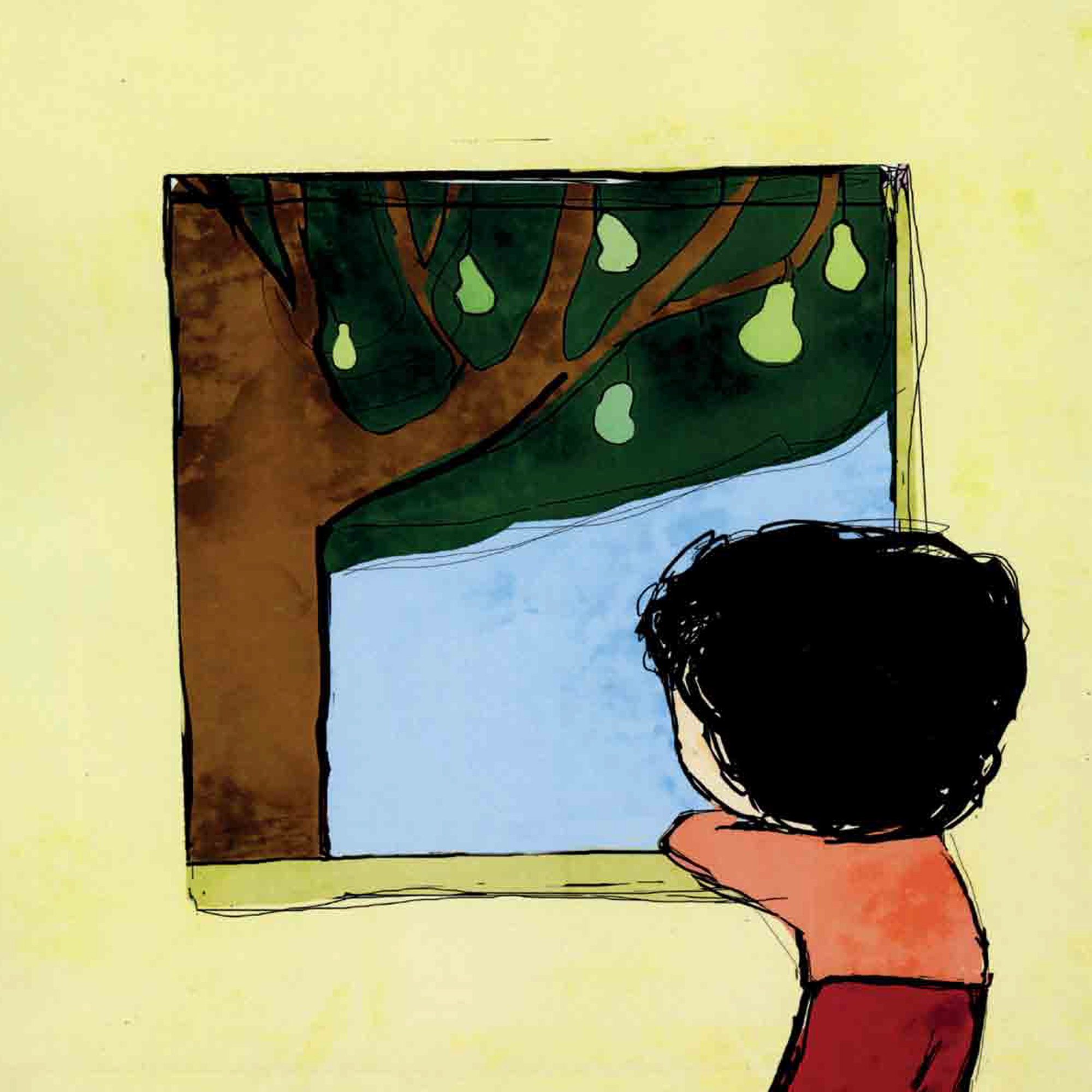
The puddle-boat game
Even if it isn’t raining, you could create a small puddle in the back yard or in a large bowl, sail paper boats on it, feel how wet the water is, and add fallen leaves and branches into it. Wondering how to make a paper boat? Log onto the book’s webpage or the PJLibrary Pinterest page for easy paper boat making suggestions.
What do you see out of your window?
You may enjoy looking out of your window together to see what moves and what remains static. Can you hear any sounds? Have you discovered anything surprising? Perhaps you would like to look out of your window during the day, and again in the evening, after nightfall. Did you discover different things by day and by night?
Discussing – What can we see out of our window?
What can you see out of your window? What can you only see in your home? Can you see it through the window? What else makes you special as a family? Do you have a favorite song, or an activity you like to do together? Is there a fixed ritual on special occasions in your family, or something that will always make you all laugh? Perhaps there is a phrase or word that you have invented, or a word with a special meaning, that only your own family members understand? What is missing from your family that you wish to add? Something that would be seen through your window – a character, object, or animal? Perhaps something on which you could play a song?
Playing – it's me!
Who is this child? And who is this adult? – You may want to play a family game for boys, girls, adults, and children:
In each game round, a member of your family will think of one of the participants, and describe them indirectly. For instance: “The child I have in mind likes to play ball”, or: “The person I have in mind likes to drink coffee in the afternoon”. After the participant is described, everyone has to guess who the child or adult the player is thinking of is. You could also add friends and relatives with which all participants are familiar that are not physically present.
Proposed Family Activities:
- You may want to leaf through the book and look at the illustrations together. You could ask your child to tell you the story in their own words, according to the sequence of illustrations.
- Perhaps you could build a tent out of bed sheets and blankets, go into them with your child, and read the book together there.
- You may enjoy playing a “reverse role” game: have your child read you a bedtime story, sing you a lullaby, tuck you in, and kiss you good night.
- You may want to act the story out using two puppets, representing Amalia and Mommy, as well as other puppets or stuffed animals. In your show, who will fall asleep first?
- You could share childhood memories with your children: did you share a room with your siblings? Who put you to bed? Did they tell you stories or sing you lullabies? Did you sleep with a certain stuffed toy or teddy bear?
This is the last book you and your child will be receiving from PJ Library this year. You may want to walk over to your bookshelf and be reminded of all the books you received. Do you have a favorite one? We wish you a wonderful storyful summer. See you next year!
Proposed Family Activities:
- You may want to leaf through the book together. Did you find anything about the illustrations amusing? You may want to ask your child to use them in order to identify the different characters’ activities.
- At the end of the book, the entire family sits down for a Shabbat meal together. Can your child identify each character as it sits round the table? You may want to ask them to point at some of them, and try to remember the two activities each of them likes to do.
- You may enjoy holding a Shabbat meal for some toys using plastic dishes. You could ask your child who to invite, what the toys should have, what they can do while dining together, and what is best not to do while sitting around the table.
- You may want to try doing different things at the same time, like singing and playing ball, showering while listening to a story, or putting toys away while clapping. Were you able to do both?
- You could discuss your family with your child. Ask them when you usually get together for a meal, and what you usually do on Shabbat.
Proposed Family Activities:
- You may want to leaf through the book and look at the illustrations together. What can you see out of Shusha’s bedroom window? What can you see out of your child’s bedroom window?
- Shusha dreams of being a famous painter. Perhaps you could discuss each of your family members’ talents and dreams.
- Shusha has the best time at her grandmother’s. what does your child enjoy doing with their grandparents or uncles and aunts? You may enjoy discussing the uniqueness of their relationship with each member of your extended family, and plan the next time you all get together.
- Drawing on walls, as Shusha does, is usually prohibited. You could, however, put a large sheet of paper up on a wall or door to draw on. Perhaps you could add details over time to gradually create your very own family wall painting.
- Shusha waves, and the sheep follows suit. You may want to use chalk to outline your child’s shadow in your backyard or on the sidewalk, and return an hour later to the same exact spot, to see how their shadow grows longer and moves in tandem with the sun.
- Shusha sees a black sheep in her shadow. Perhaps you could turn off the main lights, and turn on a small lamp to check what kind of shadows form on the walls when we put our fingers or various items between the small light and the wall.
- How about visiting an art exhibition at a gallery or museum with your child? Discover which paintings you like best, and whether you and your child have similar taste. You could even pick one or two of your favorite pieces, and learn some fun facts about the artists that painted them.
Proposed Family Activities:
- You may want to leaf through the book together, and notice the combinations of words and illustrations. Is your child familiar with many of the words comprising Jim’s collection?
- Perhaps you could open a dictionary, or go to Milog at milog.co.il, to show your child just how rich the Hebrew language is. You could even create a family dictionary: decorate a special notebook, adding new and interesting words to it each time. Your child could illustrate the dictionary too.
- You may want to ask your child why they think Jim chose to empty his collection into the wind. Is there anything that makes you particularly happy that you would like to share with others?
- Like Jim, many children enjoy collecting things – pebbles, cards, special napkins from cafes. Did you have a collection as a young child? Share those memories with your child, they may inspire them to continue the family tradition, or start a collection of their own.
- Words are a great way of expressing our feelings. Perhaps you could make notes, write your feelings on them, add a drawing, and stick them on your fridge, front door, or headboard. These notes may be used when we want to express our feelings and cannot seem to find the right words to do so.
- Do you remember any words your child mispronounced when they were just learning to speak? If so, share them with your child, and write them down so that you will never forget.
Proposed Family Activities:
- You may want to look at the illustrations together, and suggest that your child describe what the chairs turn into throughout the book.
- While reading the story, you may want to pause before the children reach one of the stops, and ask your child to guess, based on the rhyming scheme – where the children will end up.
- Have you ever visited the cities mentioned in the book? Perhaps you could look at the illustrations, and use them to describe the special features in each of the locations. You could also look for more images of these sites online, and compare them with the illustrations in this book.
- Like the children in the story, you could also let your imagination run wild, and transform the chairs around your home into different things. A chair covered with a blanket could become a tent, or a secret cave.
- You could go on a trip nearby. Choose your destination with your child, pack some snacks, invite some friends, and go on an afternoon excursion. You could even have a picnic, so that “by the time you get off the cloud, lunch will be ready”.
- Where is Tel Aviv? And where is Jerusalem? Where are the mountains, the Sea of Galilee, the Mediterranean, and the Red Sea? Perhaps you could open a map together, and mark the places where you and your extended family live, places you have visited, and places you would like to visit as a family.
Proposed Family Activities:
- You may want to leaf through the book together, and look at the special illustrations. Perhaps you could ask your child to notice the different perspectives and angles from which the illustrator chose to draw Mooha and Booha: up close and from afar, from down below or high above, from the front and back. You may enjoy picking an object at home, and trying to draw or photograph it from various angles.
- How about acting the story out together using puppets? You could suggest that your child try to convince the cows to stop bickering, and enjoy their grass.
- It is often difficult to admit that we are jealous of others. Perhaps you could share an incident with your child in which you were jealous of someone else when you were growing up, and how you coped with that feeling.
- Mooha and Booha cannot enjoy their own grass, because they focus solely on what the other has. You may want to toss a ball between you, and have each of you say something good that makes them happy as you take turns catching the ball.
- Seasons change, the green grass turns yellow, and the cows cannot stop fighting. Perhaps you could make a “grass head” using old stockings, some soil, and grass seeds. Take care of the grass head together, and discover how long it takes for the grass to grow at its top.
Proposed Family Activities:
- You may want to look at the illustrations together. Can your child find Rosie (Hadsas) among her classmates in the first illustration? What kinds of inventions did Rosie’s (Hadas’) friends make? Do you have a particular favorite? What is special about it?
- Perhaps you could make a list together of things that you have tried and failed, and another of things you have not yet tried, and would like to try some day. Could you maybe make it if you worked together?
- You may enjoy inventing, planning, and building your own “gizmo” together using building blocks, Legos or Playmobile. Your invention may consist of other items found in your home or backyard.
- Do you or did you also have a meaningful aunt with a vision who has left a mark on your childhood? You could look for photographs of her, and tell your child about her.
- You may want to compare the responses of Uncle Fred (Zvi) and Aunt Rose (Hadassah) to Rosie’s (Hadas’) inventions. Perhaps you would enjoy thinking of sentences or phrases that family members say to cheer one another up. You could write them down on pieces of paper, and put them in various places around the house.
- Young children often have excellent ideas and original thoughts. You could tell your child about a great inventor, in Israel or elsewhere, and remind them that s/he too was once a child brimming with ideas.
לערוך יחד רשימה של דברים שניסיתם והצלחתם
תוכלו לערוך יחד רשימה של דברים שניסיתם והצלחתם, ודברים שעוד לא הצלחתם לעשות ושאתם רוצים לנסות בעתיד. אולי אפשר להצליח בכוחות משותפים?
לבנות יחד "פטנט" משלכם
תוכלו להמציא, לתכנן ולבנות יחד “פטנט” משלכם ממשחק הרכבה כמו קוביות, לגו או פליימוביל. אפשר לשלב בתוך ההמצאה שלכם חפצים שונים שתמצאו בבית או בחצר.
דודה משמעותית ובעלת מעוף
האם גם לכם יש או היתה דודה משמעותית ובעלת מעוף שהשאירה חותם על ילדותכם? תוכלו לחפש תמונות ולספר עליה לילדיכם.
כדאי להשוות בין תגובת דוד צבי לתגובת דודה הדסה
כדאי להשוות בין תגובת דוד צבי לתגובת דודה הדסה להמצאות של הדס. אפשר להמציא יחד משפטים או ביטויים שבני המשפחה אומרים זה לזה כשמישהו זקוק לעידוד. תוכלו לכתוב על גבי פתקים מילים ומשפטים מעודדים ולפזר את הפתקים ברחבי הבית.
לילדים צעירים יש רעיונות גדולים
לעיתים קרובות לילדים צעירים יש רעיונות גדולים ומחשבות מקוריות. אפשר לספר לילדיכם על ממציאים גדולים, בארצנו ובעולם כולו, ולהזכיר שגם הם היו פעם ילדים שופעי רעיונות.
גם איינשטיין נכשל:
גם איינשטיין נכשל: למה חשוב ללמד על כישלונותיהם של אנשים מעוררי השראה – הגיע זמן חינוך
https://www.edunow.org.il/edunow-media-story-254706
מאמר באתר מכון דוידסון
החוקרת שפענחה את סוד החיים – מאמר באתר מכון דוידסון על פרופ’ עדה יונת
https://davidson.weizmann.ac.il/online/sciencehistory/—-
מה מסתתר מאחורי סיפורה של הדודה הדסה
מה מסתתר מאחורי סיפורה של הדודה הדסה: “אנחנו יכולות לעשות את זה!” מכריזות הדס והדודה הדסה – דודה הדסה בנתה מטוסים כשהיא לבושה בבגדים כחולים ולראשה מטפחת אדומה מנוקדת בלבן. הכרזה נוצרה בזמן מלחמת העולם השנייה בארה”ב במטרה לעודד פועלות בתעשיות שסייעו למאמץ המלחמתי. בשנת 1982 זכתה הכרזה לגילוי מחדש בכתבה של הוושינגטון פוסט. היא נפוצה והפכה לסמל מחודש של עוצמה ויכולת נשית. עוד על סיפורה של הכרזה בערך בויקיפדיה We Can Do It!
https://he.wikipedia.org/wiki/We_Can_Do_It!
Proposed Family Activities:
- What is a yak? Have you ever seen a badger? One Last Story is filled with various different animals. You may want to look at the illustrations and get to know new ones. Perhaps you would enjoy taking this book with you on a visit to the zoo or safari, so you could look for all the animals that appear in it while you are there.
- Does your family have fixed actions that accompany the transition from daytime to bedtime, such as brushing teeth, a bedtime story, prayer or lullaby? Do you like to read Sifriyat Pajama books at bedtime? If you like, you could start a new family habit or ritual that will help your child fall asleep easily and happily.
- How about playing “guess who?”: Take turns picking one of the animals in the book, moving like it and making the sounds it produces. Can the rest of your family guess which animal you are?
- What’s your story? You may enjoy making a story up together, based on real facts or entirely fictitious. You could make some illustrations to go along with it, and create a book out of it.
One Last Story is the last book you will be getting from PJ Library this year. We wish you many hours of fun reading books and telling stories, whether at bedtime, Shabbat afternoon, on vacation, or whenever you feel like it!
Proposed Family Activities:
- Shulamit’s facial expressions change throughout the book. Perhaps you can look at the illustrations together, and pay close attention to those changes. When does her smile disappear? And when does it reappear?
- In the illustrations depicting the story that Shulamit tells herself, she seems very small compared to the tall buildings and her surroundings. You may want to ask your child for their opinion as to why Ora Ayal chose to draw Shulamit so small, inquire whether they ever feel small, or alternatively, when, if ever, they feel big.
- Perhaps your child could “read” the story to you, even if they cannot yet read the text. You could also act the story out together. Try switching roles: you can play Shulamit, who goes from room to room, asking members of her household to read her a book; while your child can play the other characters, explaining that they are currently unavailable.
- Many children find it difficult to keep themselves busy while waiting for their parents to spend time with them. You may want to use an alarm clock or hourglass to mark the end of your child’s “alone time”, and plan which book you will read together when it is over.
- Perhaps you could invent your own story, taking turns. One of you begins with “Many years ago in a faraway land…”, and you go on taking turns, adding characters and plotline, until you reach the end of the story. You could even write up and illustrate the story, and make a small book out of it.
- A Girl all be Herself is about experiencing both loneliness and togetherness. Having read the book, you may want to discuss feeling lonely with your child. You could tell them that we all feel that way sometimes, and think of coping methods together.
- Do you know any other books written or illustrated by Ora Ayal? You may want to look for more of her books at home or in the public library, and read them alone or together.
- Shulamit asks her household members to read her a story in the afternoon, “just like she always does”. Do you also have a certain time for reading books and storytelling? Is it the right time for everyone? Having read this book, you may want to schedule a “family story time”, starting a new family tradition.
Ora Ayal
Ora Ayal 1946–2011
Ora Ayal wrote and illustrated more than 70 children’s books. She illustrated many books written by top Israeli children’s authors, such as Miriam Roth (Tale of Five Balloons [Maʹase Ba-Chamisha Balonim], Hot Corn [Tiras Ham], and Yael’s House [HaBayit Shel Yael]), David Grossman (the book series on Itamar), and Ronit Haham (Five Witches Went for a Walk [Hamesh Mekhashefot Halkhu Letayel]). Among the books Ora Ayal both wrote and illustrated are: One Tuesday Morning [Boker Bahir Ehad]; Ugbu; and The Great War [HaMilhama HaAdira]. Her illustration style is simple and easily identified, and her well-loved books have been a source of delight for thousands of Israeli children. Ora Ayal has won many awards, among them the Andersen Children’s Literature Award, and the Ben-Yitzhak Award.
Proposed Family Activities:
- You may want to suggest that your child leaf through the book. What is Oren holding upon returning from his walk with his father? Which toys did the children bring the turtle? You could also look for Oren in the illustrations throughout the book. In which of them does he seem happy, and in which does he look sad? Can you explain why?
- Perhaps you would enjoy taking a short walk near your home. You could take turns looking up, down, to your right, and to your left, and announcing what you see. For instance: “I see an ant!”, or “I see a pinecone!”. Do you notice the same things?
- Does your child know what every animal likes to eat? And where it lives? You may want to discuss the right way to treat animals with your child. Together, you can think which animals can be suitable pets, and how to care for them. Even small children can take part in caring for a household pet.
- You may want to make a turtle shell using a pinecone, a disposable plate, or a finished toilet paper roll. Attach four legs and a head made of cardboard to it, paint it, and have fun owning a pet turtle! You can also use it to act this story out.
- At the end of the book, Oren wishes for his mother to find the turtle again. Together, you could write a sequel to this story. What do you think happened? Where did the turtle go? Did Oren run into it again while taking a walk in the woods? Do you think the turtle remembered him? Did they become friends?
Mira Meir 1932–2016
Mira Meir was born in Lodz, Poland, and relocated to Tel Aviv at the age of 5 along with her family. After completing her military service, she moved to Kibbutz Nahshon. Meir was an author and poet who wrote for both adults and children, and engaged in editing and translating as well. She won many awards for her literary work, including the Zeev Prize for Lifelong Achievement, the Minister of Culture Award, and the Hebrew Authors’ Prize. Among her well-loved children’s prose and poetry books are: Shluly [Puddley]; Maʹaseh She-Haya Kah Haya [Once Upon a Time]; and Paʹam Haya Yeled Shelo Ratzah Lishon Levado [The Boy Who Wouldn’t Sleep Alone].
Ora Ayal 1946–2011
Ora Ayal wrote and illustrated more than 70 children’s books. She illustrated many books written by top Israeli children’s authors, such as Miriam Roth (Tale of Five Balloons [Maʹase Ba-Chamisha Balonim], Hot Corn [Tiras Ham], and Yael’s House [HaBayit Shel Yael]), David Grossman (the book series on Itamar), and Ronit Haham (Five Witches Went for a Walk [Hamesh Mekhashefot Halkhu Letayel]). Among the books Ora Ayal both wrote and illustrated are: One Tuesday Morning [Boker Bahir Ehad]; Ugbu; and The Great War [HaMilhama HaAdira]. Her well-loved books have been a source of delight for Israeli children, and she has won many awards, among them the Andersen Children’s Literature Award, and the Ben-Yitzhak Award.
Proposed Family Activities:
- Perhaps you would enjoy taking a look at the illustrations together: can your child name all the shapes on every page? While reading the story, you may want to pay attention to the shapes’ facial expressions. When are they happy? And what makes them smile?
- You may enjoy using some colored paper to cut out shapes, or playing with a ready-made game of shapes. Together, you could invent other combinations of shapes, and create more things.
- Perhaps you would enjoy going on a search, and discovering the shapes that are hidden in books, toys, and various rooms of your home, such as the square floor tiles of your living room, or the round holes in your sieve.
- You may want to play with building blocks, and use the different shapes to create various artistic structures together. For although it is sometimes nice to be alone, it is so good and pleasant to play together!
- Does your child know the song Hinneh ma tov uma naim (“Behold, how good and how pleasant…”)? Perhaps you would enjoy singing it and dancing together.
- On the final page of the book, the shapes create a windmill together. Has your child ever seen a windmill? You may want to make a paper pinwheel, blow on it, and see how the rush of air moves its wings, just like a windmill.
Proposed Family Activities:
- You may enjoy looking at the amusing illustrations together: does the cat really seem not to be nice? Is something bothering it? When is it happy and content? Look through the book and make up new stories about the illustrated cats.
- Which pets do you prefer, cats or dogs? Perhaps you like both. Do you think the author of this book likes cats? Now that he has shared his positive judgement of them with his readers, do you think he likes them more?
- Perhaps you could go for a cat walk in the neighborhood together. Every time you come across a cat, try to guess how it feels, and make up a story about it. When you return, you could ask your child to make an illustrated book entitled Why our Neighborhood Cats are Nice.
- You may enjoy playing the “kind eye” game together: take turns throwing a ball of yarn to each other. Whoever catches the ball has to say something kind – a good quality or kind gesture – about the one who threw it. Try passing the ball around as many times as possible, until the room is filled with positive judgment, compliments, and love.
- How can we be nice to cats? Perhaps you could take an empty crate, line it with old fabric, and create a shelter from the sun and rain for stray cats.
Proposed Family Activities
- You may want to sit close together, read the story, and enjoy the illustrations. Which amusing details and play-on-words did you discover in the illustrations? Perhaps you could ask your child to tell you the story according to the sequence of illustrations.
- At the end of the book, the animals try on each other’s tails, wings and fins. What is each new animal comprised of? You may enjoy coming up with names for them.
- Somebody is jealous of the other animals, and wants to be like them. Have you ever wished you were more similar to someone else? You may want to share those experiences with your child. Perhaps you could discuss the differences and similarities between your family members, what makes each of you unique, or unites you all. This may be a good opportunity to strengthen your child’s inner qualities, and encourage them to remain true to themselves.
- Perhaps you would enjoy acting the story out together. Using various fabrics and accessories, you could make wings, tails, whiskers and feathers. You may want to keep all the disguises and props in an easily accessible basket, and encourage your child to dress up as a different animal each time, bringing the various characters in the book to life.
- Do not judge a book by its cover: we are accustomed to describing people using their external features. Can you describe one another without referring to any external features? Was it hard?
- This book may inspire you to set up a “garage sale” with clothes, costumes, and accessories that are lying around your house. Invite family and friends over, and together you can play dress up, exchange items, and feel brand new.
- You may want to look for other books on dressing up at home, in kindergarten, or at the local library, and read them together. Books such as BrownStripe (Humpas) by Shlomit Cohen-Assif, An Egg in Disguise (HaBeitza Shehithapsa) by Dan Pagis, or A Very Honorable Coat (Tochal, Meil, Tochal) by Ronit Chacham.
What makes one a hero?
What makes one a hero? You may want to stop reading when Pat realizes he has no special powers. You could discuss Pat’s feelings with your child – what would they have told him right now? What could have comforted him? You may also wish to ask: Is not being a superhero that terrible? What sort of qualities might make one a hero? And who are your heroes?
Uniting and distinguishing:
Uniting and distinguishing: Which qualities do members of your family share, and which make each of you special? What distinguishes your family from others? You could discuss this with your child, and ask them to draw two pictures: a family portrait highlighting common traits, and another emphasizing each family member’s uniqueness.
Make believe:
Make believe: Many children enjoy playing with superhero action figures, and pretending that they too have special powers. You may want to join in on their game, taking an interest in the superpowers possessed by your child’s favorite characters, and letting your imagination run wild. If you also spent time playing superheroes as children, or reading comic books, you could tell your child about your childhood toys, books, and movies, and compare them with today’s superheroes.
Dressing up as superheroes:
Dressing up as superheroes: Perhaps you would enjoy choosing or inventing a superhero, and making a costume for your child – from head to toe, or just using a cape. What superpowers does the superhero you chose have? What are their special qualities?
Walking in the dark
Walking in the dark: Pat can find his way in the dark. Can you? You may want to turn off all the lights, and walk from one room to the other holding hands. Feel your way around, and rely on your knowledge of your surroundings. After several times, you could allow your child to lead you.
Interesting animals
Interesting animals: You may enjoy reading the fun facts about bats printed on the last page of the book together. Did your child know bats shared these characteristics? You may want to visit a petting zoo, zoo or pet store, look for information online or at the library, and prepare a similar page about a different animal.
Sitting close and reading together
Sitting close and reading together – You may want to look for the illustration of the wilted tree, stop reading, and ask your child for their opinion as to why the tree is not blooming, and what it is missing. At the end of the story, you may want to discuss what caused the tree to bloom once again, and whether that was Mr. Zuta’s intention when he planted the flower patches.
Do trees have feelings?
Do trees have feelings? Perhaps you would enjoy looking for the page on which Mr. Zuta’s friends suggest that he get rid of the tree. You could imagine a dialogue taking place. If the tree could speak, what would it say to Mr. Zuta and his friends?
I want a garden too!
I want a garden too! – Mr. Zuta is jealous of his friends’ gardens. You may want to share a memory with your child of having wanted something that another person had. How did you feel? What did you do? If you would like to have a garden too, you could plant flowers, herbs, or vegetables in your yard or window-box. Look after your plants, and watch them grow.
Planting a community garden together
Planting a community garden together – You may want to take a walk in the area surrounding your home. Are there any open spaces, or abandoned courtyards? You could clean up the area together with some friends, and make it more beautiful. You could even plant a community garden in collaboration with your neighbors.
Right under one's nose
Right under one’s nose – Mr. Zuta did not notice the change in his apple tree until his friends remarked on it. Have you ever failed to notice something good that was happening around you? You may enjoy walking through your house and backyard, looking for all the beautiful things that have grown or changed there lately.
A recipe for apple crumble
Ingredients
For the crumbs:
100g of sugar
80g of butter, cubed
100g of flour
For the apples:
5–6 apples
20g of butter
3 tablespoons of sugar (you could add a tablespoon of cinnamon or lemon juice, depending on your preference).
Method:
- Mix the sugar, butter, and flour together until you get medium-sized crumbs. Store in fridge for one hour.
- Peel the apples, and cut them into wedges.
- Melt the butter in a frying pan, and cook the apples in it for 10–15 minutes while stirring, until the apples are soft, but retain their shape.
- Place the apples in a baking pan, sprinkle the crumbs on top, and bake in medium–high heat for approximately 20 minutes, until golden.
- Serve hot or at room temperature. Bon Appetit!
The illustrated story
You may have noticed that the illustrations tell a slightly different story than the text in this book. You may enjoy looking at the illustrations together, comparing the text and image on each page, and asking: what is happening in kindergarten while the boy tries to fly? Who is the fairy eating with, and who is the knight? Perhaps you could make up a new story based only on the illustrations. What are the differences between your story and the one you read in the book?
Dressing up as superheroes
Dressing up as superheroes: You may enjoy making a cape, wand or wings, just like the ones the boy and girl have in the book. You could act the story out, and head off on your own adventures. Perhaps a cat in the backyard, a crying infant, or someone in your family needs help? If you join forces with one another, you just might be able to “save” them.
Who saved whom?
Who saved whom? You may want to read the end of the story again. Who, in your opinion, saves whom? Have you ever helped a friend in need? Has anyone ever “saved” you? Maybe you would like to imagine the little girl meeting her parents at the end of the school day, and the conversation they might have. You, the little girl’s parents, might ask: “How was your day in kindergarten?”. Later you may enjoy thinking up a similar conversation between the boy and his parents.
Make-believe
Make-believe: Many children enjoy playing with superhero action figures, and imagining they too have super-powers. You could join them as they play, express an interest in the super-powers of your child’s favorite character, and let your imaginations run wild. If you also pretended to be superheroes when you were a child, you could share those memories with your child, and compare your childhood superheroes to today’s characters.
Sometimes alone, other times together
Sometimes alone, other times together: You may want to look through the book and find the times when the boy and girl prefer to be on their own, and the times when they enjoy playing with others. Perhaps you could share with one another: what sort of things do we enjoy doing on our own, and which do we prefer to do together? Following your talk, you may want to think of a new fried and invite them over to play at your house.
We are all superheroes
We are all superheroes: You may enjoy using your imagination together. You could think of various situations in which our imagination would help us in our everyday lives, and ask questions such as: “If I were as tall as a giraffe…”, “If I could fly high up in the sky…”, “If I could be in two places at once…”. You may want to draw these imaginary situations, and make a scrapbook entitled If I were a Superhero.
Reading the illustrations
You may want to look at the graceful illustrations together. You could stop on each page, and look for amusing details. Have you found the drawing hen, egg-laying boy, and tower-building bee? What else about the illustrations was funny?
Everyone goes to kindergarten
What do you see on your way to kindergarten? Do you, like the child in the story, see a grocery store, a dog, a baby in a carriage, or a café? Does a pink car pass you by? You may want to draw the route to kindergarten together, adding details about the places and people you encounter on your way.
Acting the story out
You could act the story out using puppets and stuffed animals. Ask one another: “Would you like to change places? It’ll be such fun!” Perhaps you could add other animals and characters who want to go to kindergarten too.
What day is it today?
The boy in the story meets a different animal each day. Does your child know the days of the week? Do you have fixed plans, like afternoon classes or other activities on certain days? Or a shorter day on Friday? And what do you do on Shabbat, when you do not go to kindergarten? You may enjoy making a chart representing the days of the week, and drawing your daily activities under each day.
Thank G-d it's Friday
On the final page of the book, the children and animals perform the Friday Night ritual known as Kabbalat Shabbat. How is Shabbat marked in your child’s kindergarten? You may enjoy having your own Kabbalat Shabbat ceremony at home, and sing Shabbat songs, just as they do in kindergarten.
Kindergarten is the best
Sometimes it is hard to get up and go to kindergarten in the morning. Is your child always happy to go to kindergarten? After reading this story, you may find a game to make getting ready easier in the mornings, and help your child go to kindergarten with a smile on their face.
Proposed Family Activities
- You may want to sit close to one another, and read the book together. You could take a good look at the colorful illustrations that accompany the story. How do we illustrate dreams? What colors has the illustrator used? What can we see in the illustrations that does not appear in the text itself? Try to imagine what your dream garden would look like. What would you have liked to grow in it?
- The girl in the story helps her mother take care of her garden. Do you have a garden, or some houseplants? How does your child help you around the house? You may want to remind one another of times and cases in which they were able to lend a helping hand.
- The girl in the story dreams of flowers that never wilt. You too can make such flowers together. You could use tissue paper, pieces of fabric, or even an empty carton of eggs. Perhaps you could tape the flowers to a straw or bamboo skewer, and “plant” them in the garden, or a window box, or even inside an empty water bottle.
- Following this story, you may enjoy discussing dreams and aspirations. Let your imaginations run wild: which of your dreams can come true, and which cannot? What is required in order to make the dream come true?
- It is easy to make chocolate shells, bunnies, and hearts: melt some chocolate with a little oil in the microwave oven, and pour the liquid into small silicone baking molds, or ice-cube trays. It only takes a few minutes in the freezer for the chocolate to harden, and assume the form of the mold!
Proposed Family Activities:
- You may want to read the book over together several times. You could stop on each page and ask your child: “What will George do?”. Your child could repeat the phrase “Oh no, George!” out loud.
- Perhaps you may enjoy using a stuffed animal or making a simple puppet with which to act the story out together. You could walk around the house with it, looking for various “temptations”. What will your stuffed animal or puppet do in each room? How will it behave? Will it manage to restrain itself?
- You may like to leaf through the book together, looking for various items in the illustrations, such as the cake, cat, or flowers. How many times does each of them appear in the story?
- This story describes George’s contention with the things he is not allowed to do. But surely George does some things he is allowed to do as well! You may want to think together of some of the good things George likes to do, and invent your own story, entitled Oh yes, George!
- The book ends with the question: “What will George do?”. Perhaps you might like to tack on a different ending to the story together.
The feelings of others
The feelings of others. You may want to sit close to one another, enjoy the amusing illustrations, and read the story aloud together. When you first read the story, you may want to pause on the page where the passengers of the first boat leave the restaurant, enraged, and ask your child how they think the penguins felt.
The effect of others
The effect of others. One may wonder why the penguins decided not to offer their delicacy to the passengers on the second boat, and decided to eat it all themselves. Perhaps you would like to share with one another a memory of a time in which you had changed your mind following the response of others. When did it happen? How did you feel?
Waiting
Just like in the story, in some situations at home we must wait. Perhaps you could make an hourglass, to facilitate the wait. All you need are two empty plastic bottles. Use a strong adhesive to glue the two bottle caps together. Then, using a heated nail, carefully puncture a hole through the two glued-together bottle caps. Now fill one bottle with sand, recap it with the glued-together bottle caps, and attach the empty one on top of it. Turn it upside down, and see how long it takes for the sand to pass from one bottle to the other.
Tastes & preferences
Tastes & preferences. Do all the members of your household like to eat the same dishes? How do you decide what to eat when you are all sharing a meal, and who cooks? You may want to suggest that your child prepare a menu for the whole family. You could even open a restaurant: who would you invite over to dinner?
A warm scent of cinnamon
A warm scent of cinnamon. You may enjoy making a delicacy together that will spread the warm scent of cinnamon throughout your neighborhood: peel some apples and cut them into thick slices. Sprinkle an equal amount of sugar and cinnamon on them, and place them in the oven. Your nose will be sure to let you know when your delicacy is ready.
About Nurit Zarchi:
Nurit Zarchi was born in 1941 in Jerusalem, and raised in Kibbutz Geva. She has published more than 100 books of children’s literature, poetry, prose, and research.
Zarchi has received many literary awards, among them the Bialik Prize, Yehuda Amichai Prize, Lea Goldberg Prize, Andersen Award for children’s literature, and more. In 2014, she won the Devorah Omer lifetime achievement in children’s literature award.
Among her much-loved books are: Namer Bepijama shel Zahav [A Tiger in Golden Pajamas], Machalat Hagaguim shel Solly [Solly’s Homesickness], Lehitraot BeAntarktika [Goodbye, Antarctica], Doda Margalit Nafla el HaShlulit [Aunt Margalit fell into the Puddle]. You may want to look for these books at home or the library, and read them, both together and separately.
האזינו לסיפור "הדלת הירוקה"
אנו מזמינים אתכם/ן להאזין להקלטה הקסומה של הסיפור “הדלת הירוקה”, מאת: רינת הופר | איורים: רינת הופר | הוצאת: כנרת זמורה (כיתות א’)
יוצרים ומגישים – ירדן בר כוכבא – הלפרין ודידי שחר
מוזיקה, עיבודים ונגינה – טל בלכרוביץ’
פתיח ולחן לשיר “אסור” – דידי שחר
מוכנים/ות? מת – חי – לים! ▶️
Proposed Family Activities:
- You may want to sit comfortably and read these poems together. Which of them are your favorites? And which are your child’s? do you both like the same ones? And what about the characters, with which of them did you identify? Did these poems remind you of any past experiences you may have had?
- Perhaps you would enjoy looking for the various clocks in the illustrations. Some of them are real and hanging on a wall, while others are imaginary, appearing as a girl’s curls or as onion bulbs. When do the clocks show the time, and when are they an indication of time going by? Have you or your child ever felt that time was standing still? And when does it “fly” and disappear before you realize it?
- Even “small”, routine, day-to-day moments can turn into a poem, drawing, or story. Perhaps you and your child could select such a moment in the day you have just had, discuss it, and create something by which to depict it.
- Rinat Hoffer often writes and draws about the writing and illustrating experience. You may want to look through the book together, and find the pencils in the illustrations. Have you found the one that resembles a magic wand? Or the one that looks like a key? How about the vase in which pencils make up a colorful, flowering plant? There are others too, see if you can find them all.
- You may enjoy discussing the magic of creating, and what you would do if you had such a magic pencil.
- The illustrations in this book combine printed letters such as the ones you might find in newspapers with pages from old books. You may want to create a collage with your child from printed documents you no longer need or old newspapers. What emerges from such a combination?
- Rinat Hoffer has written many other stories and poems, such as Hanan the Gardener (חנן הגנן), Somebody (מישו), and Purple Monster (מפלצת סגולה). You may want to look for them at the library or at home, and read them together too.
Proposed Family Activities
- Have you noticed the special combination of words and illustrations in this book? Was it easily read aloud? What about the illustrations and plot did you find amusing?
- You may enjoy searching together for the page on which Henry puts up the wanted poster for the perfect pet. What other ads can you see up there? Do these products really exist? Perhaps you would like make an ad of your own with your child, seeking something they greatly desire, even if it only imaginary.
- A dog cannot quack, and a duck cannot play catch. But if you look upon things with kindness, you can always find the good in them. You may want to make note of the unique talent each of your family members and friends possess.
- Henry knows a lot about the characteristics of frogs, dogs – and ducks! What animals does your child know? You may want to visit a farm, zoo or pet store, and get to know new animals.
- You could share a childhood experience with your child: which animals lived nearby? Did you own a pet when you were a child? If so, you could tell them about it, and show them pictures from your past.
- Perhaps you would enjoy having a costume night at home. Each of you can dress up as a different animal, and the others could guess which animal they are. You could even invent imaginary animals, mixing a horse’s tail with cat’s ears and so on. What would you name the animals you have invented, and what would their characteristics be?
Proposed Family Activities:
- You may enjoy sitting and looking at the illustrations together. What do you see on each page? The purple monster appears several times in the book. Have you noticed any differences in its depictions throughout the story? What is it wearing on its feet each time?
- Purple Monster is a cyclical book. You may want to ask your child to choose one of the characters, look for it together, and begin the story on the page on which it appears.
- Has your child managed to complete the next word using the illustrations and rhymes the first time you read the book together? You may enjoy reading it several times. In time, your child will become more familiar with the story, and be able to “read” it on their own.
- Did your child find the illustrations amusing? What is real and unreal about each of them? Perhaps you would like to ask your child to choose one page in the book, and have them describe what is happening in it to you in their own words.
- You could invent a new game called “guess what’s in the picture”: show your child images or photographs out of books or newspapers, cover part of them, and see if your child can guess what is under the cover.
- You could also make up a chain of events. You may want to imagine what might have happened had the purple monster tickled you – what would you have done? And what would have happened next?
- You could create a human chain, and take a “silly walk” together: hold your child’s hand, let others join you, and take a walk hand in hand through the house or outside. Each time a different person in the chain can take the lead, and the rest will follow – walking, stopping, hopping, crawling… you could then change places within the chain and keep on walking, until you’re back at the beginning again.
Did you know where the name Sabich originated before reading this story?
What do you know about your own family members’ names? Are they biblical? Are any of you named after a relative? Perhaps, like Sabba Sabich, your name or your child’s comes from a foreign language? You may want to discuss your names, their origin and meaning together, and tell your child what made you choose their name for them. Perhaps your child would enjoy making a decorated sign with their name on it, and hang it on their bedroom door.
Sabba Sabich came to Israel from Iraq. Where did your family come from?
How long has your family been living in Israel? Which country did it come from? Perhaps you could make a world map, and draw arrows on it denoting the path travelled by your family until their arrival in Israel. You may wish to share your own immigration stories with your child, or those of their grandparents. What did you like about the country you came from? What do you like about Israel? What sort of hardships and successes did you experience? Has any member of your family changed their name upon arrival in Israel?
Sabba Sabich says each community brought with it "a language, songs, names, and traditions"
You may want to teach your child a few words in the language spoken by their grandparents. Together you could recollect special customs and songs, which you could teach and sing with your child. They could also read this book with older members of the family, such as uncles, aunts, or grandparents. Perhaps by doing so they will be told more family stories they had not heard before.
Do you make Sabich for breakfast?
Pizza, falafel, kreplach, Jahnun... Which dishes are typical of your community? You may enjoy preparing a special meal together consisting of dishes typical to your family’s place of origin. You could teach your child how to make traditional food, and even create a family cookbook.
Keren and Or in making Sabich together!
Ingredients for home-made Sabich
- Hard-boiled eggs
- Sliced, fried eggplant
- Finely chopped salad
- Pitta bread
- Hot sauce (Schug), Amchur (Amba) (optional)
- Hummus
- Tahini
Method:
Peel the eggs (ask your child to look for the description in the book!), place one pitta bread on a plate and put hummus on it, with or without hot sauce (schug) or amchur (amba). Add the eggplant, sliced egg, and salad.
Season with salt and pepper, and put a spoonful of tahini on top.
Bon Appetit!
Enjoy reading and discussing the book together!
Elisheva's friends come to her aid
Elisheva’s friends come to her aid – they travel, endanger themselves, and are even willing to make an effort and take risks to help her get well. Perhaps you would enjoy remembering a time of need when you were helped by a family member or friend, or else share a memory of a time when you helped a fried in need.
Following the story, you may want to discuss
Following the story, you may want to discuss reality and make-believe, friendship and compassion, breaking and fixing.
Do you have any dolls or toys that need fixing
Do you have any dolls or toys that need fixing? You could look for “injured” games together, and try to fix them.
This book was first published in 1944, and the language used in it is in keeping with the times.
This book was first published in 1944, and the language used in it is in keeping with the times. Did you come across any words or phrases with which your child was not familiar? You may want to ask them who is telling the story, in their opinion – who is the feminine voice that expresses an opinion every once in a while – and what they think of this character.
You may enjoy leafing through the book and looking at the beautiful illustrations
You may enjoy leafing through the book and looking at the beautiful illustrations by illustrator Batia Kolton. You could pick your favorite excerpt of the story, and draw it.
Miriam Yalan Shtekelis wrote many other poems and stories
Miriam Yalan Shtekelis wrote many other poems and stories: Flower for Nurit, The Running Dwarves, Brave Little Danny, and more. You may want to look for them at home or the library.
This is the last PJ Library book you will be receiving. We hope you have enjoyed the books throughout your time at kindergarten and school, and may you read a whole lot more!
Miriam Yalan Shtekelis
Miriam Yalan Shtekelis (1900–1984)
Poet and author Miriam Yalan Shtekelis was born in the Ukraine in 1900. Her father, Dr. Yehuda Leib Wilensky, was a Zionist leader (her last name, Yalan, consists of his initials). Miriam was given a Jewish Zionist education, and immigrated to Israel at the age of 20. She settled in Jerusalem and worked at the Jewish National and University Library (JNUL) for many years. She wrote and translated dozens of children’s poems and stories, and some of her poetry was put to music. Among her well-loved songs are Flower for Nurit, The Soap Cried, Zehava the Doll, and The Rabbit has made a Home. Miriam Yalan Shtekelis was greatly appreciated in life for her writing for children, and was an Israel Prize laureate for children’s literature.
Proposed Family Activities
- You may want to look at the special illustrations by Gilad Soffer The book looks a little like a comic strip. How easily did you read it out loud? Did you notice that the word “Shafan” on the front cover was struck through? You could perhaps discuss this line across the word. Was it a printing error?
- Comic books are for readers of all ages! They describe the plot in words and illustrations, forming a sophisticated technique that adds another level of meaning to the written words of the story. You may enjoy picking a well-known story, or make up your own, and create a comic book out of it together using speech bubbles. You could take a look at the parts of the book that are so illustrated, and discover what facial expressions, body language, and the use of colors tell us that we couldn’t have known just by reading the words. Notice, for instance, how content the magician looks, compared to the upset look on the rabbit’s face.
- Have you ever been mistaken for someone else? How did you feel? Perhaps you would like to share your thoughts, and think together what we could do to ensure others call us by our real names.
- This book is full of humor, and appeals to readers of all ages. Did both you and your child find the same parts amusing?
- Can you differentiate between a rabbit and hyrax? An eagle and vulture? An ostrich and emeu? You may want to make a “confusing animal dictionary” in which you write and draw the animals whose names we tend to confuse. During your next visit to the zoo, you’ll be sure to get them right. You could also make a card game, with pictures and names of animals that need to be matched.
- You may also enjoy making a hyrax and rabbit out of playdough, and use them to act the story out.
- Perhaps you could look for illustrated books at home or in the library that mention hyraxes or rabbits, and check whether the illustrators drew them accurately, or got confused.
- You may also want to discuss the rabbit’s feelings throughout the book. Why is he so offended at being called “shafan”? And why do you think he remains unhappy all the way to the end of the book?
Activities
- In the story, Nivi’s emotions are depicted as bumper cars in an amusement park. On a repeated reading of the book try to follow with your child when the bumper cars crash into each other. When do the bumper cars stop bothering her? Why?
- A chain of bad deeds versus a chain of good deeds. Talk to your child: What is Nivi’s first mistake? What are the consequences? In what way does one bad deed lead to another? What is the first step she takes to correcting her mistake? What does that lead to? In what way does one good deed lead to another?
Tikun, Tshuva ve Slicha (Rectification, Repentance, Forgiveness)
The turning point in the story is when Nivi acknowledges her mistakes. The process she undergoes is one of correction, repentance and forgiveness. The notion of Tikkun (rectification or correction) is a basic concept in Judaism. Judaism assumes that every one of us sometimes makes mistaken choices but that we all have the power to rectify ourselves, and change course for the better. There are many Jewish sources that guide a person and his surroundings on how to rectify wrongdoing. The great 12th century Jewish sage, Maimonides, guides a person to first acknowledge a wrongdoing, to repent genuinely, and to resolve not to repeat the action. He also teaches that the person who was wronged must forgive the wrongdoer who asks for forgiveness.
Activities
- Look together at the pictures in the book and suggest that your child tell the story in his/her own words. Look for the pictures depicting the moments of asking for forgiveness and giving forgiveness in the encounters among the characters (Nivi, Mother and the teacher). (You may well discover new ways to understand the story through what your child tells you. Pay attention to what details your child considers important and which ones he/she does not think are important).
- Tell your children if you sometimes did things that were not allowed when you were a child. Did you correct the wrongdoing? How? Try to create a story dealing with asking and receiving forgiveness. Consider drawing it and creating your own little book.
- Talk with your child about whether he/she has ever experienced a similar situation.
You are welcome to leaf through the book
You are welcome to leaf through the book, and look at Lena Guberman’s unique illustrations closely. Make sure you read the words and signs in the illustrations too! Has anything about the illustrations made you laugh? They are all made of colorful fabrics, thread, and wool. Perhaps you would also like to look for a piece of cloth or an old sock, cut it up, glue or sew it together, to make your own special artwork.
You may want to discuss the Haruvis' demand for quiet, and their neighbors' responses with your child
You may want to discuss the Haruvis’ demand for quiet, and their neighbors’ responses with your child. Have you ever been asked to change your habits in order to be more considerate of others, such as family members or neighbors? Did that request seem reasonable or over the top? Having read the story together, you may be reminded of your own neighbors. Who have you not seen in a while, and would like to invite over to your house?
Perhaps you would like to take a walk around the neighborhood
Perhaps you would like to take a walk around the neighborhood. What does it look like? Who are your neighbors, and do you know them all? Do you spend time together, or help each other out? You may want to draw or make a model of your neighborhood together, and add those who live in each apartment or house.
Would you like to play "silence"?
Would you like to play “silence”? You’re welcome to whisper to one another, play in silence, walk on tiptoes, eat quietly, and even try to laugh without making a sound. Would you have passed the Haruvis’ “quiet neighbor test”?
You may enjoy discussing the following with your family or sharing it with your neighbors:
You may enjoy discussing the following with your family or sharing it with your neighbors: Does anything require improvement or repair in your shared space? You could initiate some neighborhood activities, such as decorating the shared stairwell, planting a community garden, or helping one another in your community. Put together an action plan, and get started.
Laughter is an easy and fun way of coping, it makes you happy, and can even be contagious
Laughter is an easy and fun way of coping, it makes you happy, and can even be contagious. Perhaps you would like to try laughing while making every possible sound: Hoo hoo hoo, Ho ho ho, Ha ha ha, He he he, Hee hee hee. Start laughing and change sounds each time. Did your laughter “roll and tickle”? Did it lift your mood?
The breathtaking illustrations add another level to the story
The breathtaking illustrations add another level to the story, and you may want to take a closer look at them. What is the fox doing on each page? How do the children’s facial expressions alter throughout the story? Have you also noticed how the pond changes as pages are turned? Perhaps you would like to select your favorite part of the book, and draw it whichever way you like.
pretending to be one of the children's parents
You may enjoy role-playing, pretending to be one of the children’s parents. It’s night-time, and the children return from the orchard in high spirits. Perhaps you could ask them how their day at the orchard had been, and let them describe their experiences in their own words.
Anything's possible when you use your imagination
Anything’s possible when you use your imagination: carobs become swords, olives turn into delicious salads, and half a pomegranate serves as a royal crown! You may want to play the following game: pick an item and pretend to do something with it using nothing but gestures, no speaking allowed. Your child should try to guess what the item has become, and think up other uses for it when they have. Take turns picking items and guessing.
Fighting and making up
Fighting and making up: after reading the story, you may want to discuss quarrels among friends, and share stories of fights and make-ups you have experienced. After fighting, each of the children in the book played on their own. You may wish to speak with your child about times when being alone is pleasant and desirable, and other times, when it is more fun to play together.
Do you have an orchard, vineyard or forest nearby?
Do you have an orchard, vineyard or forest nearby? You could take a walk in them together! Just like the children in the book, you could also pick olives, and squeeze oil out of them, play with carobs, or hide behind trees. You may also enjoy collecting leaves of all colors, and crushing them onto a sheet of paper when you return home. Discover the different color liquids that come out of them, and use them to paint naturally colored paintings.
Who dressed up as whom?
You may want to look at the illustrations together, and look for the disguised animals mentioned in the story. Can your child recognize them all? Who, in your opinion, has the best costume? To whom would you have awarded the prize?
A stuffed animal masquerade
Make costumes and masks for your stuffed toys, set a table with fine food, and sing Purim songs together. Who will win the costume competition, and what will the jackpot be?
Competition and fair play
You may want to stop reading for a moment at the point where the animals argue, each one thinking it had the best costume, and ask your child to describe the decision-making process for which they would have opted. You could use this book as a platform for discussing achievements, competition, and the feelings associated with winning and losing.
The crafty fox
You may want to discuss the fox’s behavior with your child. Did he deserve to win the costume competition? The fox is portrayed as cunning in many stories. Do you know any other books on foxes, such as The Fox and the Grapes, The Chickens and the Fox, or Fox Fables? You could search for them and read them together.
Purim of the past
Do you remember a special childhood costume? You may enjoy sharing childhood experiences related to Purim and dressing up with your child. You could also look at family photo albums, and be reminded of parents’, siblings’, and children’s past costumes.
Oded Burla
is the author and illustrator of many children’s books, among them: A Smile on every Corner, The Melody, and Oded Burla’s Big Book. You may want to look for more of his books at the library, and enjoy them together.
Proposed Family Activities:
- In Gilad Soffer’s illustrations the piano turns into a shark, and the umbrella is transformed into an eagle. You may want to look at the illustrations together, and notice the various household items, and the amusing shifts between reality and make-believe. Perhaps you would like to pick an item or piece of furniture in your own home, and draw what it turns into in your imagination.
- Which rooms and pieces of furniture are on your child’s way to bed, what is their route to the bedroom? You may also enjoy making a game out of bedtime, and choosing a funny walk, dance or other movement – perhaps even carrying your child on your back. Who would buy your “sack of flour”?
- Yonatan is deterred by the elephant drawn on the carpet. Sometimes items look different in the dark. You may want to ask your child whether there are any items or pieces of furniture in your house that look different at night. You could discuss their fears together, as well as ways to overcome them.
- How does your child get ready for bed? Do you have a special ritual – a hug and kiss, a prayer, or a song that accompany your transition from daytime to nighttime? Do you read a bedtime story together? Following this book, you may want to invent a new ritual by which to say goodbye to the departing day.
- Perhaps you would like to share some childhood memories with your child: Did you share a bedroom with any of your siblings? Who put you to bed? Were you told any stories or sung and lullabies before bedtime? Did you sleep with a specific doll or teddy-bear? Perhaps you can think of a funny story about bedtime from your past to tell your child.
- At Yonatan’s house, a piggyback is called “a sack of flour”. In some Israeli homes, it’s called “Abu Yoyo”. Does your family have any special names for childhood games? Did you have any special childhood games where you came from? This may be an excellent opportunity to teach your child these games.
Who Wants a Piggyback is the last PJ Library book you will be receiving this year. We hope you have enjoyed the books, and wish you a wonderful summer, and a smooth transition to kindergarten or school!
Proposed Family Activities:
- Unlike stories, a collection of poetry can be read in any order. Which poems were your favorite? And your child’s? Feel free to read the book over and over again, asking your child to pick just one or two poems at a time, and returning to your favorites time after time. After a while, your child will know the poems, and join in on your reading, completing the rhyming lines.
- Each of the poems in the book can be acted out using items found in every home. You may want to select one of your favorite poems and act it out together. You could also put it to music, or a certain rhythm, using a musical instrument. You may also enjoy putting together a small dance to go with your favorite poem.
- You may like to ask your child to place their head on your lap and close their eyes. As you read, ask your child to imagine the poem, and try to think how they might have illustrated it. When your child opens their eyes again, show them Inbal Leitner’s illustration, and ask them whether they had imagined the poem as Inbal had. Perhaps you would then like to draw the illustration as you imagined it would be.
- If you look at the illustrations, you will notice the embroidery by Elina Zashkevich-Chipiga. Perhaps you could also take out colorful thread, and embroider your child’s name onto their backpack, or decorate a pillow cover.
- Shlomit Cohen Asif’s poems provides us with insight into a child’s inner world, as well as a wonderful opportunity to hold an open discussion on feelings. In the poem Fear sat on the blue chair, even Fear is scared of being alone. You may want to share your fears with one another, and try to find ways to overcome them together.
- White sheet, what will you become? Let your imagination run wild with a white sheet of paper. You could write, paint, or doodle on it, roll it into a ball, make a tiara out of it, or perhaps a kite, or pirate ship, being creative and drawing inspiration from the poems in the book.
- Shlomit Cohen Asif has written over 70 books. Do you know any other work by her? You may want to look for more stories and poems by her at home, in your kindergarten library, or the public one, and enjoy reading them together.
Enjoy reading and discussing the book together!
Shlomit Cohen Asif was born in Iraq in 1949, and immigrated to Israel with her family at the age of 18 months. She wrote dozens of children’s books containing tales, stories, and poems. Among her well-loved works are Mamushi the Rabbit, Three Nice Mice Birthdays, and When the Star fell into a Puddle. Shlomit Cohen Asif is a well-loved and respected writer, and many of her poems have been put to music, translated into foreign languages, and adapted to stage productions. Over the years Cohen Asif has won many awards for her work, among them the Ze’ev Prize for Children’s Literature, the Bialik Prize, and the ACUM Prize for Lifetime Achievement in Children’s Literature.
להציב באמצע החדר חפצים שונים ולדמיין שימושים שונים
In this special book, the illustrations tell most of the story, and were it not for them, the plot would have been incomprehensible. You may want to leaf through the book together, and have your child describe what the box turns into on each page. You could have a discussion on imagination and reality, and share your opinion with your child. Do you think the rabbit really thinks the box is a spaceship, robot, or mountaintop?
Reality vs. Imagination
In this special book, the illustrations tell most of the story, and were it not for them, the plot would have been incomprehensible. You may want to leaf through the book together, and have your child describe what the box turns into on each page. You could have a discussion on imagination and reality, and share your opinion with your child. Do you think the rabbit really thinks the box is a spaceship, robot, or mountaintop?
Black or White?
You may enjoy looking at the illustrations, and noticing the colors used in each one. Which ones are used when the rabbit is spoken to? And which when the rabbit appears? You may want to ask your child for the reason why the author and illustrator chose to use colors this way.
Drawing Together
You could draw a rectangle on a sheet of paper and ask your child to continue the drawing, and turn it into something else. Can you guess what your child drew? You may enjoy changing roles, so that each time one of you will draw a shape for the other to turn into something else.
The Imagination Game
You may enjoy sitting across from one another on the rug and make believe together. Take turns pretending to hold something (a hammer, bug, phone, cat, baby…), and let the other guess what it is. Next, pretend to pass the object on to the next player, and go on making believe and guessing.
"I will save the soup!"
“I will save the soup!” You may want to read the story together, pause each time the giant is about to say “I will save the soup!”, and ask your child to shout out the phrase. You may also enjoy looking at the illustrations together, and discover details that do not appear in the text. What do you see in the giant’s kitchen? Have you noticed the bird? You could imagine together what the rest of the rooms in the giant’s big house might be like.
Acting the story out
Acting the story out: You could act out the story using cooking utensils. Take out pots of different sizes, a spoon and ladle, and prepare imaginary soup. Your child can act the story out, telling it in their own words. You could continue past the end of the text, and imagine what happened once the guests had left the giant with a pile of dirty dishes and more ingredients for a soup.
Sweet or savory?
Sweet or savory? You may want to experiment with flavors together. Take two identical plates, pour some sugar into one, and salt into the other. Ask your child to taste from each plate, and guess whether it is sweet or salty. Could they figure it out? You could later discuss your family’s preferences, and prepare a family dinner consisting of one savory dish, a sweet dessert, something spicy, and something sour.
Fixing is possible
Fixing is possible: What is hard to fix or needs fixing in your house? Together you could try to find solutions. Is your room crowded, and filled with items you find little use for? You could ask your child to choose some toys they no longer play with, and give them to a child younger than them. Is one of their games broken? Perhaps it can be glued together again. Are they bored and looking for a new book to read? You could get a group of friends together, and have them swap books among them. You could consult your child about identifying the difficulties, and commend them for finding creative solutions to them.
Soup stories
Soup stories: Do you know any other stories about soup? You may want to look for books such as Nira Harel’s Grandpa Cooked a Soup, or Aubrey Davis’ Bone Button Borscht at home or the public library, and read them together. Both these books were given as part of PJ Library in previous years.
A soup fest
A soup fest: You could also make soup together. Who would you invite to eat it with you?
Ingredients:
2 large onions, chopped
3–4 cloves of garlic, crushed
4 carrots, diced
3 zucchinis, diced
3 potatoes, diced
2 cups of pumpkin, diced
A packet of celery
Some parsley or coriander
Salt, pepper, turmeric
Method:
Fry the onions and garlic in some oil until golden.
Add the vegetables, chopped herbs and spices, and stir.
Keep stirring until all the vegetables have been fried and somewhat softened.
Add boiling water, and cook until all vegetables have thoroughly softened.
Taste, adjust seasoning if necessary, and serve.
Bon Appetit!
Proposed Family Activities:
- You may want to join Noga and her father by acting the story out. Every time Noga meets an animal, you could do as she does: spread out your wings like a butterfly, crawl like a tortoise, or roar like a lion.
- Guess who: you could play charades, mimicking an animal, and letting the other guess which one you are.
- Reading the illustrations: you may want to suggest that your child leaf through the book and tell you the story by the order of the illustrations.
- Do you drive to kindergarten together, or walk? What do you see on your way? Who or what do you come across? Perhaps you might like to pay attention to flowers, trees, buildings, or even find large and small animals.
- Do you also have a game that helps you pass the time enjoyably on your way to kindergarten?
Here is a list of ideas for games you can play on your way:
- Parent hums a tune and child tries to guess it and sing along.
- You could decide what to look for on your way (certain color cars, a cat, bird, or police car).
- You’re welcome to gallop, skip, or jump all the way to your kindergarten gate.
- Perhaps you would like to pick a certain mode of transportation (airplane, tractor, motorbike), and parent can put child on their shoulders and pretend to get to kindergarten on it.
- You could play a memory game to familiarize yourselves with the route: what will we be seeing next? A store, a tall building, a tree, and so on.
- You could collect something on your way, such as special shaped leaves or rocks.
What pictures tell us:
Your child may want to look at the illustrations, and discover details that do not appear in the text. Were they able to find the cat and bird? What do the animals do on each page?
What do we wear in winter?
You could go to your closet, and look for winter clothes – flannel undershirts, gloves, socks, boots, and umbrellas. You may enjoy playing a game together in which one of you closes their eyes, names an item of clothing, and counts to ten, and the other must put on that item of clothing before the time is up. How well did each of you do?
Young weather forecasters
Children can follow the weather from a young age. Before leaving the house, you may want to ask them to look up at the sky, and report – is it sunny or cloudy? Should we wear a coat, or take an umbrella?
Getting our toys dressed for winter
Does your child’s teddy-bear or doll have a coat, hat, or scarf? You may want to look for pieces of fabric, or used baby clothes, and help your toys prepare for a rain-filled winter too.
Drawing winter on the windows
On cold and rainy days, you could draw on the cold vapor that covers your windows. Perhaps you would like to draw clouds, and ask your child to mark the raindrops with their fingertips. You could add a puddle, or even an umbrella. You may want to return to the window an hour later – what happened to the drawing?
Games for rainy days
You may want to take a shoebox and fill it with various small surprises, such as stickers, special crayons, small containers of soap bubble liquid, and so on. Hide the box, and only open it on rainy days!
Do you like the rain and cold?
You can take a walk outside on wintry days too! You may want to look up at the clouds, and discover what they look like. Can you see a person’s face, or an animal? Perhaps you’ll get lucky, and have raindrops fall on your head. You could also talk as you walk, and tell each other what you like most about winter, and what you do not. What does the air smell like? What do the trees look like? Perhaps you would enjoy picking up dry leaves, jumping into puddles, and feeling the wind blow.
Family Reading Advice
Toddlers engage with books in different ways: by touching them, opening and closing them, playing and looking at illustrations. Some will want to listen to the entire book, while others will prefer to start from a single page, and get used to reading at their own pace. You can read a little each day, and slowly but surely, books will turn into friends!

Discussion – My laughter and I
You can discuss laughter in your toddlers’ lives with them – When do we laugh? When are we are happy or sad? What makes you laugh and smile? Is there anyone who makes you laugh more than others?

Looking for laughter
Look for the situations that make you laugh together – you can try face-pulling games to discover the funniest face you can make; or gently tickle various body parts – using your fingers or a feather – such as arms or legs, to find out whether laughter is hiding there and whether tickling helps it come out of hiding
What is hiding in the illustrations?
Can you find the cat on every page? Have you ever seen a head emerge from a teapot? Can you notice any other amusing details in the illustrations? Which materials and objects are the illustrations made of? You can look closely and discover new amusing details every time you read this book.
Family Activities
- Duvshan and Mummy do all kinds of things together. You can go over the illustrations in the book with your children and with their help, tell the story in your own words. Invite your children to “read aloud” the story from the point of view of little Duvshan, and you can tell the same story from the perspective of Mummy Bear. At the end, you may ask your children to choose one joint activity that is described in the book, and do it (or a similar activity) together.
- Honoring one’s parents: The story presents a wonderful opportunity to share your own experience with your parents, by recalling ways in which you honor or honored your parents. Be sure to let your children know how they honor you too!
- Duvshan helps Mummy with gardening work and in the kitchen. Your children can also honor you and help out around the house. They can help set the table, match socks from the laundry, or help dust the furniture. For very young children this is a wonderful opportunity to feel needed and learn that they are capable of helping out with household chores.
- Like Duvshan, many children like to prepare little “surprises” for their parents and show their independence. They can get dressed by themselves, wash themselves, pick up and organize their toys. And just like Duvshan’s Mummy, you too can marvel at your children’s desire to help you – and in return prepare a small surprise for them!
- A “patience clock”: We all know how difficult it can be for young children to be patient. Setting an alarm clock or an hourglass can help your child know when the “being patient” time has ended. If you plan what you’ll do together when the time is over, it might help the time pass even quicker.
- Many young children have a hard time thinking up ways of being on their own. For such instances you might want to prepare an “I Can Do It All By Myself” album together with your children, including a collection of drawings that describe ideas for independent activities. Each page can contain a different activity. Your child can color the pictures and you can add short sentences such as “I can draw”, “I can cut”, “I can water plants”, etc. Looking through the album will help the children choose an activity to carry out on their own while they’re waiting for you, and afterwards, just like Mummy Bear, you can say: “Oh, my little one, you are so talented!”
Family Activities
- Jack Kent wrote and illustrated this story. If you pay attention you’ll notice that the illustrations don’t always match the text of the story. When reading the words, “There’s no such thing as a dragon”, ask your children to check to see if “There’s no such thing as a dragon” also appears in the drawings. You may want to discuss with the children: What describes the reality better – the words of the story or the pictures?
- The pictures in the story present details beyond the plot that is described in the text. It would be fun to go over the illustrations with your children and point out the dragon’s actions in each
- Billy sees something that his parents don’t see. Is it possible to see something that nobody else sees? You may want to play “What’s Hiding in the Scribble?”: Each person in turn draws an abstract picture and the next person tries to identify in it a familiar image or object, add missing details to it and color
- Take this opportunity to discuss the feelings of the various characters in the story with your children. You may consider together: Why didn’t the mother want to relate seriously to what Billy had to say? How, in your opinion, did Billy feel when his mother didn’t believe him? You can expand the discussion to include something that happened to you or your children. Did any of you ever experience an incident in which someone didn’t believe you?
- You are invited to invent your own “dragon” or scary creature. Billy’s dragon mostly likes to eat and to sleep, and he calms down whenever someone pats him. What does your creature like?
- How is it possible to cope with scary dragons? Many tales have been written about heroes who fight with dragons and overcome them. Do you know any other stories about dragons? Following the reading and activities with this story you can tell them to your
- Concerns in a person’s heart – should we ignore them, or deal with them directly? How do you tend to cope with things that concern you? Use this opportunity to share something that worried you when you were a child, and tell your children how you overcame your
Family Activities
- Notice the special illustrations in the book. Mommy and Yossi have various “accompaniers”. Which accompany Yossi each time he goes out? Which items “accompany” Mommy when is waiting at home? In your opinion, do you think there is any significance to the various “accompaniers”?
- Collage artist Liat Yaniv added to the song-story through rich illustrations, using the craft of pasting small pieces of colored paper. Young children, too, can prepare a picture by pasting pieces of paper. You can either tear or cut pieces from newspapers and journals and prepare from them a colorful
- Yossi found a harmonica and played for Mommy. You can prepare a harmonica from a comb and specially waxed paper for baking (in Hebrew, “pergament” paper): Cut the baking
paper to a width that is double the space of the comb, wrap the comb with it and blow. You may even want to create a “comb orchestra”.
- In what area or way is your child successful? It would be nice to create a medal on which is written “My Successful Son” or “My Successful Daughter”. Write or draw onto it something that the child has done successfully. You may also want to prepare a “Reward Note” about the successful things that the child did during the week, and to read it during Friday night
- “Educate a child in the way he should go”: You can discover a lot about your children if you follow after their “special steps”. You may want to join them as they engage in all kinds of entertaining and amusing activities, each following along “in the way” that he “goes”. For example, rules for various games, a dance that they invented and silly and funny songs that they made
- Are you familiar with the melody of the well-known song “Yossi, My Wonderful Child”? This is a fine opportunity not only for reading the story together, but also for singing it!
Family Activities
- Notice the fly in the illustrations that accompany the story: It, too, tries to irritate, and usually, it succeeds. Try to tell the story with your children from the fly’s vantage point.
- In order to shake Hillel out of his tranquility the man chose to approach him at a very inconvenient time of day: just before the start of the Sabbath. Are there times when it is not advisable to ask your children questions or to request something of them? Do your children know when it is not advisable to ask you questions?
- You can act out the story with your children. You can wrap the head of “Hillel” with a large towel, and add a tub and bath accessories. The “friend” can look for Hillel, call out to him and make up strange questions of his own. You are invited to photograph your skit and send the pictures to the Sifriyat Pijama website: pj.crunchcart.com/.
- In the story a man approaches Hillel and attempts to provoke him. Coping with provocation is a task required of almost all young children. The story about Hillel may present an opportunity for family discussion on the topic of teasing and provocation, and an invitation for your children to describe how they know when one child is trying to provoke another, and what one can do when this happens.
- You can make your own bubble bath: Take some old soap and shred it with a grater into a bowl. Add warm water and whip it with a mixer until you get thick suds. You can add a few drops of food coloring to the suds. The children will enjoy bathing with the special suds they made with you!
- Hillel was an exemplary figure who knew how to control his anger. What helps us overcome our anger? You can prepare a “Hillel doll” with your children. The children can ask for advice from the doll and tell it what helps them get over their anger. Make the doll from an old sock, on which you can draw a mouth, glue two eyes, and add white hair from cotton wool. You can even make a hat for the doll. Place your hand inside the sock, and have the doll answer the children’s or parents’ questions and make up new stories. This is also an opportunity for you to share with your children ways that help you cope with anger when it arises.
Activities You Can Do at Home
- Amy and Louis became friends because they were neighbors who enjoyed the same things, so when Amy moves far away, she’s faced with a big challenge. Talk with your children about how you manage to keep in touch with faraway friends and family. After you finish reading this story, your children might get in touch with people they miss: they could write or draw a letter to send them, or talk to them via phone or the Internet.
- Amy and Louie don’t merely miss each other; they recall the things they used to do together. You might talk with your children about things we can do to help keep memories alive. If you have photos, letters, or other items that remind you of friends and shared experiences from your past, you could share them with your children.
- Children are introduced to this book near the end of their kindergarten year. You could talk with your children about good-byes, transitions, and new beginnings. Maybe talk about the friends they’ve made in kindergarten and the things your children like to do with them. Your children could also draw pictures or write letters to give to a friend, teacher, or other staff member at the kindergarten, as a memento.
- Have you ever traveled to a foreign country, “half a world away?” Do you, like Amy and Louis, have friends who live in a faraway land? Using a globe or an atlas, you could show your children the countries you’ve visited or the places where your friends and family live. You could also explain time differences, intercontinental travel, and much more. “Amy and Louis” is the final book in PJ Library’s list for the year. We hope you have enjoyed these books and send you our best wishes for a successful summer and transition to kindergarten and beyond. Please keep in touch!
Activities You Can Do at Home
- Flip through the pages of the book together and ask your children to tell you the story in their own words, using the illustrations as guides.You may also choose dolls or stuffed animals to represent Aliza and her friends, and enact the story together.
- Everyone feels lazy at times. You can discuss this together: when do we find it hard to do things? Maybe it’s when we first get out of bed in the morning, or when we have to do chores we don’t like?
- Sometimes young children are actually mature enough to perform certain tasks by themselves, but they don’t do sobecause they’reaccustomed to getting help. You and your children could brainstorm about which tasks you tend to do for them—and then choose one task that they can now do all by themselves. Be sure to give them positive feedback when they show you how independent they can be!
- Who are Aliza the duck’s friends? Who are your children’s friends? And who are your friends? Think of the things that Aliza and her friends enjoy doing together, and then share how you spend time with your friends, and have your children tell you what they like to do with their own friends.
- You could bake a cake together and invite friends over for a tea party, just as Aliza the duck and her friends do at the end of the story.
- If you know the fable: “The Grasshopper and the Ant,” you could tell it to your children.
We hope you enjoy reading and discussing together this book!
האם הילדים מכירים קומיקס?
האם הילדים מכירים קומיקס? סיפור קומיקס, או “עלילון”, הוא בעצם סיפור כפול: הרפתקאותיו של אורי כדורי כפי שמתוארות במילים, ועלילת הציורים. לא צריך לדעת לקרוא כדי לפענח טורי קומיקס! ילדי הגן יוכלו “לקרוא” את הציורים ולספר את הסיפור במילים שלהם.
להסב את תשומת לב הילדים לכלב הגדול שלמלווה את אורי ברוב הרפתקאותיו
כדאי להסב את תשומת לב הילדים לכלב הגדול שלמלווה את אורי ברוב הרפתקאותיו. הכלב לא מוזכר בסיפורים, והוא פרי דמיונה של המאיירת רותו מודן. אפשר לשוחח עם הילדים, מה עושה הכלב בסיפורים?
לצייר טור קומיקס
ילדי הגן יכולים גם לצייר טור קומיקס. ניתן לבקש מהם לבחור סיפור מוכּר ולהכין ממנו קומיקס.
משחק: כל אחד בוחר חפץ בחדר ועושה בו שימוש מצחיק ובלתי-שגרתי
אחד הדברים המצחיקים ב”אורי כדורי” הוא השימוש הבלתי-שגרתי בחפצים מוכּרים. אפשר לשחק משחק: כל אחד בוחר חפץ בחדר ועושה בו שימוש מצחיק ובלתי-שגרתי. על השני לנחש לְמה הפך החפץ המוכּר.
לשאול את הילדים מה הם ממציאים ולבקש שיתבוננו בתמונות ויגלו מה החליט אורי לעשות.
אורי כדורי ממציא פתרונות מגוחכים לבעיות שונות (כיצד להתייבש לאחר הגשם, מה לעשות בקליפת בננה כשאין בסביבה פח, איך להתאים את גובהו של כסא לשולחן…). אפשר לקרוא את סיפורונים יחד ולעצור לפני הפתרון, לשאול את הילדים מה הם ממציאים ולבקש שיתבוננו בתמונות ויגלו מה החליט אורי לעשות.
לשוחח בקבוצות קטנות
האם עלילותיו של אורי כדורי הצחיקו את הילדים? איזה סיפור אהבו במיוחד? אפשר לשוחח בקבוצות קטנות, לבחון את הפרטים הקטנים שבאיורים ולאפשר לילדים להביע את העדפותיהם.
מפגש בדיחות וצחוק
בעקבות הקומיקס ולקראת חג פורים אפשר לערוך יחד עם ההורים “מפגש בדיחות וצחוק”, עם סדנאות לכתיבת קומיקס, שעשועים וחידות, ושירים היתוליים.
יצירות נוספות שכתבה לאה גולדברג
האם ילדי הגן מכירים יצירות נוספות שכתבה לאה גולדברג (למשל, “איה פלוטו?”, “דירה להשכיר”, “הילד הרע” ועוד)? אפשר להכיר לילדים את דמות היוצרת ולערוך תצוגה בגן. כדאי לבקש מהילדים לחפש בבית ספרים ושירים פרי עטה ולצרף אותם לתצוגה.
לספר את העלילה במילים
לא צריך לדעת לקרוא כדי לפענח טורי קומיקס! ילדיכם יוכלו “לקרוא” את הציורים ולספר את העלילה במילים שלהם.
להכין קומיקס
גם ילדים צעירים יכולים לצייר טור קומיקס. ניתן לבקש מילדיכם לבחור סיפור מוכּר ולהכין ממנו קומיקס.
לשחק משחק: כל אחד בוחר חפץ בחדר ועושה בו שימוש מצחיק ובלתי-שגרתי
אחד הדברים המצחיקים ב”אורי כדורי” הוא השימוש הבלתי-שגרתי בחפצים מוכּרים – למשל, כאשר אורי כדורי תולה את עצמו על חבל הכביסה, או מושיט חכה כדי לדוג דג זהב מתוך אקווריום. אפשר לשחק משחק: כל אחד בוחר חפץ בחדר ועושה בו שימוש מצחיק ובלתי-שגרתי. על השני לנחש לְמה הפך החפץ המוכּר.
לקרוא שוב את הקומיקס ולשאול את ילדיכם, מה הבעיה ומה הפתרון בכל סיפור?
כל אחת מעלילותיו של אורי כדורי עוסקת בפתרון מגוחך לבעיה שעומדת בפני הגיבור. אפשר לקרוא שוב את הקומיקס ולשאול את ילדיכם, מה הבעיה ומה הפתרון בכל סיפור? יחד תוכלו להמציא עוד פתרונות מצחיקים לבעיות.
מה מצחיק אתכם?
מה מצחיק אתכם? בעקבות הקומיקס ולקראת חג פורים אפשר לערוך “ערב בדיחות וצחוק” במשפחה.
יצירות נוספות שכתבה לאה גולדברג
האם אתם מכירים יצירות נוספות שכתבה לאה גולדברג? אפשר לחפש בבית, בספריית הגן או בספרייה המקומית ספרים ושירים פרי עטה וליהנות יחד גם מהם.
Activities You Can Do at Home
- Brownstripe envied the other animals in the forest. You might talk with your children about feelings of envy and jealousy, and share your own life experiences with them. Perhaps, when you were a child, you wanted to be like someone else? Do your children sometimes envy others? This is an opportunity to reinforce your children’s unique qualities and to encourage them to remain true to themselves.
- You might talk together about the saying, “Who is rich? One who is happy with his lot.” What does it mean for you? Is everyone in your family happy with what he or she has? What do we, as a family, feel happy about?
- People often say: “May all your wishes come true.” When Brownstripe gives voice to his wish, his wish is realized! You could ask your children if they, too, have wishes, or if they ever wished for something that came true. While the fulfillment of some wishes is not within our power, we can fulfill others. You can play a game together: each one takes a turn and makes a wish out loud. Be sure to focus on wishes that can be fulfilled (for example:” I wish I had a comfortable pillow under my head,” or “I wish I could curl up under a cozy blanket”). It’s natural to want things, and it also feels good to make someone else’s wish come true!
- You can put on a skit based on the story. Create a tail, antlers, wings and fins using fabric and simple props. Your children can pretend to beBrownstripe, who envies the other animals; you, the parents, can play the parts of the other animals. At the end of the show, you can have a great time playing the mother bear who hears and sees Brownstripe through his costumes. Be sure to share a great big “bear hug” as a finale!
- Brownstripe wants to have body parts that aren’t suitable for a bear. Each of our body parts has an important function. Together with your children, you could examine the illustrations throughout the book. Do your children know what the purpose of a lion’s tail is? Why do deer have antlers, and fish have fins? You can also go over our own human body parts and discuss the function of each.
- The book “Brownstripe” is one of many children’s books that deal with the desire to be like someone else – for example, “The Fish that Didn’t Want to Be a Fish” by Paul Kor (in Hebrew), “The Mixed-Up Chameleon” by Eric Carle and “A Color of His
Family Activities:
- Do the members of your family enjoy it when it rains? After reading the story, you might have a conversation with your children and ask them whether they, like Tzafrir, love rain. Why? Who needs rain, and who enjoys it? Ask your children whether they know any other stories, songs, and tales about the rain. You can all snuggle together in a cozy corner of your home and tell stories about the rain.
- Tzafrir asks: “Mommy! Will the rain ever come?” Like many children, Tzafrir is full of anticipation and has a hard time waiting for the rainy season to begin. Suggest to your children that they look for changes in the weather that indicate winter’s coming (for example: birds migrating south, days getting shorter, skies becoming cloudy). You could also have a conversation about things in life that we can control, versus things over which we have no control.
- “Tzafrir was still a little boy last winter”: You might talk about things your children are able to do now that they couldn’t do last winter. You could also take out their shoes, clothes, and boots from last winter and see if they still fit, so your children can see how much they’ve grown and developed since then.
- Your children can join in anticipating and tracking the rain (or snow, if you live in a cold climate). Work together on designing a tracking chart. Every evening during the winter months, they can make a mark (or draw a picture) to indicate whether rain (or snow) fell that day. When the season is over, you can all count together the number of days on which there was some precipitation.
- You can also make a rain collector: take a plastic bottle and cut off the top (be careful not to cut yourselves on any sharp edges!). Place the empty bottle in an open area outdoors, or attach a loop of metal wire and hang it outside your window. How long does the bottle take to fill up? Your children can track the rise of the water level in the bottle, and then decide how they want to use the water they’ve collected.
- You and your children can also go on a puddle expedition, just like Tzafrir and his family. Don’t forget to wear boots and bring an umbrella!
- You can set aside special games and other entertainment, to be opened on rainy days! Ask your children to decorate an empty shoe box. You can then fill the box with small surprises, like stickers, paints, beads, or a bottle of soap bubbles, along with little handdrawn notes containing ideas for fun family activities for a rainy day (play word games; read books; cook and bake; etc.). Hide the box, and bring it out only when it rains!
Suggested Family Activities
- Ora Ayal has illustrated many famous Israeli children’s books. Her style is simple and easy to identify, and her books have put smiles on the faces of thousands of children around the country. You can set off on a journey through the story’s charming illustrations, and follow Tali as she turns the “yellow-and-black something” into an imaginary lion.
- Take a look at the front and back covers of the book. What is portrayed on the front, what is on the back, and how are they connected?
- You can look for the illustration of Tali and the lion swinging from a branch. Notice the expressions on their faces. Now who is afraid?
- Can you discover the faces hiding in the colored illustrations? Who are they?
- What are Tali’s daddy and the other people in the waiting room doing while Tali and the lion set off on their adventure?
- The imaginary lion transforms as Tali approaches him, takes control, and eventually befriends him. You can stand together in front of a mirror and imitate the lion’s facial expressions on each page.
- Things we fear often seem large and forceful at first. As we overcome our fear they become lighter and we sense relief. After her visit to the dentist Tali was no longer afraid, and the lion returned to his bag and once again became a “yellow-and-black something”. You can look for a colorful shawl, piece of material or blanket that can be contained inside a handbag. Your children can remove the shawl or material from the bag, don it on their shoulders and pretend they are a lion.
- What did you fear when you were young? Sharing your life experiences with your children and telling them how you overcame your fears can help them expand their “tool box” for overcoming their own fears.
- “Something Yellow and Black” is the last book distributed this year through Sifriyat Pijama. The school year is coming to an end and soon your children will set off on new experiences – whether they move to a different kindergarten or start elementary school, or join the group of older children in the same setting. We hope that this story and the ensuing family discussion will help your children in their adjustment to the new circumstances. Wishing you a wonderful vacation from Sifriyat Pijama!
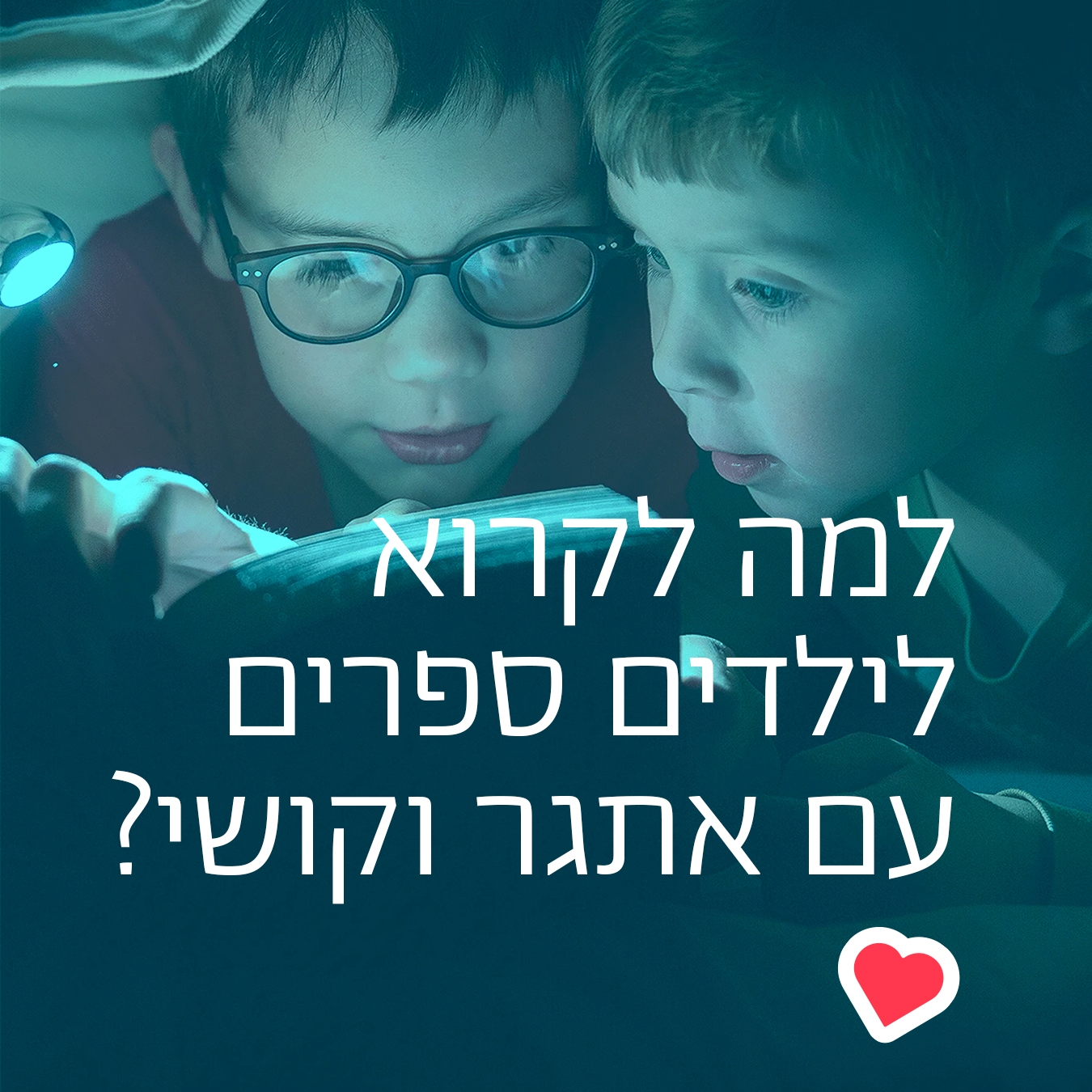
Suggested Family Activities
- It all began with a misunderstanding and hurt feelings, and then “Now you’ll see what’s going to happen!” After reading the story together you may discuss intentions and misunderstandings among friends, and share experiences with one another.
- Like Kramer the cat, we all feel big at times and small at other times. You can ask your children when they feel big and when they feel small, and talk about the advantages and disadvantages of each.
- “Scratches, bites, jumps and somersaults” – that’s how the author Meir Shalev describes cat games. You can flip through the book, select one of the animals and act out that animal’s movements.
- Kramer is very fearful of the large animals he meets in the forest. This can be an opportunity to discuss with your children caution and safety rules, fears, and ways to overcome fear.
- Kramer’s friends teach him an important lesson in friendship: A good friend is one who knows how to forgive and to apologize. You can look for the illustration where Kramer’s friends meet him in the forest, and note the expressions on their faces.
- Yossi Abulafia’s rich illustrations depict an array of animals – some domestic, others wild. You can look at the illustrations with your child and see how many of the animals you recognize. Does your child know all the animals’ names? Which of them can be found near your house? You can go for a hike. Which animals, large and small, do you meet on the way?
- You can act out the story using stuffed animals and toys. Allow your children to select the dolls to represent Kramer, his friends from the garden and the forest animals. The animals can be happy, be afraid, play together and quarrel – and, in the end, make amends and apologize.
- After reading the book together you can look at the picture of Kramer sleeping in his bed, choose a doll or stuffed animal and guide it to sleep by reading a “Sifriyat Pijama”
bedtime story.
Family Activities:
- The adults in the story are doubtful that the carrot will grow. You can discuss this with your children and share your own experiences. You may ask: Why do the adults had trouble believing that the carrot would grow? When you read the story, did your children think the carrot would grow? Did you ever have someone not believe you? How do you feel when others doubt things of which you are certain?
- The boy in the story does not speak, and we can only imagine what he is thinking and feeling as the others express their skepticism. If the boy could talk, how do you think he would respond? Together with your child you can select dolls to represent the boy, his parents and his brother. As you re-read the story, use the dolls to create a dialogue between the boy and his
- At the end of the story, the boy transports the carrot in a wheelbarrow. What do you think happens next? Where is he taking the carrot? How do the others respond when they see the giant carrot, and what does the boy do with it?
- The carrot grows under the ground, and not on the shelves of the grocery store! You can visit the supermarket or neighborhood grocery and take note of the various fruits and vegetables. What grows from a seed, like the carrot? What grows under the soil, and what blossoms on a tree? Which foods can be prepared from each fruit and vegetable, and what do we like in particular?
- Crockett Johnson’s illustrations depict the story that occurs above ground. You can suggest to your children that they draw a parallel story of the carrot, page after page, reflecting the process under the soil. In the end you will have two booklets illustrating the story “The Carrot Seed”: one of the boy and his family, and the other – the story of the
- There are many delicious foods that can be prepared with carrots: carrot juice, carrot soup, carrot salad, carrot bread and more! Here is an easy recipe for sweet and delicious carrot salad: Ask your children to help peel and grate a few carrots into a bowl. Add a bit of lemon juice, sugar and a handful of raisins and mix together. You can serve your carrot salad to the whole family. Bon Appetite!
- “The Carrot Seed” demonstrates the great amount of patience and perseverance needed to grow vegetables. These traits are necessary to achieve many goals in life. You can share a personal story with your child of something you achieved with great effort and after a long wait, and tell them about the sense of satisfaction this
Suggested Family Activities
- Do your children have a favorite doll or stuffed animal? After reading together the story about Maya and her kangaroo, you can discuss the special feelings we have toward objects, toys or stuffed
- You can take a picture of your children holding their stuffed animal, print out the photograph and decorate a frame for it. The framed photograph will serve as a memento in future years and will remind your children of the special relationship they had with the doll when they were
- The illustrations that accompany the story hint at changes in the blue kangaroo’s feelings, as more and more stuffed animals join him in Maya’s bed. You can flip through the pictures with your child and ask them to describe how they think the kangaroo feels on each
- Each night before going to sleep Maya recites “I love you, Blue Kangaroo”. Even when new dolls and toys are added, she ends her recitation with the same line. How do you get ready for bed? Do you have a special bedtime song, recitation or ceremony?
- You might want to discuss with your children why they think Maya agreed to share so many toys with her baby brother, but woulddn’t give away the blue kangaroo. Do your children have toys or dolls that are easier to share, and others they refuse to part with?
- Together with your children you can look for the pictures of Maya’s baby brother. You can tell the story through his eyes, and try to think how he feels as the story
- Maya and the blue kangaroo have a special relationship, which is not weakened as new dolls are added. Do you and your children have special relationships with family or friends? You can talk about this with your children, and reinforce their confidence in your feelings toward them.
- The gifts that Maya receives throughout the story are new and shiny, while the old kangaroo is old and worn. Sometimes we too prefer things that are new and shiny, and it can be hard to decide what to give up. The story can lead into a family discussion on loyalty, weighing considerations and making difficult
- The blue kangaroo feels crowded in Maya’s bed, but many times it is warm and cozy to lie together in bed! You can cuddle up and read books together in bed, and following this story, add more and more dolls and stuffed animals. You can also sing together fun songs like “Shovavim Bamita” by Datia Ben-Dor:
Family Activities:
1. Noa is very attached to the old doll that her grandmother made for her, but also likes new dolls and toys. You can ask your children which dolls and toys they like in particular, and remind them who gave them the gifts and under which circumstances.
2. Mr. Minasa tried to get rid of his old shoes when he arrived in the new country. You can play an imaginary game with your children: If you were leaving for a faraway place, what would you take with you and what would you leave behind?
3. Like Grandmother Agarnesh, you too can craft a hand-made doll for your child, using old socks and clothing. You are invited to send us a photograph of the doll, which we will happily post on the Sifriyat Pijama website!
4. Mr. Minasa arrived in the new country from Ethiopia. Where did your family originate? This is an opportunity to share your personal immigrant story with your children, and show them photographs of the old country. Perhaps you too have old bjects or clothing that you can search for together.
5. Mr. Minasa’s neighbors recognized his old shoes and returned them to him. Did you ever find something and return it to its owner? Was the owner happy to receive the lost object?
6. You can act out the story with your children. Each one in turn takes on the role of Mr. Minasa and looks for places around the house to hide the shoes. The other player finds them and declares, “Oh, here are Mr. Minasa’s old shoes!”
להציג לילדים את כריכת הספר
כדאי להציג לילדים את כריכת הספר ולשאול אותם: איזו חיה רואים בתמונה – ברווז או ארנב? האם כולם ראו אותה חיה? אפשר לבקש מהילדים לנסות להסביר לחבריהם כיצד לזהות את הברווז או הארנב. האם הצליחו לשכנע את חבריהם? אילו הייתם צריכים להכריע כקבוצה, מה הייתם קובעים: האם זה ברווז או ארנב? האם ההכרעה הקבוצתית חשובה או משמעותית?
אפשר לילדים לקרוא את הספר יחד בזוגות
כדאי לאפשר לילדים לקרוא את הספר יחד בזוגות, ללא התיווך שלך, ולהשתעשע בו. האם הספר הצחיק את הילדים? האם הוא הצחיק אותך?
מה מסתתר בקשקוש
האם אפשר לראות משהו שאחרים אינם רואים, או שאינם מפרשים כמוך? אפשר לשחק “מה מסתתר בקשקוש”: הילדים מתחלקים לזוגות. כל אחד בתורו משרבט ציור מופשט, ועל המשתתף השני לזהות בתוך התמונה דמות או עצם מוּכּרים, להוסיף פרטים חסרים ולצבוע אותם בצבע.
שיעור באיור - ברוז וארנב!
ברוז? ארנב? למדו לצייר גם ברוז וגם ארנב – יחד עם נעם נדב!
איך לצייר ברוז:
איך לצייר ארנב:
מגוון שיעורים באיור עם נעם נדב בעמוד היוטיוב שלנו, לצפייה לחצו >>
איך משכנעים מישהו להסתכל על המציאות דרך העיניים שלנו?
בסוף הסיפור מתחלפות נקודות המבט. מי שקודם לכן ראה ברווז מאמין עכשיו שזהו ארנב, ולהפך. אפשר לשוחח עם הילדים, להזכיר להם חוויות משותפות ולשתף אותך בניסיון החיים שלכם: האם פעם שיניתם את דעתכם בעקבות זווית הראייה של האחר? איך משכנעים מישהו להסתכל על המציאות דרך העיניים שלנו?
ליצור צלליות ידיים בצורה של ארנב (או ברווז!)
אפשר ליצור צלליות ידיים בצורה של ארנב (או ברווז!): מחשיכים את החדר ומאירים קיר אחד בפנס או במנורת קריאה חזקה. ממקמים את הידיים ליד מקור האור ויוצרים באמצעות האצבעות צורה של חיה. האם ניתן לזהות את החיה לפי הצלליות שעל הקיר? האם זהו ארנב או ברווז? בהמשך תוכלו ליצור חיות נוספות בעזרת כפות הידיים.
לצאת החוצה ולהביט בשמיים: מה רואים בעננים?
בכריכה הפנימית של הספר מצוירים עננים. האם הילדים מזהים צורה של חיה בתוך העננים? אפשר לצאת החוצה ולהביט בשמיים: מה רואים בעננים?
איך מרגישים כשהאחר אינו מצליח (או אינו מוכן) לראות את מה שאנחנו רואים?
איך מרגישים כשהאחר אינו מצליח (או אינו מוכן) לראות את מה שאנחנו רואים? תוכלו להציג לילדים תמונות של תעתועי ראייה או אשליות אופטיות, ולבקש מהם לספר מה הם רואים. שתי דוגמאות נודעות לתמונות “מבלבלות” הן תמונת האישה הזקנה והעלמה, והתמונה של כוס היין ושני הפרצופים.
תעתועי ראייה של חיות
הידעתם? סיפור הילדים “ברווז! ארנב!” מבוסס על תעתוע ראייה שצייר פסיכולוג אמריקני בשם ג’וסף ג’סטרו ב- 1899, ופרסם במאמר מדעי על הקשר בין המוח לבין ראייה. מאז פורסמו תמונות נוספות של ברווז-ארנב, כמו זו, וכן תעתועי ראייה של חיות אחרות כמו חמור-כלב ים, וברבור-סנאי .
איזו חיה ראיתם – ברווז או ארנב?
כשקראתם לראשונה את הספר, איזו חיה ראיתם – ברווז או ארנב? האם גם ילדיכם ראו את הדברים באותו אופן? האם הצלחתם בקלות לראות בכל פעם את בעל החיים באופן אחר? אילו הייתם צריכים להכריע, מה הייתם קובעים: האם זה ברווז או ארנב?
האם אפשר לראות משהו שאחרים אינם רואים, או שאינם מפרשים כמוך?
האם אפשר לראות משהו שאחרים אינם רואים, או שאינם מפרשים כמוך? אפשר לשחק “מה מסתתר בקשקוש”: כל אחד בתורו מצייר ציור מופשט, ועל המשתתף השני לזהות בתוך התמונה דמות או עצם מוּכּרים, להוסיף פרטים חסרים ולצבוע אותם בצבע.
להציג לילדיכם תמונות של אשליות אופטיות
איך מרגישים כשהאחר אינו מצליח (או אינו מוכן) לראות את מה שאנחנו רואים? תוכלו להציג לילדיכם תמונות של אשליות אופטיות ולבקש מהם לספר מה הם רואים. שתי דוגמאות נודעות לתמונות “מבלבלות” הן תמונת האישה הזקנה והעלמה, והתמונה של כוס היין ושני הפרצופים (ניתן למוצאן באינטרנט אם תחפשו “תעתועי ראיה”) – מה אתם רואים כשאתם מביטים בתמונות?
האם פעם שיניתם את דעתכם בעקבות זווית הראייה של האחר?
בסוף הסיפור מתחלפות נקודות המבט. מי שקודם לכן ראה ברווז מאמין עכשיו שזהו ארנב, ולהפך. האם פעם שיניתם את דעתכם בעקבות זווית הראייה של האחר? איך משכנעים מישהו להסתכל על המציאות דרך העיניים שלנו?
ליצור צלליות ידיים בצורה של ארנב (או ברווז!)
אפשר ליצור צלליות ידיים בצורה של ארנב (או ברווז!): מחשיכים את החדר ומאירים קיר אחד בפנס או במנורת קריאה חזקה. ממקמים את הידיים ליד מקור האור ויוצרים באמצעות האצבעות צורה של חיה. האם ניתן לזהות את החיה לפי הצלליות שעל הקיר? האם זהו ארנב או ברווז? בהמשך תוכלו ליצור חיות נוספות בעזרת כפות הידיים.
מה רואים בעננים?
בכריכה הפנימית של הספר מצוירים עננים. האם זיהיתם צורה של חיה בתוך העננים? אפשר לצאת החוצה ולהביט בשמיים: מה רואים בעננים?
Activities You Can Do at Home
- You don’t need to know how to read to figure out what’s going on in these comic strips! Your children can “read” the pictures and tell the story in their own words.
- Even young children can draw a comic strip. Ask them to choose a story they know and create a comic strip out of it.
- Mr. Fibber the Storyteller uses his imagination to invent impossible tales. Children, too, can make up wildly exaggerated and imaginative stories. Together with your children, you could work on creating your own imaginary tale. One of you could begin: “One morning, I was on my way to kindergarten when I saw (fill in the blank)…” The next person might continue the story line with: “…when suddenly, I came to…” At the end of the story, you could select one of the imaginary situations you concocted together, and make illustrations for it.
- What makes you laugh? After you read these comics—maybe close to the Purim holiday—you could host a Family Joke Night.
- Do you know other books by Leah Goldberg? You might look for her stories and poems at your school or library, so you can read and enjoy them together. We hope you enjoy reading and talking about this book!
Leah Goldberg
Leah Goldberg (1911-1970), born in Kovno, Lithuania, was a poet, author, and translator. She studied at the universities of Berlin and Bonn, and received a PhD in Semitic Linguistics at the age of 22. Two years later (in 1935), she made aliyah to Israel and established herself as a renowned poet. She edited and wrote children books, including Where Is Pluto?, Apartment for Rent, and many others which have become classics of Israeli literature. Goldberg also headed the Comparative Literature Department at the Hebrew University of Jerusalem. In 1970, she was awarded the Israel Prize for literature, but unfortunately passed away two months before the prize ceremony. Her mother accepted the prize in her name.
Family Activity:
- Gad feels that there is a “naughty boy” inside of him that is making trouble and irritating him. Discuss together: Is there really a “naughty boy” inside of him?
Who swears at the auntie and pushes Yocheved: Gad, the “naughty boy”, or both of them together? Where is the “naughty boy” when Gad is not angry? What do you think?
- The illustrator Danny Kerman chose to represent the “naughty boy” by drawing a small shadow of Look at them both (Gad and the “naughty boy”). What is the “naughty boy” doing when someone is angry with Gad? Choose one of the illustrations and make up a “shadow conversation” between two characters, using your hands: Shine a bright light on the wall, using a lamp or flashlight. One of you will make shadows with your hands as if you were the “naughty boy”, and the other will respond as if they were Gad.
- The adults are upset with Gad: Father says he is acting like a baby, Yocheved’s mother calls him a “savage”, and Grandmother is so angry her nose turns green. What do you think about the behavior of the adults who talk to Gad?
- Discuss with your child an incident when you could not overcome your anger. What can one do in order to prevent this? If we are angry, how can we deal with the consequences of this feeling?
- Gad says: “I have tried everything… in order to make the ‘naughty boy’ go ” There are seven illustrations in the book that describe Gad’s attempts to deal with the “naughty boy”. Look at these illustrations and try to identify how he is dealing with the “naughty boy”.
- Gad asks: “What shall I do with him, with the ‘naughty boy’?” Like Gad, we all have urges and habits that we are not proud Choose a habit that you would like to overcome and in this way become a hero or heroine! Make a “Badge of Bravery” to award the heroes (e.g.: a medal, crown, sticker, etc.) and award it to the children when they overcome their urges and behave maturely.
- The “naughty boy” is often troublesome, but he also has some good characteristics: courage, independence and a strong will. Surprisingly, he even knows how to dance! Inside the book cover there are a series of illustrations of the “naughty boy”. When one looks at them in sequence, it seems as though the “naughty boy” turns his anger into dancing. You’re welcome to dance with him. Choose a few moves for the children to do and create a little dance. You can sing or drum to accompany the dancing.
Family Activities
- You may want to look through the book and enjoy the lovely illustrations. Can you spot the apple on every page? Some of the objects and animals remain constant, while others change position. Which are constant? Which are in motion?
- Have you noticed that the mouse is smiling almost throughout the book? How do you think it feels while waiting patiently?
- You may want to take puppets or stuffed animals to represent the characters in the story, and act it out to your family and friends.
- We all lose our patience at times, waiting on line at the cashier, or getting stuck in traffic. You may like to share an experience with your child in which you finally made it after having waited for something for a long time. What ‘gift’ did you get at the end of the long wait?
- Many children find it hard to wait for their parent to finish what they are doing, or for their turn to be on the computer. Perhaps you could mark the time left to wait on an analog clock. Children are often more patient when they know when their “patience time” will be over.
How about putting on your aprons and making apple confit?
Ingredients:
1 kg of green apples
1/2 kg of sugar
1 cinnamon stick
1 lemon
Peel the apples with a peeler, take out the cores and dice them. Cook the apples, sugar and cinnamon stick in a pot on a small burner for one hour (you must be patient!). Once cooked, add some squeezed lemon to your confit.
Be-teavon! Bon Appetit!
מסיבת פיג'מות בגן
כדאי לערוך מסיבת פיג’מות בגן, יחד עם ההורים אחרי שעות הגן או עם הילדים בלבד בשעות הבוקר, ולקרוא יחד את הסיפור. אפשר לקשט את הגן עם תפאורה של כוכבים וירח ולהזמין את כולם להתכרבל יחד, ליהנות מהאיורים הרכים שמלווים את הסיפור ולעקוב אחר מסע ההתבגרות של נינה.
לשוחח עם הילדים על ההבדלים בין חלום ומציאות
“עכשיו לילה, אבל נינה חושבת שהיא ערה”. אפשר לשוחח עם הילדים על ההבדלים בין חלום ומציאות: האם גם לכם קרה פעם שלא הייתם בטוחים אם אתם ערים או ישנים? מה יכול לקרות בחלום ולא במציאות? אפשר לתת דרור לדמיון ולצייר ציור שכולו חלום.
להשוות את הסיפור
אפשר להשוות את הסיפור עם להיזכר בספר אחר שחולק השנה, “אמיליה” מאת נעמה בנזימן, שגם הוא מתאר עלילה דמיונית.
חבריה הצעצועים של נינה
חבריה הצעצועים של נינה חושבים שהיא מוכנה למעבר מזחילה להליכה, אבל נינה לא בטוחה בכך. בכל רגע בחייהם הילדים עומדים בפתח הישג חדש (למשל, מעבר לגן חדש או לכיתה א’, רכיבה על אופניים, עצמאות גוברת בפעולות יומיומיות). אפשר לשוחח על כך ולשאול אלו כוחות דרושים כדי לצלוח את המעבר, האם הם חוששים?
להמציא המשך לסיפור
הסיפור מסתיים בצעדים הראשונים של נינה. תוכלו להמציא המשך לסיפור: לאן נינה הולכת? האם היא גם מועדת ונופלת? איך מגיבים בני המשפחה והחברים כשהם רואים את נינה הולכת? הציעו לילדים לצייר ולכתוב יחד עמוד המשך לספר.
לשוחח עם הילדים על דברים ש'בוגרים' עושים ו'קטנים' עדיין לא
אפשר לשוחח עם הילדים על דברים ש’בוגרים’ עושים ו’קטנים’ עדיין לא. אפשר לערוך רשימה של הישגים ויכולות: מה יודעים הילדים לעשות היום שלא יכלו לעשות בתחילת השנה, ומה הם רוצים ללמוד לעשות כשיהיו בוגרים יותר.
להביא לגן תמונות שלהם כתינוקות
בעקבות הסיפור אפשר לבקש מהילדים להביא לגן תמונות שלהם כתינוקות, ולהציג אותן על לוח יחד עם תמונות שלהם מהשנה. כך כולם יכולים להתגאות ולהתרשם ממסע ההתבגרות של הילדים – וגם להיזכר בצעדים ראשוניים שלהם.
להכין יחד עם ילדיהם אלבום של "צעדים ראשונים"
תוכלו להפנות את ההורים לאחת ההצעות בסוף הספר – להכין יחד עם ילדיהם אלבום של “צעדים ראשונים”: צילומים של הילדים כתינוקות בזרועותיהם, ובהמשך זוחלים, הולכים, מבקרים לראשונה בגן… ולהציע להשאיר דפים ריקים להמשך ההתפתחות (המעבר לכיתה א’, לימוד קרוא וכתוב ועוד הרבה!).
סיפורים ושירים לילדים
נורית זרחי כתבה עשרות סיפורים ושירים לילדים. כדאי לחפש אותם ולקרוא אותם יחד, ולערוך פינה בגן של היוצרת ויצירותיה.
לשוחח עם ילדיכם על ההבדלים בין חלום ומציאות
“עכשיו לילה, אבל נינה חושבת שהיא ערה”. אפשר לשוחח עם ילדיכם על ההבדלים בין חלום ומציאות: האם גם לכם קרה פעם שלא הייתם בטוחים אם אתם ערים או ישנים? מה יכול לקרות בחלום ולא במציאות? אפשר לתת דרור לדמיון ולצייר יחד ציור שכולו חלום.
חבריה הצעצועים של נינה
חבריה הצעצועים של נינה חושבים שהיא מוכנה למעבר מזחילה להליכה, אבל נינה לא בטוחה בכך. האם ילדיכם עומדים בפתח הישג חדש? (למשל, מעבר לגן חדש או לכיתה א’, רכיבה על אופניים…) אפשר לשוחח על כך ולשאול אלו כוחות דרושים כדי לצלוח את המעבר, האם הם חוששים?
לצייר ולכתוב יחד עמוד המשך
הסיפור מסתיים בצעדים הראשונים של נינה. תוכלו להמציא המשך לסיפור: לאן נינה הולכת? האם היא גם מועדת ונופלת? איך מגיבים בני המשפחה והחברים כשהם רואים את נינה הולכת? הציעו לילדיכם לצייר ולכתוב יחד עמוד המשך לספר.
לשוחח עם ילדיכם על דברים ש'בוגרים' עושים ו'קטנים' עדיין לא
אפשר לשוחח עם ילדיכם על דברים ש’בוגרים’ עושים ו’קטנים’ עדיין לא. אפשר לערוך רשימה של הישגים ויכולות של ילדיכם: מה הם יודעים לעשות היום שלא יכלו לעשות לפני שנה, ומה הם רוצים ללמוד לעשות כשיהיו בוגרים יותר.
להיזכר בצעדים ראשוניים של ילדיכם
ילדים רבים אוהבים לשמוע סיפורים על ילדותם המוקדמת. לאחר הקריאה אפשר להתכרבל יחד ולהיזכר בצעדים ראשוניים של ילדיכם. האם אתם זוכרים באיזה גיל הם התחילו לזחול, ללכת, אולי לעמוד על רגל אחת בלי ליפול? אפשר לחפש תמונות ישנות ולהכין יחד אלבום של “צעדים ראשונים”: צילומים של ילדיכם כתינוקות בזרועותיכם, ובהמשך זוחלים, הולכים, מבקרים לראשונה בגן… אל תשכחו להשאיר דפים ריקים להמשך ההתפתחות (המעבר לכיתה א’, לימוד קרוא וכתוב ועוד הרבה!)
לצאת ל"טיול לילה"
כמו נינה וחבריה, גם אתם יכולים לצאת ל”טיול לילה”. האם הסביבה המוכרת נראית שונה בלילה? מה אתם רואים, אלו קולות אתם שומעים? כדאי לקחת שמיכה ועותק של הספר, לשכב על הדשא ולהביט בשמים. יחד אפשר לחפש את הירח (האם הוא “ורוד ושוטף את העצים באור כסף בהיר”, כמו בסיפור?), לִספוֹר כוכבים וללחוש סודות.
לילה טוב וקריאה נעימה מספריית פיג’מה!
Family Activities:
- You can flip through the book together with your children, looking at OraAyal’s heartwarming illustrations and pointing out each of the occasions on which the blanket helped Maya. You might ask your children what they think made the blanket change its size as the story went along.
- Like Maya, many children have a “lovey” (rag, blanket, pacifier, stuffed animal, or doll) that they take with them everywhere. Talk with your children about the strong attachment Maya feels for her “Blankie,” and share your own experiences: When you were young, did you have a favorite object to which you were particularly attached? Do your children have one? Perhaps you, too, want to embark on a “journey” with the item and do some growing with its support.
- Maya really wants to be four years old already. You could ask your children if there are things “big kids” do that “little kids” don’t. Together you could make an illustrated listof your children’s achievements and capabilities: things they know how to do today andcouldn’t do a year ago, and what they would like to be able to do when they are older.
- You might discuss special occasions throughout the year: holidays, the first or last day of school, important events in the life of your family. How do you mark all these occasions? Do you recite the Shehehiyanublessing, and if so – when?
- How does your family celebrate birthdays? Maya’s story underlines the point that maturity is measured not only by how old you are, but also by your actions. After reading the story, you might add a new custom to your family birthday celebrations—one that will give your children a chance to display their new-found maturity. You could suggest that they choose a toy, an item of clothing, or a doll or stuffed animal that they no longer need “because they’re big,” and give it away to a younger child.
- You could also hold a birthday party for one of your children’s dolls or stuffed animals – plan the party, make decorations, sing songs… everything you do for a birthday!
- Young children’s perception of time is not yet fully developed, and many children, like Maya, ask, “When will…?” Working together, you could design a weekly calendar showing all the days of the week, and then mark each passing day with a small picture or sticker.
Family Activities
- Look through the book together and examine the unusual illustrations that accompany the text. Notice the various perspectives the illustrator used in creating these pictures. Which pictures show the action from above—and which from the side? Talk with your children and ask them why they think the illustrator chose to portray the events on the bridge as she did.
- Sometimes, before we arrive at a good idea, we first have to try (and discard) some not-so-good ideas. Together with your children, go back over the various solutions which the bear and the giant proposed in the story. What are the upsides and downsides of each idea?
- Every child has experienced the clash of wills. Sometimes one family member wants to play music while the other wants quiet, or one wants to read in bed while the other wants to turn out the light and go to sleep. Or a child might be deep in a game when her parents inform her that it’s time to leave the house. … After reading the story with your children, talk about how all of us have differing desires at times, and recall any creative resolutions you and your family may have reached.
- Do you know the song, “The Whole World is One Narrow Bridge”? You can sing it with your children.
- Look around your neighborhood for a low wall, or a playground with ropes, slides, and ladders, and try (carefully!) to cross them at the same time from opposite sides. Do you, too, find yourselves forced to “dance” while hugging each other, just like in the story?
- After reading the story, you could start investigating the different kinds of bridges where you live. You could also build toy bridgesout of blocks, Legos, or other construction toys. Once your bridge is complete, you can use it to stage a little play based on the story, using dolls or Lego characters.
- Do you know other stories that feature a bridge? You can look at home, at your children’s kindergarten, or at your local library for more books and stories about bridges, including “The Bridge” by ShlomoAbass, “The Treasure” by Uri Shulevitz, and many more, and read them with your children.
A discussion on imagining together
Children love to play “make believe”. They enjoy pretending that they are grown up: “Driving” a car, making mud “cakes”, or playing with an imaginary friend. You can play this game with your child using a prop, such as a doll, pot, or toy car, and ask: Where are we going? What are we cooking together? What is the doll saying?
A Game of “Almost the Same”
Ron sees Shluli in the puddle, but, in fact, it is his own reflection in the water. You could also play a game of “mirror” in which two players face one another and take turns pulling a face, moving their head or leg, and having the other imitate them.
Family Activities:
- Together with your children, take the time to look closely at Na’ama Benziman’s beautiful illustrations. You may want to stop at the page where Emilia approaches the three steps leading to the preschool, and note the changes in her facial expression.
- After reading the story, you can make up your own fantastic story and draw it.
- Emilia really wanted to enter the classroom on her own, “without any problems and without making a scene”. You and your child can look at the first illustration in the book, that depicts Emilia saying good-bye to her mother, and compare the entrance to her classroom with your child’s schoolyard. What helps your child say good-bye and go into the classroom in the morning? Do you have a special ceremony or technique that eases the separation? After reading the story about Emilia, you may want to invent a new way to say good-bye in the morning, a way that will help your child feel grown-up and brave.
- Like Emilia, each one of us feels sometimes big and other times small. You can read the story together again and take note of the points in the plot when Emilia feels big and when she feels small. You might ask your child when they feel big and small, and emphasize the advantages of each condition.
- Emilia’s friend Dana enters the story at precisely the moment when Emilia is feeling lonely. You can use this as an opportunity to talk about friendship. You might ask: What do we like to do together with our friends, when do we prefer to be alone and what is more enjoyable to do together with others?
- Dana is very happy to see Emilia, and they play together. You too can play together and even make your own tea party like the girls in the story. What will you serve at your tea party, who will be big and who will be small? You can invite other family members, dolls or stuffed animals to join your party.
- You can recount all the things your child knows how to do alone, and some tasks he or she needs help with. You might want to share an experience of your own, and tell your children about a time when you overcame an obstacle on your own – and when you were helped out by family or friends.
- Emilia’s journey into the classroom is depicted like a dream. You might want to talk to your child about dreams. Do you remember your dreams? You can try to draw a picture of one of the dreams you or your child dreamt.
- You may want to take this opportunity to share one of your own childhood experiences with your child. Did you attend preschool? If so, do you remember being sad saying good-bye in the morning? With whom did you play, and what did you like to do with your friends? You might want to compare your preschool with your child’s current classroom.
רעיונות שהציעה נעמה בנזימן לפעילויות עם הילדים סביב האיורים שבספר
לחצ/י כאן לרעיונות שהציעה נעמה בנזימן לפעילויות עם הילדים סביב האיורים שבספר
Family Activities
You may want to re-read the beginning of the story together, and be reminded of the advantages of being a small cloud. Perhaps later you would enjoy discussing your child’s size with them, and mention things that only little children can do.
Despite the advantages of being small, and her friends’ positive attitude towards her, Cloudette wants more. You may want to discuss wishes and desires: is there anything your child wants to do but has yet to try? Is there anything they would like to do but are unable to due to their age or size? You could make a list of desires together. Perhaps some of them can already be fulfilled!
When Cloudette hears “Ribbit” and sees the dry puddle, she realizes what she can do. You could ask your child whether we always know how to help others, and share stories of help given to another, or how others have helped you exactly at the right time using just the right kind of help.
You may like to notice the bigger clouds’ nicknames for Cloudette, and how they treat her. They do not tease her, but instead accept her the way she is and like her. Following the story, you may want to discuss nicknames with your child, the various relationships between those older and younger, and the desire to be “a big kid”.
Do you like the rain? Following the story, you may want to ask your child whether they like the rain and why, who needs rain, and who enjoys it. Do you know other stories, songs and tales about the rain? You may enjoy curling up together in a warm corner of the house and telling rain stories.
Perhaps you would like to create a rainwater receptacle together. Remove the top part of a plastic bottle by cutting across it (watch out for sharp edges!), place the empty bottle in an open space near your home, or hang it on a wire outside your window. How long did it take it to fill up with rain? Your child may enjoy monitoring the level of water in the bottle, and deciding how to use the rainwater collected.
Every loaf starts with a single grain
“Every loaf starts with a single grain”: You may want to ask your child how “bread is brought out of the ground”, which forces of nature helped the wheat and other ingredients grow, and what one needs in order to turn wheat into bread.
ask your child to think of five things they like to eat
You could ask your child to think of five things they like to eat. Do they know what they are made of, and how they are prepared? You may want to make a “true meal” together, one that you make on your own from start to finish, including serving and clearing the table. Did you also feel satisfied with your effort and the entire process?
The princess did not want to disappoint her father
The princess did not want to disappoint her father, but hoped she could please him without making much of an effort. She ultimately overcame the difficulties she had encountered, and completed the task well. You may want to discuss the following with your child: Why do you think the king was unhappy with the ready-made loaves of bread brought to him by the princess? What is so special about the “true” loaf of bread? Have you ever been in a situation where you achieved something that was important to you after working hard, making a tremendous effort, or repeated attempts? You may want to share this experience and subsequent feelings with your child.
King Baguette looked at his princess'
King Baguette looked at his princess’ hands to determine whether she had brought him the true loaf of bread. You could also look at your child’s hands, and try to guess what they had done today. Children’s hands resemble their parents’, but are also different. You may want to compare your hands, and notice the lines “drawn” on them. Do you have the same lines?
At the end of the story
At the end of the story, the princess learned to appreciate the farmers’ hard work, and their contribution to her life, and even learned to thank them. Together with your child, you could think of the people around you who work hard to make everyone’s lives easier. You may want to try and count all the people who have helped us throughout the day (such as the people who clean the streets, security officers, bus drivers, those in building maintenance, etc.).
playing the "thank you game
You might enjoy playing the “thank you game”. A family member starts by saying “I’d like to thank…” and tells of a good thing another has done for them. It could be anything, great or small, whether ongoing or a single incident. The next begins their sentence the same way, and ends it as they wish, and so on. You could have a thank you round at the dinner table, or before bedtime.
During the journey
During the journey, the princess makes a loaf of bread, as well as a new friend! You may want to discuss the friendship between Fire and the princess together with your child, and compare it to the princess’ relationships with other characters in the book. Perhaps you’d enjoy telling your child about your friends, and share experiences with each other.
A Ciabatta Rolls Recipe
A Ciabatta Rolls Recipe
Ingredients
4 cups of flour
40g of yeast
1 tsp of sugar
1.5 tsp of salt
1.5 cups of lukewarm water
0.25 cup of olive oil
Method
- Stir the yeast in the lukewarm water until it dissolves, add the sugar, and let the mixture rise.
- Place the flour and fermented yeast in a bowl, add the salt and olive oil, and knead into dough.
- Cover and let the dough rise for approximately two hours.
- Form rolls and place on an oven tray covered with parchment paper or corn flour (to keep them from sticking). Let them rise for another thirty minutes.
- Bake in the oven for 25 to 30 minutes, at 220 degrees.
Bon Appétit!
Amalya's magic
You may want to discuss Amalya’s “magical secret”, which helped her believe in her drawing ability. What made her believe in herself, and how did she help the boy she met at the exhibition believe in his own talent? What do you think happened after the boy signed his drawing? You could try to continue the story.
Pep talk campaign
This story demonstrates the power of encouraging words of reassurance. You could announce the launce of a “pep talk campaign” at home: cut out notes of various colors and sizes, and have all family members write encouraging words and phrases on them. Hang the notes in various places around the house: on the fridge; on the bathroom mirror; in your schoolbag; under your pillow… When your self-esteem drops and fear takes over, all you have to do is look up and remember that a team of cheerleaders is behind each and every one of us.
Every painting starts with a dot
Every painting starts with a dot: You may want to take a sheet of paper and crayons, and make a joint drawing – the parent starts with a dot, and the child adds another detail, followed by the parent, and so on. At the end of this exercise you will get a shared drawing that each of you made a small contribution towards, which began with a single dot.
a visit to the exhibition
Every work of art, be it as small as a dot, can grow and evolve into an entire exhibition. You may enjoy taking your child to an exhibition at a gallery, theater, or museum. Perhaps you could pick a piece your child especially likes, and try to think which point the artist started from, and what they were trying to express.
Overcoming difficulties
Amalya’s teacher tells her to “just make a mark, and see what happens”. You may want to remind one another of your child’s or your own achievements that once seemed impossible. How did you overcome the difficulties along the way? Did anyone encourage you to get there? You could tell your child about a person that encouraged you to believe in yourself.
Looking ahead
Every mountain climb begins with a single step. What sort of capabilities and talents would you like to develop? Is there a member of your family who can help you get there? What are you able to teach others? Who can you encourage?
To learn more about The Dot and author Peter H. Reynolds, and for more activity ideas, please visit www.peterhreynolds.com/dot

Family Activities
You don’t have to stand on your head to see the world upside down! You may want to think together with your child what makes each of us different than others, even “upside-down” in relation to others (appearance, pastimes, opinions, talents, etc.)? How do your family members’ uniqueness and various perspectives contribute to the family as a whole?
You may like to think about the various characters together, and how each one reacts when they discover Shufon’s difficulty. Perhaps you would enjoy creating a dialog between two owls in different points along the book, and discuss with your child the change undergone by the entire owl community.
Sometimes what one person finds hard, another achieves with ease. In order to experience backward reading, you may want to write a word on a piece of paper and put it against a mirror. Look at the word’s reflection. Can you figure out what it says?
Following the story, you may enjoy having a reading ball at home! Each family member can bring their favorite book to the ball, and explain why they had chosen it. You can read the books together, relish the wordplay, and even feast on special refreshments (such as letter-shaped cookies or food associated with one of the books).
Wordplay:
You could look through the book and search for the blue words. Ask your child what sets them apart from the other words in the book, and why they think they were printed in a different color.
You may want to explain to your child that words that read the same left to right and right to left are called palindromes. You may like to think of other palindromes together (such as mom, dad, eye) and enjoy some wordplay.
Some of the words in the book have different meanings when read backwards. You may want to look for these examples and think of other words that create new words when read backwards.
ראיון עם המאייר אסף בן ארוש על תהליך יצירת הספר
ראיון עם המאייר אסף בן ארוש על תהליך יצירת הספר
Oded Burla [1915–2009]
Israeli author, poet, painter and illustrator, Oded Burla was born in Jerusalem to a Sephardi family who lived in Eretz Israel for more than 13 generations. His father, Yehuda Burla, wrote adult books and won many awards. Oded Burla attended the agricultural school at Mikveh Israel, followed by the Bezalel Art Academy. His first book was published when he was 45, and he since wrote and illustrated more than 70 children’s books, which, he claimed, contained 346 different animals! Burla was named the father of nonsense in Hebrew Children’s Literature. His humorous books are sophisticated and filled with surprising and amusing wordplay. Oded Burla has won awards for his work: the Zeev Award, ACUM Award and Bialik Award.
Family Activities
- How do we portray a melody? You may want to notice how illustrator Assaf Benharroch chose to draw the melody, and how it changes throughout the story. Perhaps you’d like to suggest that your child draw your melody together with you.
- Do you sing lullabies at home to your children? Do you remember a lullaby your parents sang to you when you were young? Share a lullaby you know with your child. You may want to renew this beautiful family custom, and sing together before bed.
- Do you know melodies that have no words? You may want to sing some with your child. To complete the experience, you may enjoy dancing together, and even making up your own words to this tune.
- Oded Burla wrote and illustrated many children’s books, among them A Smile in every Corner and Oded Burla’s Big Book. You may want to look for his works in the library or online, and enjoy reading them together.
- The plot of the story is straightforward and can easily be turned into a play. You may like to act it out with your child. Your child can play the part of the melody, and other members of the household can be the different characters in the book. You may want to add some more dialog to the story, in which the melody explains to the various creatures why they should sing.
- The mountain in the story has no need for the melody because “mountains don’t sing”; whereas the trees tell the melody: “We have our own songs”. According to Rabbi Nachman of Breslow, each blade of grass has its own song. By this he means that every creature in the world has a voice and melody of their own. Naomi Shemer wrote a beautiful tune to Rabbi Nachman of Breslow’s Song of the Grass. You may enjoy listening to it and singing along.
Family Activities
You may want to look at the illustrations that accompany the story together, and notice the many details that are not specified in the text. What do you think of Bonny’s ideas and Pop’s inventions?
You could invent, plan and build your own “magnificent tree” using building blocks or Lego, or various objects around the house or yard. Are “all sorts of things jutting out” of your work too? Send us a picture of your magnificent tree, we’d be happy to post it on our website.
Bonny and Pop realized that birds were attracted to trees and looked for an idea that would encourage the birds to visit them. The story may inspire you to make a bird feeder together: rinse a large, empty bottle thoroughly, cut a large opening out on one end of it, hang it in the balcony or on a nearby tree, and fill it up with pieces of cut fruit, seeds and breadcrumbs. Follow the birds, watching quietly from afar as they approach the bird feeder and eat from it.
“Bonny and Pop always had lots of ideas…” Little children often have big ideas and original thoughts. You may want to tell your child about some important inventors, in Israel and around the world, and remind them that they too were once children, brimming with ideas. Together you could think of a situation in your own lives that you’d like to change, and make suggestions. Are your ideas implementable?
“Just as their faces are not identical to one another, so their opinions are not identical to one another” (according to the Midrash on the Book of Numbers, chapter 21): family members and friends do not always think or act the same way, and sometimes differences in style and character can bother us. You may want to remind each other of each of your family members’ special talent and inclinations, and make note of the unique contribution each one makes.
Does your child have a special connection with a grandparent, aunt or uncle, like Bonny does? You may want to sit your child down with a beloved family member and invite them to engage in an activity that requires cooperation, such as putting together a jigsaw puzzle, or even baking a cake. How well did they work together? Did they have similar ideas or different ones? Remember, none of this matters, as long as we have fun spending time together!
Activities to Do Together at Home
Spend some time looking at the illustrations together and recalling all the things that the girl in the poem loves. Ask your children what they love “the most in the world.”
Did anything in the illustrations make you laugh? In the poem, the girl drew a lion that came out looking more like a rabbit, so she called it her “rabbitlion.” You and your children could draw some imaginary animals and invent made-up names for them.
Accepting oneself does not mean having no aspiration to improve. Have a conversation with your children about the things in our lives that we need to learn to accept, and contrast those with the things that we could strive to change. Brainstorm together about something that you all would like to improve, and about ways to achieve that goal.
Explain to your children the meaning of “Who is rich? The person who is happy with what they have,” and discuss what it signifies to each of you. Ask your children: who is rich in their eyes? What makes each member of the family happy? And what makes us, taken together as a family, happy?
You might start a new family tradition, using bedtime to recall the good things that happened today, and the good people that we love. Each family member might say two good things that happened to them today, and mention someone or something that they especially cherish.
Activities to Do Together at Home
Where do you do your grocery shopping? At the corner store? The supermarket? Perhaps the farmers’ market (shuk)? Together with your children, you could find a cake recipe, make a list of all the necessary ingredients, and go shopping together. Then, when you come back home, bake the cake together and share it with your friends and family!
“Ding-ding when you enter, ding-ding when you leave.” You could make some bells for your door. Fasten some small bells, beads, shells, or even some old spoons or keys together. Hang them on the wall or suspend them from the ceiling right by the open door, and wait for the breeze to make your bells go “ding-ding.”
Mr. Gedalyahu dreams a strange but entertaining dream, mixing the real with the imaginary. Have a conversation about dreams with your children. See if they can recall a dream they dreamed. Talk about how sometimes you might feel unsure whether you’re asleep or awake, and about things that can happen in a dream but not in real life. Give free rein to your imagination—draw pictures of your dreams!
Explain to your children the meaning of the Psalm verse, “I have learned something from all my teachers,” and see if you can recall the wise sayings attributed to the cricket. You could choose one of the cricket’s sayings and draw a picture of it. Do you know any other wise sayings? Every creature can serve as a source of wisdom for us. You could ask your children from whom (or what) they have learned something.
In his dream, Mr. Gedalyahu sells unnecessary things to a hen, a goat, and a bee. Talk about buying things. Do you always buy only what you need? Or are you sometimes tempted to buy something you don’t really need? After reading the story, talk with your children about how to be a wise consumer and about the difference between something you need and something you perhaps want but don’t need – always remembering that dreams, too, hold an important place in our lives.
Proposed Family Activities:
- Perhaps you would enjoy looking at the illustrations and finding the child’s three friends, and their dog, who appear on almost every page. What are they doing in each picture? Are they taking part in the child’s adventures?
- You may want to look through the book together, and read the poems out loud. Unlike a story with a plot, a collection of poems can be read in any order you like. Is there one poem you consider to be your favorite? You could try to learn it off by heart.
- You could also try to write short imaginative poems about something you had supposedly done, or had happen to you.
- Following these short rhymes, you may want to play with words, and make up your own funny rhymes. Does your first name rhyme with anything? And does your other family members’
- The child in the poems experiences funny, unexpected adventures: he rides a cloud; fights giants; and takes a walk in the street with an elephant. Perhaps you’d like to imagine yourself as the child: what would the spaghetti have turned into then? Who would you have taken elephant-back riding? And who would you allow into your secret room? Perhaps you would like to illustrate your own imaginative poems, or draw your secret room.
- Using your imagination may help to cope with daily limitations or difficulties. You may want to think of everyday situations together in which our imagination could help, and ask questions such as: “If I were as tall as a giraffe…”; “If I could fly in the sky…”, or “If I could be in two places at once…”. You may enjoy drawing these imaginary situations, and create your own “If I were…” scrapbook.
Family Activities:
- Perhaps you would enjoy looking at the illustrations and finding clues for the holidays mentioned in the story: Sukkot, Hanukkah and Purim. You could discuss the holidays in your family together: what do you especially like about each holiday? With whom do you spend them? Does your child have a favorite holiday?
- When you read the story for the first time, did you guess where Grandpa was taking little Hannah? Does your child also share a special relationship with an older member of the family? You may want to ask the elderly members of your family how they used to celebrate Passover. Which special customs or dishes did they have at home? Did they also sing Ma Nishtana as children on Seder Night?
- How do you celebrate Passover in your family? Does your child also have a special role to play on Seder Night? You may want to create a holiday scrapbook together, and suggest that your child draw the family celebrating together on Seder night and throughout the holiday.
- Does your child know any Passover songs, traditional or new? Can they sing Ma Nishtana? You may enjoy singing Passover songs together.
- On Seder Night, Hannah realizes that being the littlest Levine is the best. You may also want to discuss issues of big and small in your family. Ask your child what they would have liked to do on their own, and think of tasks in preparation for Passover that your child can do themselves. Children are happy and love to help – it would be wonderful if you could give them the opportunity to feel all grown-up!
Family Activities
- “Daddy says ‘Brush your teeth’ / Daddy says ‘Clean out your ears’…”
You may want to play charades and, rather than read the dialogue in the story, act it out without using any words. Can your children guess what the little boy’s daddy said?
- Perhaps you’d enjoy looking at the illustrations and discovering all the little boy’s stuffed animals and other toys. What sort of stuffed animals do you have? Do you also take them to bed with you at night? You may want to follow the illustrations and find out what happens to the toys when they lose the game (they go to sleep!)
- You can also play this game, often known as ‘Simon Says’: you each play the role of the king in turn and give others various instructions. If you begin by saying “The king says…”, the other players must follow your instruction; however, if the “king” orders you to do something without first saying “The king says…”, you do not follow the order. Did you get mixed up? You’re out of the game, and must wait until a new king assumes the throne.
- The little boy in the story pretends to be king and makes up new rules: in his kingdom you’re allowed to jump on beds, fly, be a giant, and ride wolves. You may want to use your imagination together, and think of things you’d like to change in your world. For instance, what would happen if we were to go to school at night and sleep in the daytime?
- The little boy in the story gets ready for bed having brushed his teeth, showered and kissed his father good-night. How does your child get ready for bed? Do you have a ritual, prayer or song that accompanies you as you transit between day and night?
- You may like to share memories from your own childhood with your child: did you share your bedroom with your siblings? Who tucked you into bed at night? Were you read bedtime stories or sung lullabies? Perhaps you went to bed with a doll or teddy-bear. Do you happen to remember a funny story from your past that is related to bedtime?
Family Activities
- This story is a fairytale, a work of fiction that comes to life through magical illustrations. The illustrator chose to place the kingdom inside a book, and have the characters be children playing “pretend” – making up the story about the imaginary kingdom. You may enjoy making a paper crown, cardboard scepter, and glamorous cape using a tablecloth or large scarf, and act out the story together.
- Perhaps you’d like to invent your own imaginary kingdom: What would it contain? What would it be made of? Would it have a king or queen? Would it also be teeny-tiny? You could write a story about your kingdom, or draw it.
- My own private palace: Using a simple, large cardboard box, you could create your own teeny-tiny kingdom. You could cut out doors and windows, and add (by drawing or using other accessories) towers and drawbridges to nyour heart’s content. Small toys can serve as king, advisors, and subjects. Who would you like to invite into your palace?
- The king chose to “change the rules of the game”: he stepped down, and left the comfort of palace life to win a friend. You may want to discuss your child’s friends with them. What sort of effort does your child put into their friendships? What do they like to do with their friends? Have they ever given anything up in order to stay friends with someone? You could share your own friendship experiences with your child.
- A kind deed for a friend: This story is full of longing. The subject misses his friend, the advisor misses the king… and the king misses his advisor… Do you also have a friend of the family or distant relative whom you miss? Perhaps you would like to send them a letter, e-mail, or picture by phone, or anything else that might make them happy. It could be a reminder of your true friendship, one that can overcome the physical distance between you.
- Do you know any other tales of kings and queens, princes and princesses? Perhaps you would enjoy inviting a friend over and reading those stories together.
Family Activities
- You may want to flip through the illustrations accompanying the story together, and look for the series of images in which Levin makes a wooden watch for himself. Following the illustration, perhaps you would like to make a “pretend” watch too. Which material would you choose for it? Would you prefer to make a pocket watch, as in the picture, or a wrist watch?
- The watch in the story ticks loudly and is kept in father’s pocket. These days, people wear wrist watches that do not tick at all, and digital clocks on mobile phone screens are prevalent. How many types of clocks and watches does your child know? You can go through each room of the house looking for all the clocks and watches you can find. Perhaps you’d enjoy discussing the various types of clocks and watches with your child – analog, digital, cuckoo, and even the hourglass and sun dial.
- Little Levin longed for a watch or clock of his own and dreamed of owning one. You might talk about your child’s strong desires, anticipation and waiting. You may want to share with your child an incident in which you had longed for something and received it at long last.
- You can make a family clock together. Cut a large circle out of cardboard, write the numbers 1 to 12 to represent the hours, and use a split pin to fasten the clock hands to the center of it. Move the hands to denote daily activities such as when we leave for school in the morning, when we eat dinner, and what time we settle down to bed.
- Have you ever visited the famous clock exhibition at the Museum for Islamic Art in Jerusalem? If feasible you could visit it with your child and view the vast collection of clocks and watches from different periods of time that are on display there.
- Levin Kipnis wrote hundreds of well-beloved children’s poems and stories that form part of Israeli culture. You may wish to look for them at home, in kindergarten, or at the library, and read them together. Some of his poems have been rendered into songs. Do you know the tune composed by Moshe Wilensky for Shaon Ben Hayil? You could sing it with your child.
Haya Shenhav
Haya Shenhav is a poet and author born in 1936 in Kefar Yehoshua, in the Jezreel Valley. Her first children’s book, Mitz Petel (“Raspberry Juice”), was published in 1970, and is a huge favorite among children to this day. Among her well-known and much loved works are Aliza Habarvaza Vehahaverim (“Aliza the Duck and Friends”), and Hippo-Tam, as well as the songs Gveret Im Salim (“A Lady with Groceries”), and Mi Shavar Et Hatzalahat (“Who Broke the Plate?”). In 1985, Haya Shenhav was awarded the Zeev Prize for Children and Youth’s Literature, and in 2004 she was the Bialik Literature Prize laureate. Haya Shenhav lives in Ein Kerem, Jerusalem.
Family Activities
Pit, Pet, Tu is a long and adventure-filled story. You may want to read one adventure at a time, and then ask your child to pick an illustration, and tell you what the dwarves are doing now in their own words.
You could read it together several times, helping your child remember the sequence of events, and join you for the refrain: “Dwarves can do such things…”
You may enjoy looking at the illustration depicting the dwarves turning the mountain into a home. Do you recognize the food? What is your favorite? You may want to prepare one of the dishes the dwarves ate, or plan a back-to-front meal, where you eat dessert first.
One of the dwarves’ favorite pastimes is chatting. They enjoy sitting with one another, and remembering shared experiences. What do you like doing with your friends?
Do you know the tune to the song Meahorey Hahar 1, 2, 3 (“Behind the mountain, 1, 2, 3”)? You could sing it together.
Each time the dwarves transform the mountain into something else – a home, a boat, and even a car. You may also want to engage in a game of “pretend”, and turn familiar objects into other things using your imagination. You could pick a different object each time, and tell each other what it has turned into.
Would you like to play with dwarves? You may enjoy drawing little dwarves on toilet paper rolls, popsicle sticks, old socks, or rolled-up paper… You could make three dwarf puppets, and use them to tell the story.
Pit, Pet, Tu is the last PJ Library book you will be getting this year. Enjoy reading it, and also reread your favorite PJ Library books from previous months. Perhaps this time you could let your child read it to you… See you next year!
Family Activities
- You may want to look through the book for Little Gorilla and discover where he is hiding in each illustration. Try to imagine what his fur feels like, what he eats, and how big he is. Do you also like Little Gorilla?
- You may enjoy reading the story once more, and replacing the words Little Gorilla with your child’s name. Instead of jungle animals, say the names of your friends and relatives, who all loved your child when s/he was born, and love them still.
- Perhaps you would like to look at family photographs together, and remember what your child looked like when s/he was born. You could tell your child how happy and excited the whole family was when they were born, and share stories of the help extended by friends and relatives, as well as the joy surrounding the new addition to the family.
- It’s great to be big! You may enjoy recalling all the things your child can do today that they could not do when they were “little”, such as walking, talking, reading together, feeding themselves, putting their toys away, etc. When your child helps to clear the table or tidy up the room after playtime, you may want to commend them and say: “It’s great that you’re so big!”.
- Little Gorilla celebrated his birthday in the jungle. You may want to imagine what the animals’ party was like and discuss your thoughts. Did they make him a special cake? Or sing songs? Perhaps you could act out Little Gorilla’s birthday party using stuffed animals.
- It’s nice to liken our love for our children to a plant that always grows. Before bedtime, you could kiss your child and tell them you can’t wait for tomorrow to come, so that they’re a little bigger, and your love for them will grow some more too.
Proposed Family Activities
- You may enjoy looking at the illustrations together. Which toys do Noam and Elad play with? What does your child enjoy playing with – be it with their siblings, friends, or on their own?
- “Noam didn’t mean to fight with Elad, Noam didn’t mean to slap his hand”: You may want to ask your child how it is that Noam did not mean to fight and slap? Have you ever had a similar experience?
- We all make mistakes sometimes. You may want to share an incident with your child in which you felt the need to say you’re sorry. Was it difficult for you to do? How did you feel after apologizing?
- You may enjoy looking at the final illustration, and reflect together about the final lines of the story. Why are both brothers happy? Who, in your opinion, is happier?
- Noam and Elad are brothers, but they’re also best friends. Who is friends with your child? What do they enjoy doing together? After reading this story, you may want to invite a friend of your child’s over to play.
Anda Amir (1902–1981)
Israeli children’s poet and author, Anda Amir, was born in Poland, and immigrated to Israel in 1920. She wrote many children’s poems that accompany Israeli children to this day, among them The Hedgehog Wanted to Dance, The Sparrow, and Golden Ship. For her numerous stories and translations Amir was awarded the Bialik Award in 1936, and the Israel Prize in 1978.
A different kind of reading
Reading a poetry book and a storybook is not the same. The poems included in this collection are short and catchy, and you may enjoy reading them over and over again. You could invite your child to leaf through the book, and select a different poem each time. In a little while, your child will know the words, and be able to recite them on their own.
Putting on a show
The animals in the book are humanlike: the teddy-bear takes care of the doll; the moon loses its hair; and the bunny goes shopping. You may want to suggest that your child use some toys and stuffed animals to act out their favorite poems.
Remembering rhymes
Do you remember poems you used to recite as a child? After reading this book, you may want to try and remember poems you once knew off by heart, and introduce them to your child.
Singing together
Some of the poems included in this collection have been put to music. If you do not know the tune, you could look it up online, listen to it, and sing together. You may also enjoy accompanying your singing with simple musical instruments: a tambourine, bell, harmonica, or pair of wooden spoons.
You may want to read the story several times
You may want to read the story several times, enjoying together the rhyming games and opposites, and accompanying Miriam on her quest for the sea. After several readings, your child will probably be able to complete the sentences, and “read” the story themselves.
Does your child know the sea?
If you do not have a beach close by, you could spend some time at the pool, fill a tub in the back yard, or even have a bath. Take simple seaside playthings along with you, such as a funnel, sieve, and various sized plastic bottles. Have fun!
Miriam's questions contain many opposites
hot–cold, big–small, old–new etc. You may enjoy playing an opposites game together. One of you could ask the other: “Is it ______ (hot, big, old…)?” and the other could reply: “No, it’s ________ (cold, small, new..)!”
You may enjoy playing the "warm-cold" game together
One of you thinks of an object in the room, and leads the other toward it using clues of “warmer” (the object is close by) or “colder’ (the object is far away).
Following the story, you may like to have a conversation with your child about seasons,
Following the story, you may like to have a conversation with your child about seasons, and discuss how our activities change in winter when it is raining outside, and in summer, when it’s hot out.
Mirik Snir wrote dozens of wonderful books for young children
Mirik Snir wrote dozens of wonderful books for young children. You may want to look for them, at home or the library, and read them together
Family Activities
- Yoav wants a tail “right here, right NOW”. You may want to point out the larger font and ask your child why they thought this word was bigger than the others. Do you or your child ever want anything RIGHT NOW? Perhaps you would like to discuss desires, wishes and patience together.
- What does Yoav do with his tail? He wags it, tickles with it, waves it and so on. You may want to look through the book and find all the gestures Yoav makes. Perhaps you would like to invite your child to make the same gestures Yoav makes, or invent new ones together.
- Many children like to dress up, and not only on Purim! You may want to make a basket or a box filled with different pieces of fabric, scarves, and maybe even a tail! You could sew a tail as Yoav’s mother did, attach a tail-like belt, or stuff a sock full of pieces of fabric and pin it onto your pants using a safety pin.
- You may want to join Yoav and look for your own tails. You couldn’t find them? Perhaps instead you’ll find your arms, knees, elbows…? There are many ways of getting to know our bodies: through pleasant touch, conversation, song, play and movement.
- Does your child, much like Yoav, like animals? Have they ever wondered what they need a tail for? You may want to look around you and in pictures for animals with various kinds of tails. You could tell your child about the uses animals have for their tails (impressing other animals or threatening them, shooing away flies, helping them keep their balance etc.). The story calls for observing and comparing humans to the animals around us. What similarities are there between them? And what differences?
Find the animals
Yossi Abulafia has put some entertaining details in the illustrations that aren’t mentioned in the story. Try to find the dog and the cat on each page. Did you find them? What are they doing? What sort of expression do they have on their faces? You could try imitating the facial expressions and movements of both the dog and the cat. What else did you find in the illustrations? Do your children know the names of the different objects?
Dad and Noam, you and your children
Nira Harel tells us which games Noam likes: playing ball, hugging his teddy bear, and playing ‘pretend’ games. You and your children can play ‘pretend’ together. Each one takes a turn pretending to be Noam—saying “That one!” while pointing to something in the room. The family member pretending to be Noam’s Dad then tries to guess which object is meant. At the end of the game everybody hugs and laughs, just like in the story.
There is nothing like a sense of humor to defuse tension in moments of frustration
There is nothing like a sense of humor to defuse tension in moments of frustration. Next time you are struggling to understand what your children are saying, try remembering “That One!” Recall the father’s sense of humor and the funny illustrations. Then maybe when your children ask for “that one,” a loving hug will help you, too?

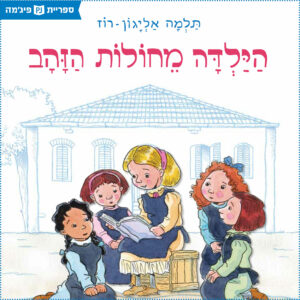 The Girl From The Golden Sands
The Girl From The Golden Sands 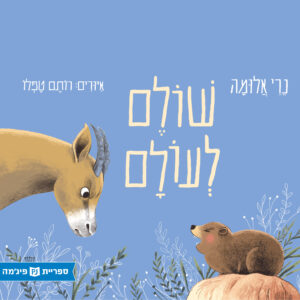 Peace to the World
Peace to the World 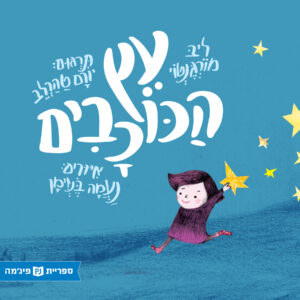 The Tree of Stars
The Tree of Stars 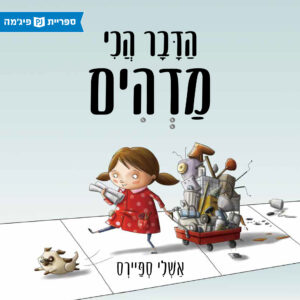 The Most Magnificent Thing
The Most Magnificent Thing 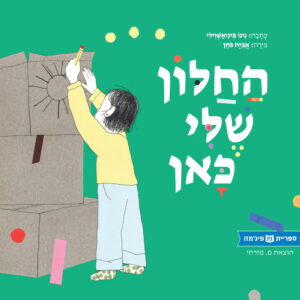 My Window is Here
My Window is Here 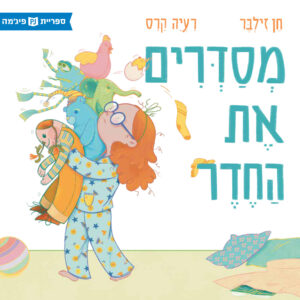 Tidying Up the Room
Tidying Up the Room 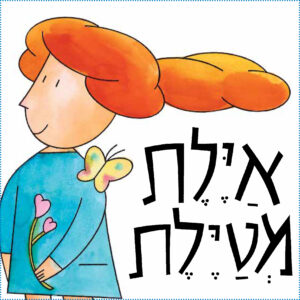 Ayelet Takes a Walk
Ayelet Takes a Walk 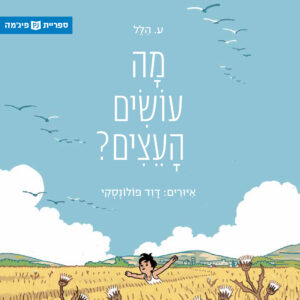 What Do the Trees Do?
What Do the Trees Do? 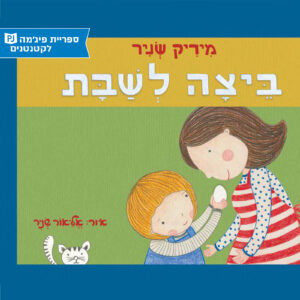 An Egg for Shabbat
An Egg for Shabbat 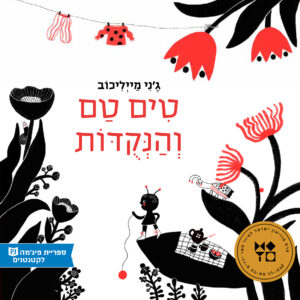 Tim Tam and the Spots
Tim Tam and the Spots 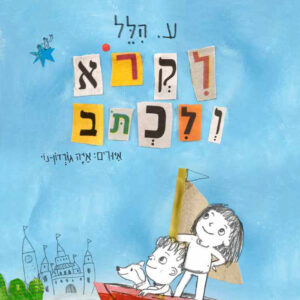 Reading and Writing
Reading and Writing 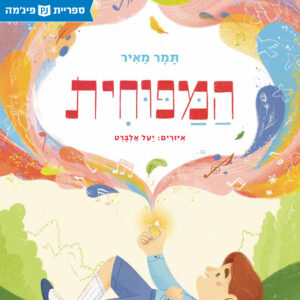 The Harmonica
The Harmonica 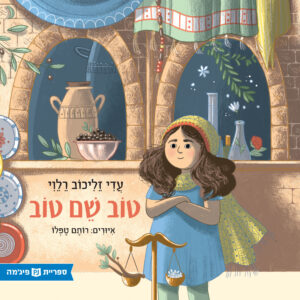 A Good Name
A Good Name 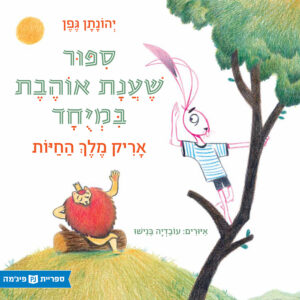 A Story that Anat Especially Likes
A Story that Anat Especially Likes 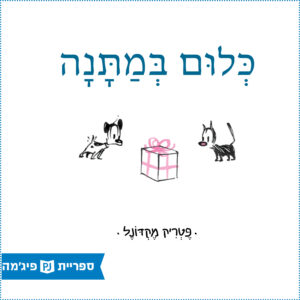 The Gift of Nothing
The Gift of Nothing 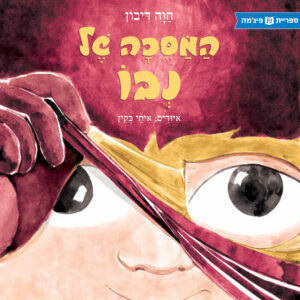 Nevo’s Mask
Nevo’s Mask 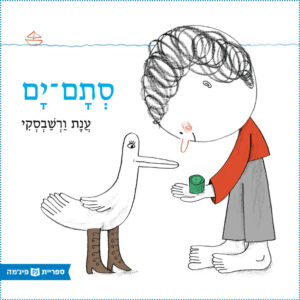 Just the Sea
Just the Sea 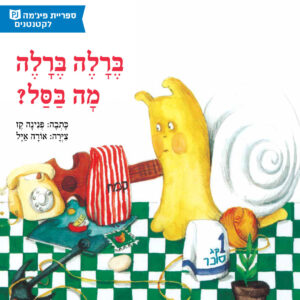 Berale Berale What’s in the Basket?
Berale Berale What’s in the Basket? 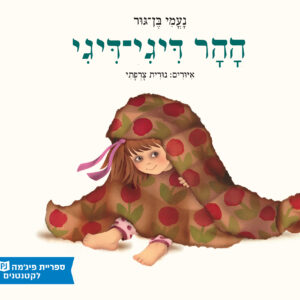 The Hill Tickle-Tickle
The Hill Tickle-Tickle 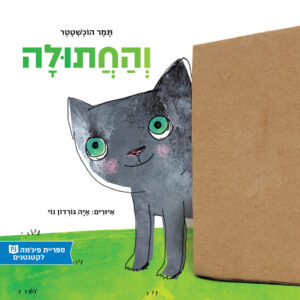 And the Cat
And the Cat 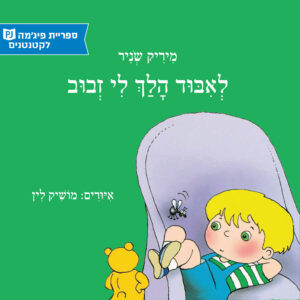 The Fly That Got Lost
The Fly That Got Lost 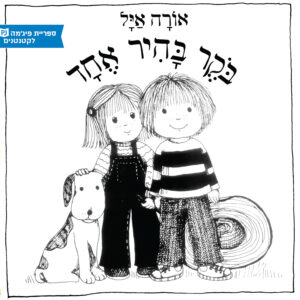 One Bright Morning
One Bright Morning 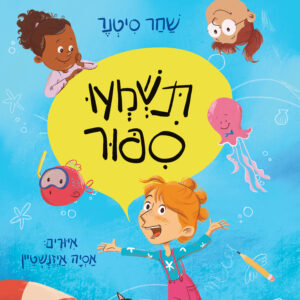 Let Me Tell You a Story
Let Me Tell You a Story 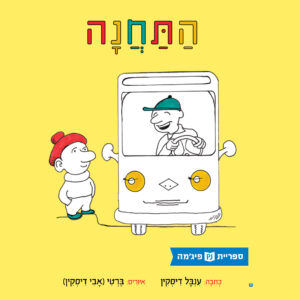 The Bus Stop
The Bus Stop 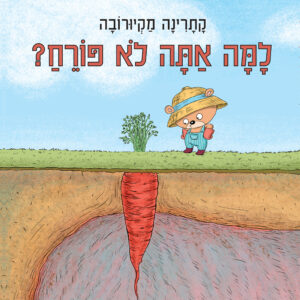 Why Don’t You Flower?
Why Don’t You Flower? 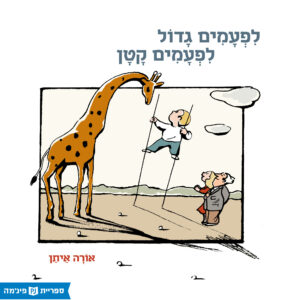 BIG OR SMALL
BIG OR SMALL 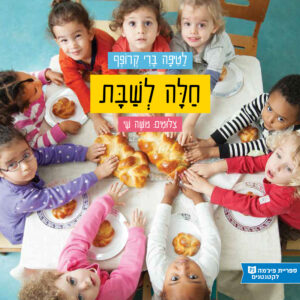 It’s Challah Time!
It’s Challah Time! 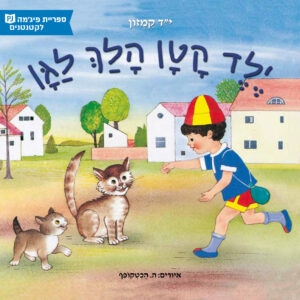 A Young Boy Went to Kindergarten
A Young Boy Went to Kindergarten 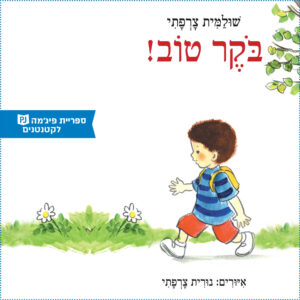 Good Morning!
Good Morning! 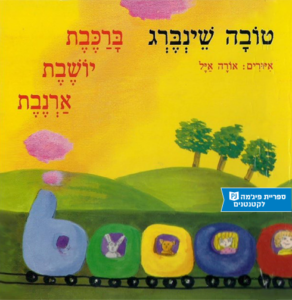 There’s A Rabbit on The Train
There’s A Rabbit on The Train 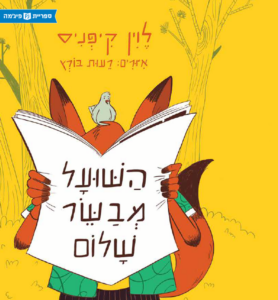 The Fox Announces Peace
The Fox Announces Peace 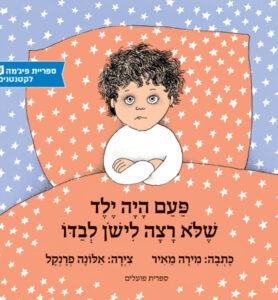 The Boy Who Wouldn’t Sleep Alone
The Boy Who Wouldn’t Sleep Alone 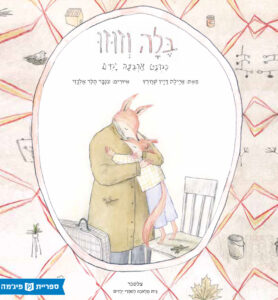 Bella and Zouzou
Bella and Zouzou 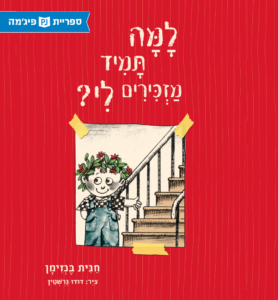 Why Do They Always Remind Me?
Why Do They Always Remind Me? 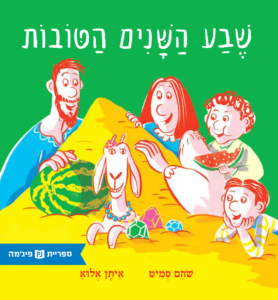 Seven Good Years
Seven Good Years 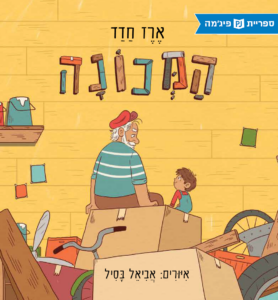 The Machine
The Machine 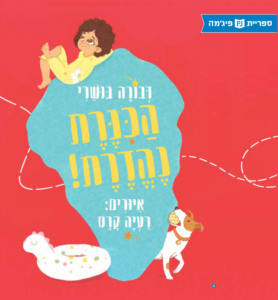 The Sea of Galilee is Fantastic
The Sea of Galilee is Fantastic 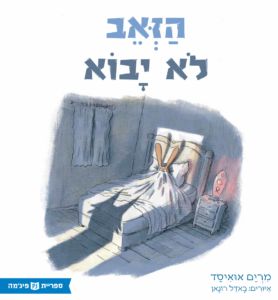 The Wolf Will not Come
The Wolf Will not Come 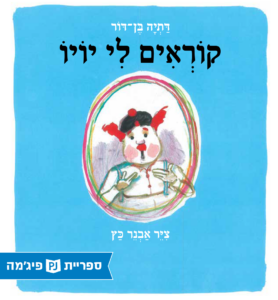 My Name is Yoyo
My Name is Yoyo 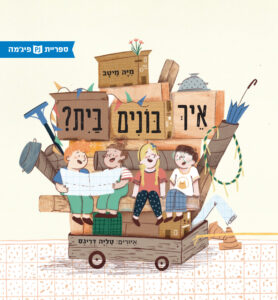 How to Build a House
How to Build a House 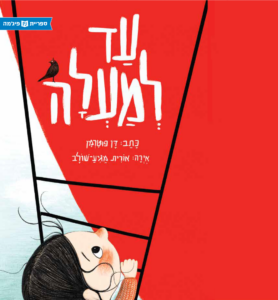 Up and Over
Up and Over 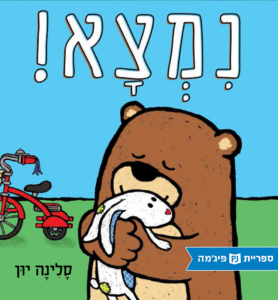 Found
Found 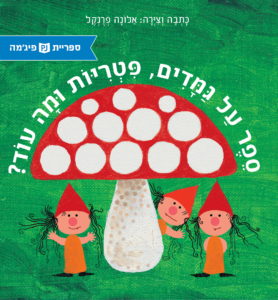 One, Two, Three, What Can a Mushroom Be?
One, Two, Three, What Can a Mushroom Be? 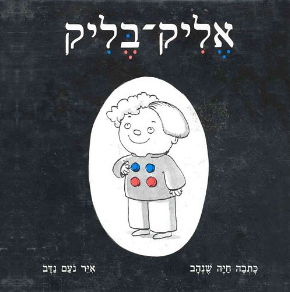 Elik Belik
Elik Belik 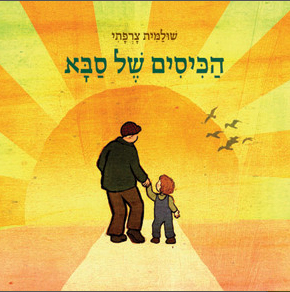 Grandpa’s Pockets – For Families
Grandpa’s Pockets – For Families 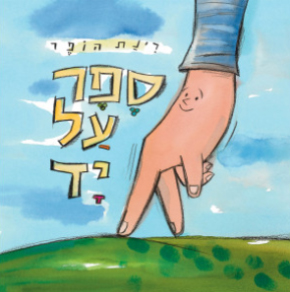 A book about A hand
A book about A hand 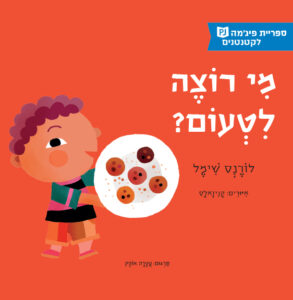 Who wants to taste?
Who wants to taste? 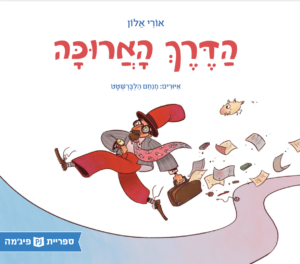 The Long Road
The Long Road 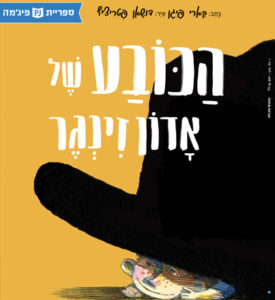 Mr. Zinger’s Hat
Mr. Zinger’s Hat 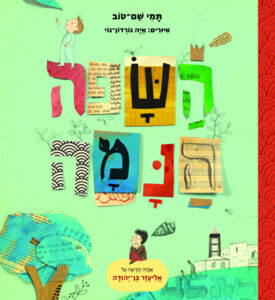 The Sleeping Language
The Sleeping Language 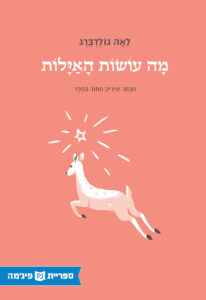 What do the Gazelles Do?
What do the Gazelles Do? 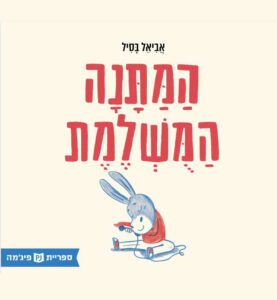 The Perfect Gift
The Perfect Gift 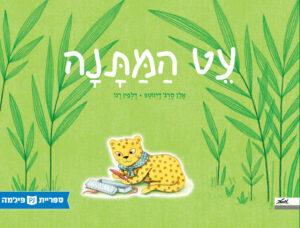 Le Cadeau (The Gift)
Le Cadeau (The Gift) 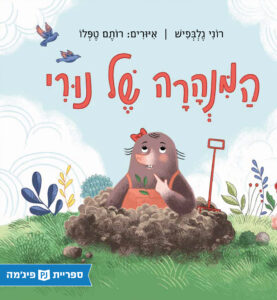 Nuri’s Tunnel
Nuri’s Tunnel 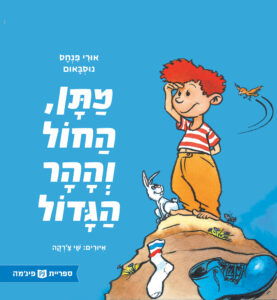 Matan and the Great Sand Mountain
Matan and the Great Sand Mountain 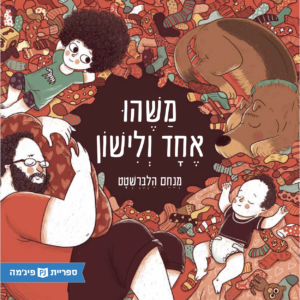 One Last Thing before Bed
One Last Thing before Bed 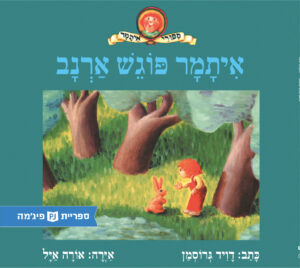 Itamar Meets a Rabbit
Itamar Meets a Rabbit 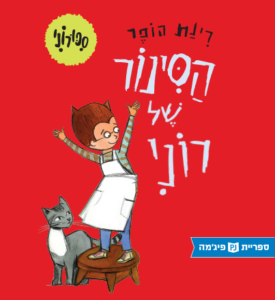 Ronnie’s Stories: Ronnie’s Apron
Ronnie’s Stories: Ronnie’s Apron 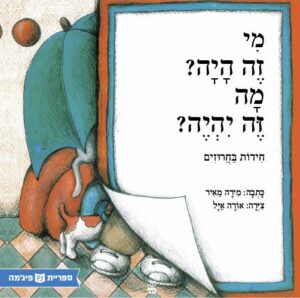 What’s That? What Could it be?
What’s That? What Could it be? 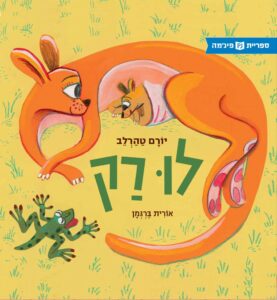 If Only
If Only 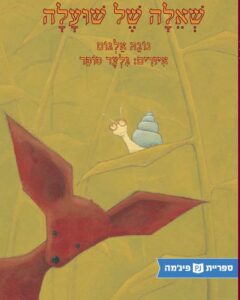 Why Not?
Why Not? 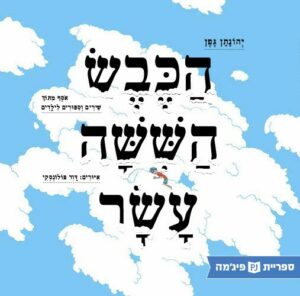 The Sixteenth Sheep
The Sixteenth Sheep 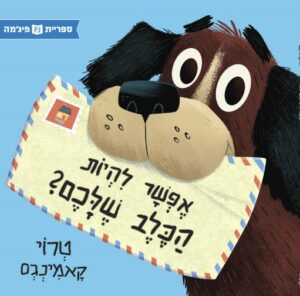 Can I Be your Dog?
Can I Be your Dog? 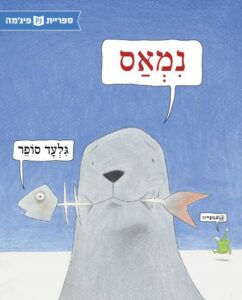 Fed Up
Fed Up 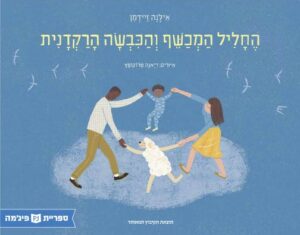 The Magic Flute and the Dancing Sheep
The Magic Flute and the Dancing Sheep 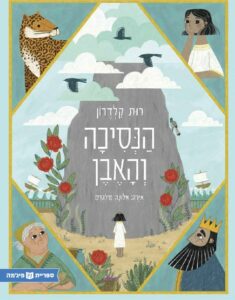 The Princess and the Rock
The Princess and the Rock 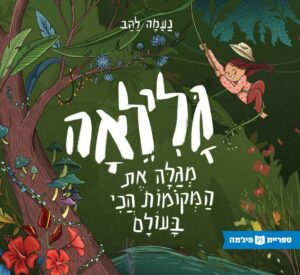 Galilea
Galilea 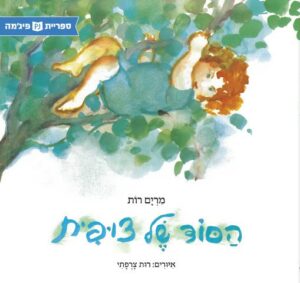 Robin’s Secret
Robin’s Secret 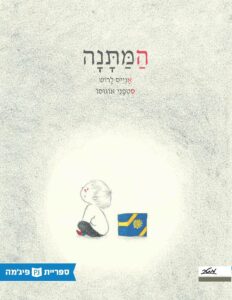 The Gift
The Gift 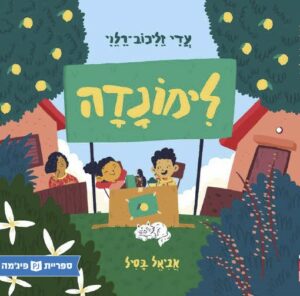 Lemonade
Lemonade 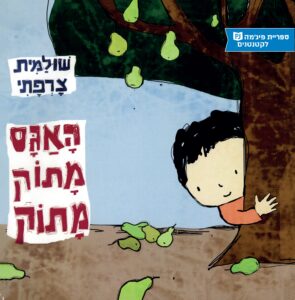 21,600The Pear is Extra Sweet
21,600The Pear is Extra Sweet 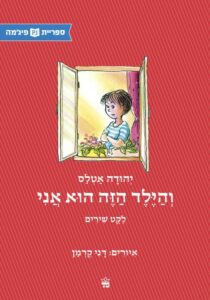 It’s Me
It’s Me 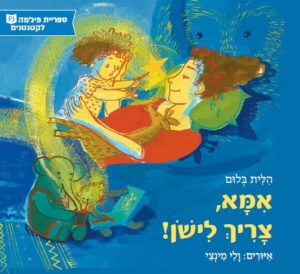 Mommy Time to Sleep
Mommy Time to Sleep 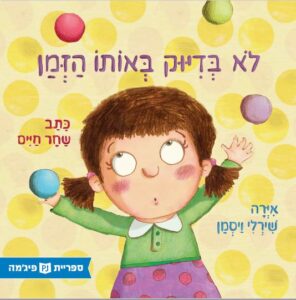 Not at the Exact Same Time
Not at the Exact Same Time 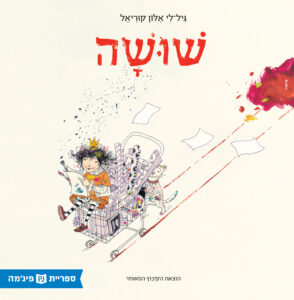 Shusha
Shusha 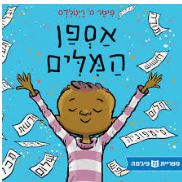 The Word Collector
The Word Collector 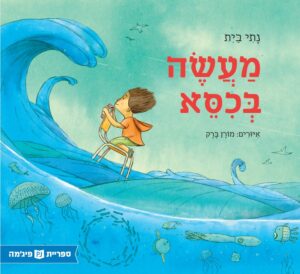 About a Chair
About a Chair 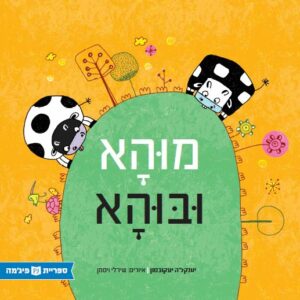 Mooha and Booha
Mooha and Booha 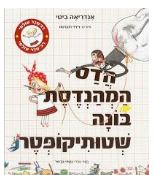 Rosie Revere, Engineer
Rosie Revere, Engineer 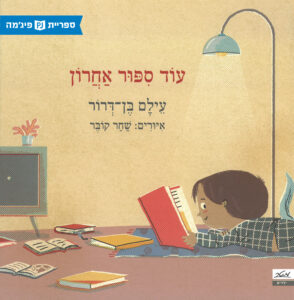 One Last Story
One Last Story 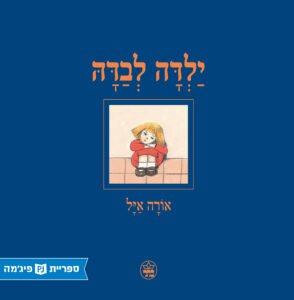 A Girl all by Herself
A Girl all by Herself 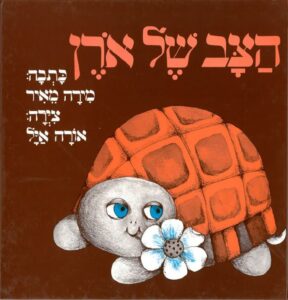 Oren’s Turtle
Oren’s Turtle 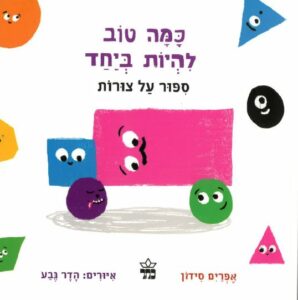 Friendly Shapes
Friendly Shapes 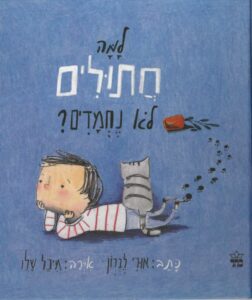 Why aren’t Cats Nice?
Why aren’t Cats Nice? 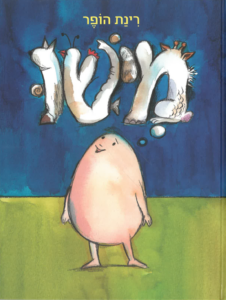 Somebody
Somebody 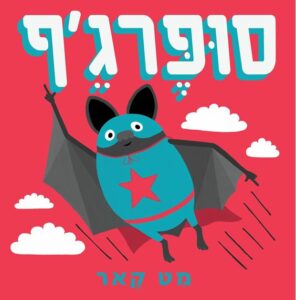 Superbat
Superbat 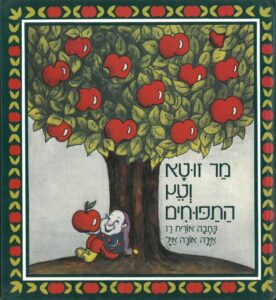 Mr. Zuta and the Apple Tree
Mr. Zuta and the Apple Tree 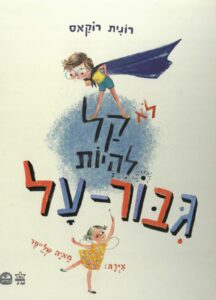 It’s not Easy to be a Super Hero
It’s not Easy to be a Super Hero 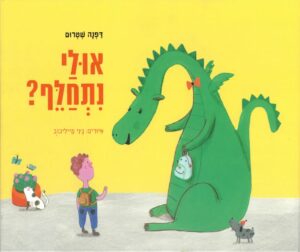 How about Changing Places?
How about Changing Places? 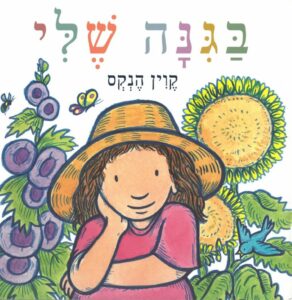 My Garden
My Garden 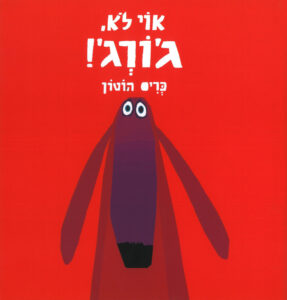 Oh No, George!
Oh No, George! 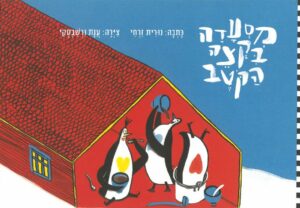 The Cooking Penguins
The Cooking Penguins 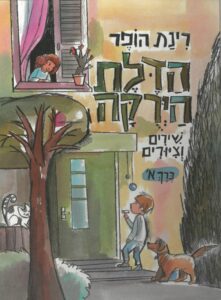 The Green Door
The Green Door 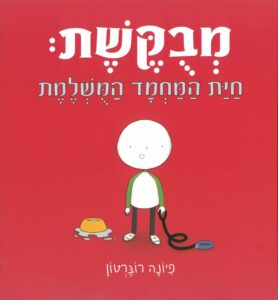 Wanted: The Perfect Pet
Wanted: The Perfect Pet 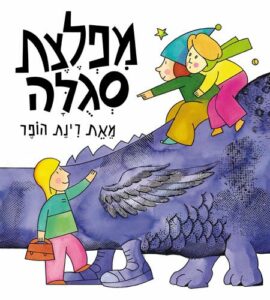 Purple Monster
Purple Monster 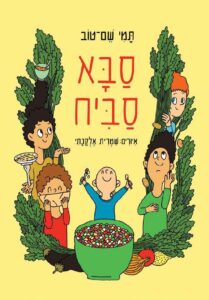 Sabba Sabich
Sabba Sabich 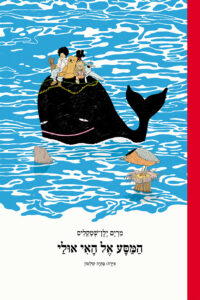 The Journey to the Island of Maybe
The Journey to the Island of Maybe 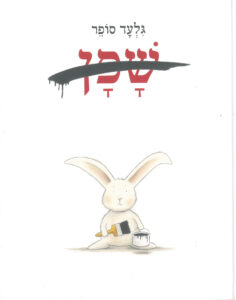 Shafan (Hyrax)
Shafan (Hyrax) 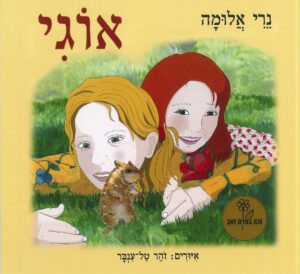 Ogi
Ogi 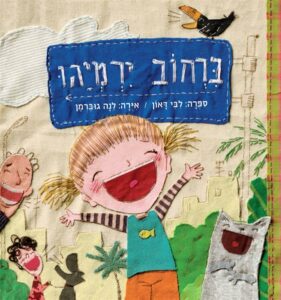 Yirmiyahu Street
Yirmiyahu Street 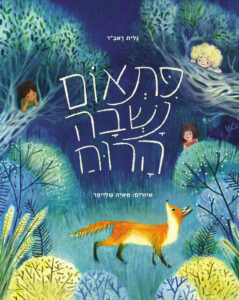 At the Heart of the Orchard
At the Heart of the Orchard 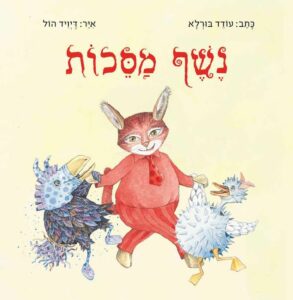 Masquerade
Masquerade 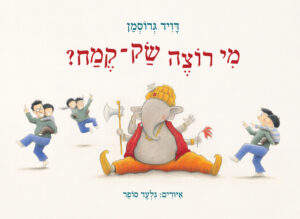 Who Wants a Piggyback?
Who Wants a Piggyback? 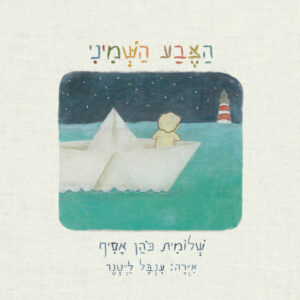 Color Number Eight
Color Number Eight 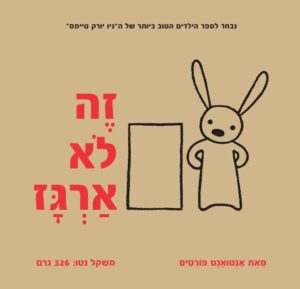 Not a Box
Not a Box 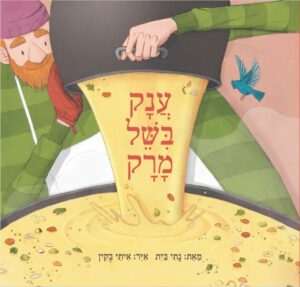 The Giant is Cooking Soup
The Giant is Cooking Soup 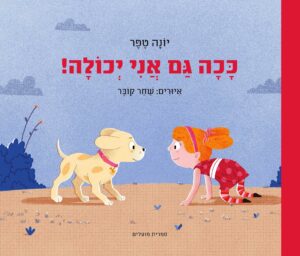 I Can do it too!
I Can do it too! 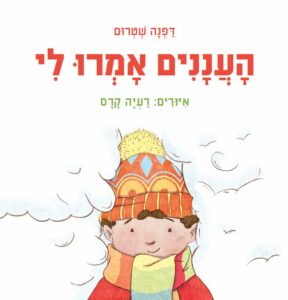 The Clouds Told Me
The Clouds Told Me 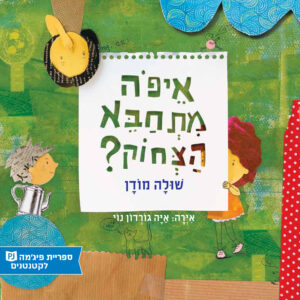 Where’s the Laughter?
Where’s the Laughter? 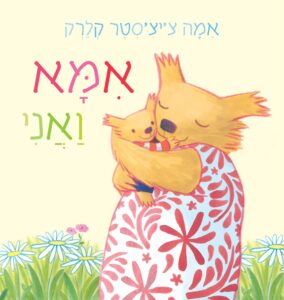 Mummy and Me
Mummy and Me 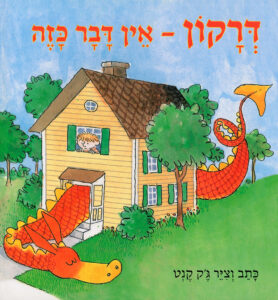 There’s No Such Thing as a Dragon
There’s No Such Thing as a Dragon 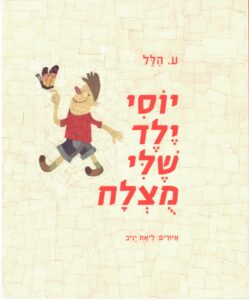 YOSSI, MY WONDERFUL CHILD
YOSSI, MY WONDERFUL CHILD 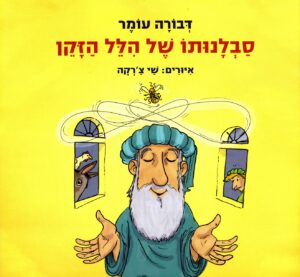 The Patience of Hillel the Elder
The Patience of Hillel the Elder 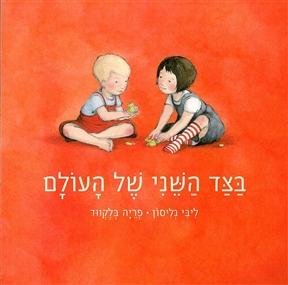 Amy and Louis Hebrew title: “Half A World Away”
Amy and Louis Hebrew title: “Half A World Away” 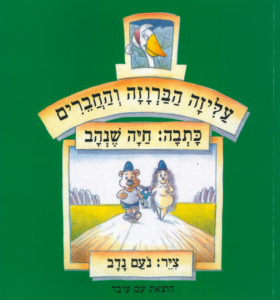 Aliza the Duck and Friends
Aliza the Duck and Friends 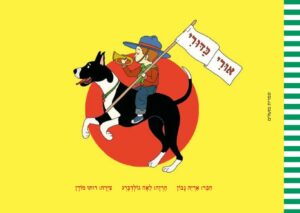 Uri Kadori
Uri Kadori 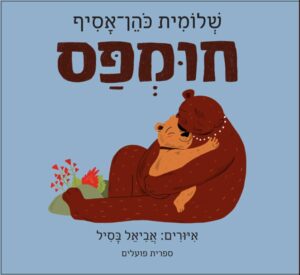 Brownstripe the Bear
Brownstripe the Bear 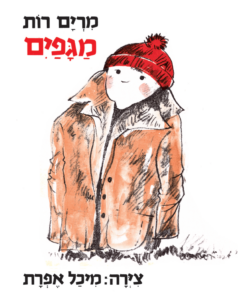 Boots
Boots 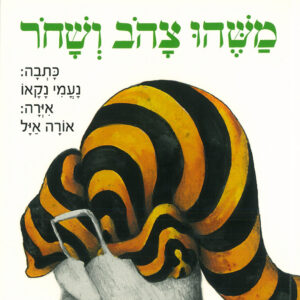 Something Yellow and Black
Something Yellow and Black 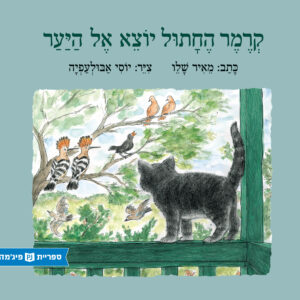 Kramer the Cat Goes into the Forest
Kramer the Cat Goes into the Forest 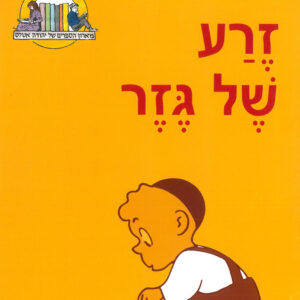 The Carrot Seed
The Carrot Seed 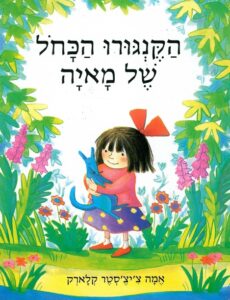 Maya’s Blue Kangaroo
Maya’s Blue Kangaroo 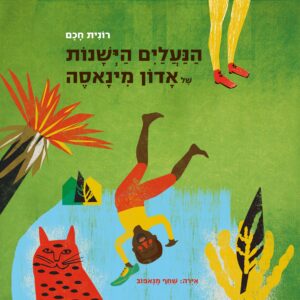 An Old Pair of Shoes
An Old Pair of Shoes 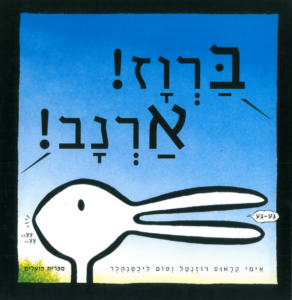 Duck! Rabbit!
Duck! Rabbit! 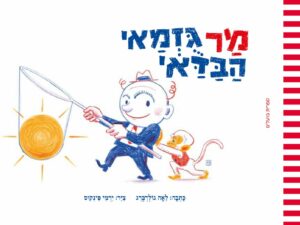 Mr. Fibber the Storyteller
Mr. Fibber the Storyteller 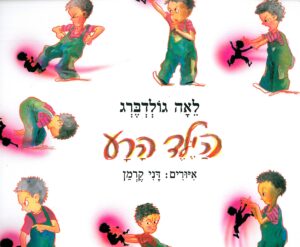 The Naughty Boy
The Naughty Boy 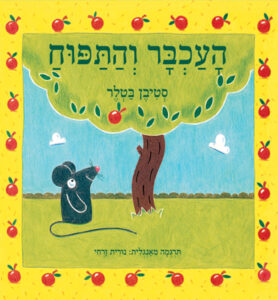 The Mouse and the Apple
The Mouse and the Apple 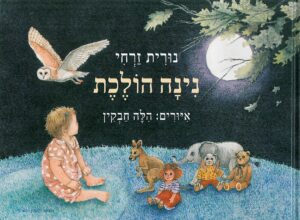 Nina Walks
Nina Walks 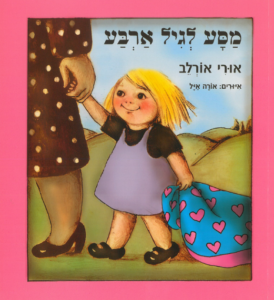 Journey to Age Four
Journey to Age Four 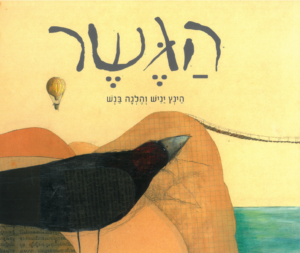 The Bridge
The Bridge 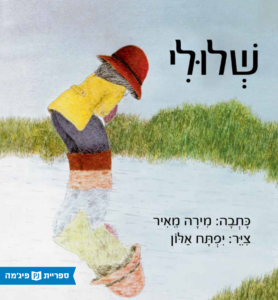 Sheluli
Sheluli 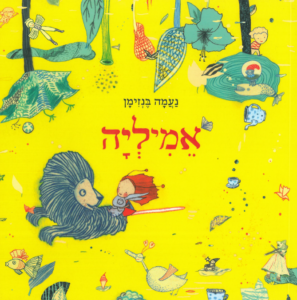 EMILIA
EMILIA 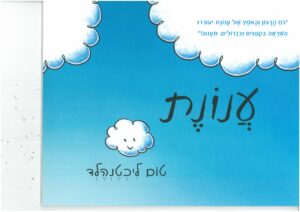 Cloudette
Cloudette 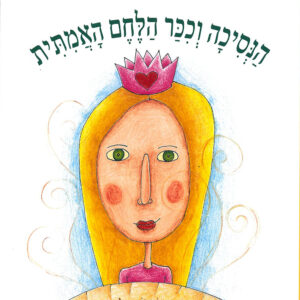 The Princess and the True Loaf of Bread
The Princess and the True Loaf of Bread 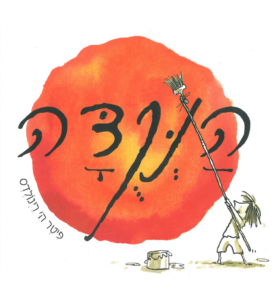 The Dot
The Dot 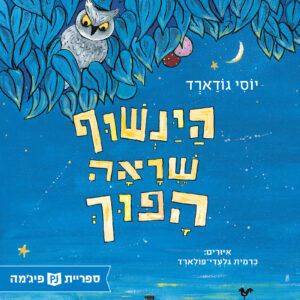 The Backward Owl
The Backward Owl 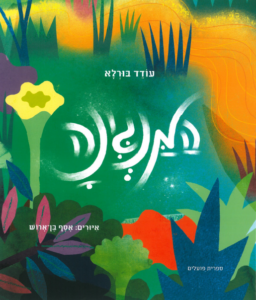 The Melody
The Melody 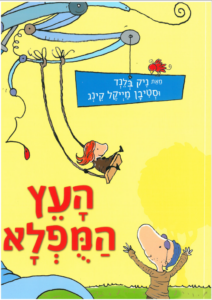 The Magnificent Tree
The Magnificent Tree 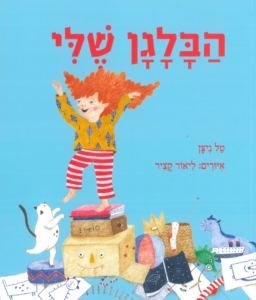 My Mess
My Mess 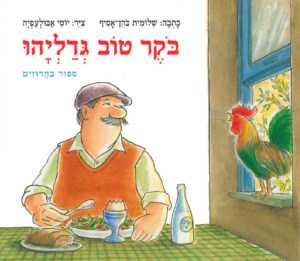 Good Morning, MrGedalyahu
Good Morning, MrGedalyahu 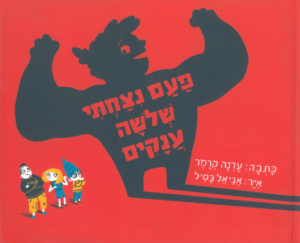 Once I Knocked Down Three Giants
Once I Knocked Down Three Giants 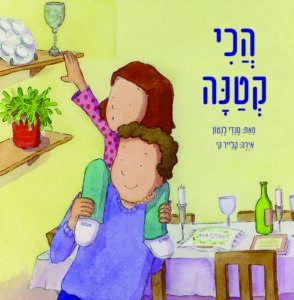 The Littlest Levine
The Littlest Levine 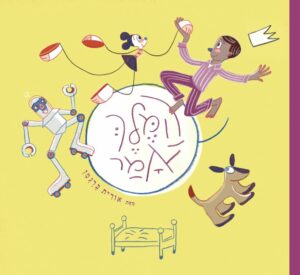 The King Says
The King Says 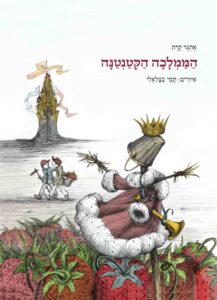 The Teeny-Tiny Kingdom
The Teeny-Tiny Kingdom 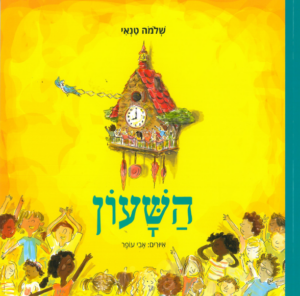 The Clock
The Clock 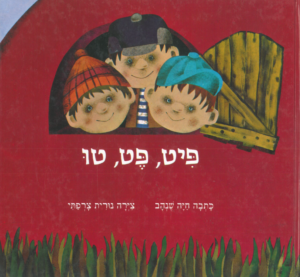 Pit, Pet, Tu (“Chit, Chat, Chatter”)
Pit, Pet, Tu (“Chit, Chat, Chatter”) 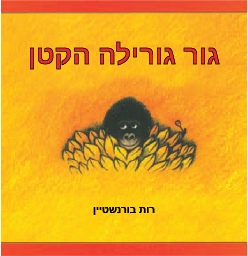 Little Gorilla
Little Gorilla 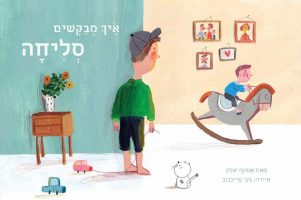 How do you say “I’m sorry”?
How do you say “I’m sorry”? 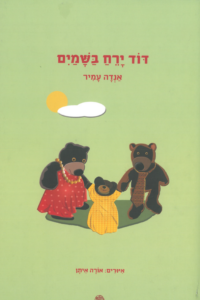 Uncle Moon in the Sky – Collected Poems
Uncle Moon in the Sky – Collected Poems 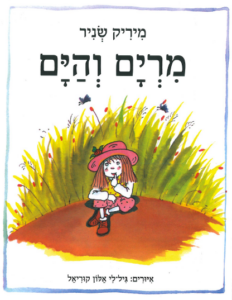 Miriam and the Sea
Miriam and the Sea 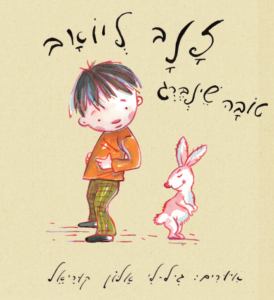 Tail for Yoav
Tail for Yoav 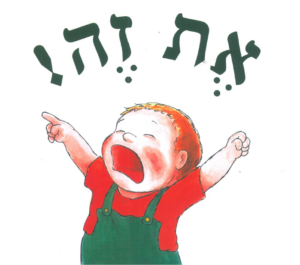 That One!
That One! 






























